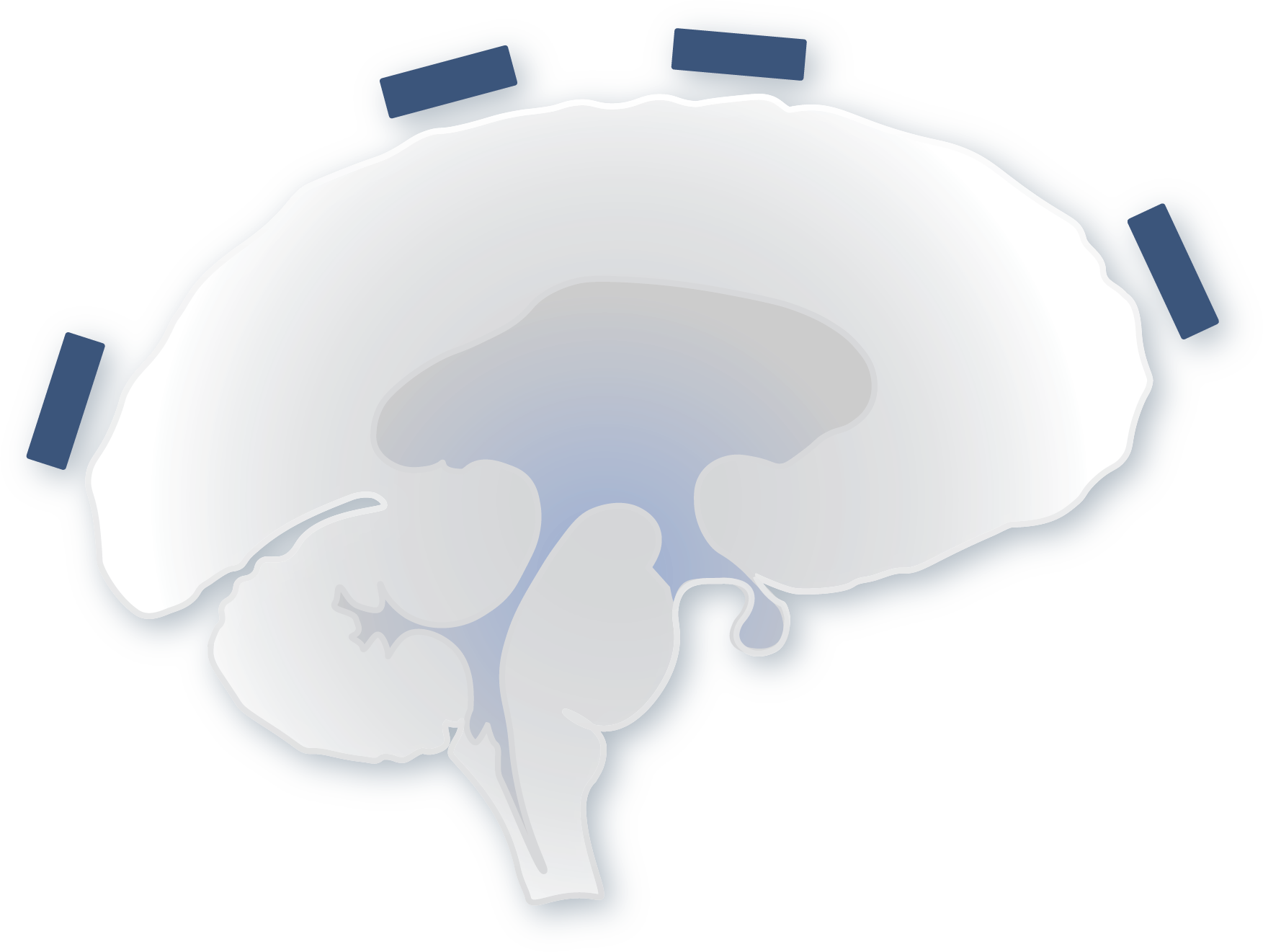

TI introduces a new non-invasive method for sculpting electric fields, enabling, for the first time, steerable, precise deep brain stimulation. This innovation paves the way for targeted, more effective treatments for a wide range of brain disorders.
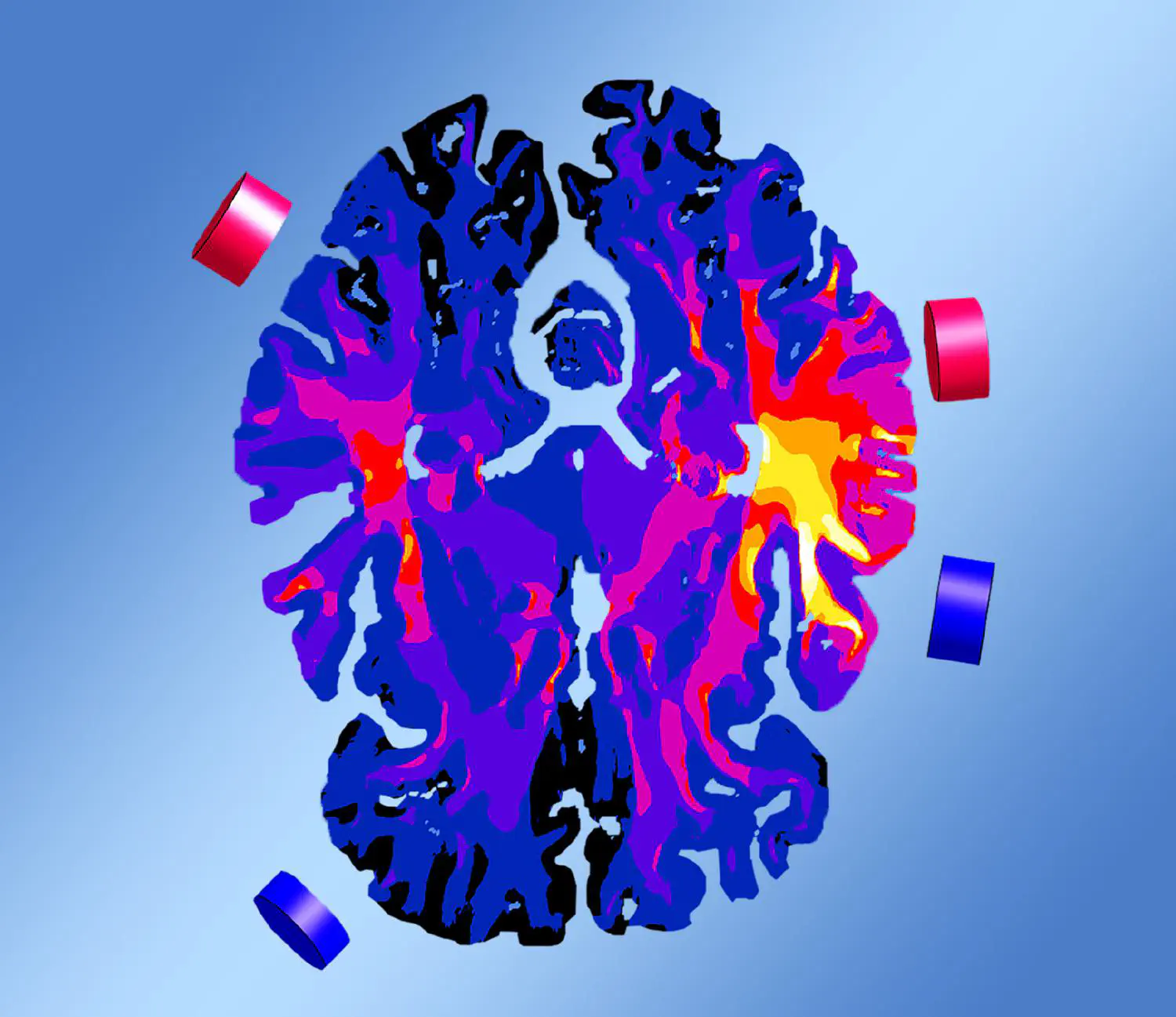
Brain diseases are increasing worldwide due to demographic shifts, population growth, and longer lifespans, with their global economic impact estimated to exceed $5 trillion. These conditions encompass neurodegenerative diseases like Alzheimer’s and Parkinson’s, cerebrovascular disorders such as stroke, mental health challenges like depression and anxiety, and neurological conditions including epilepsy and multiple sclerosis. Other categories include brain tumors, traumatic brain injuries, infectious diseases like meningitis, developmental and genetic disorders, autoimmune and metabolic diseases, as well as neuropsychiatric and functional neurological conditions.
Invasive deep brain stimulation (DBS) with implanted electrodes is used as a treatment for e.g., severe movement disorders, such as Parkinson’s disease. While effective, the risks of brain surgery limit the exploration of alternative brain targets and restrict the potential for broader therapeutic applications.
Neuromodulation offers a promising non-pharmacological treatment by directly regulating abnormal neural activity underlying various brain disorders. Non-invasive brain stimulation (NIBS) techniques like transcranial magnetic stimulation (TMS) and transcranial electrical stimulation (TES) have been widely used in research and clinical settings. However, their ability to reach deeper brain structures often comes at the cost of stronger stimulation to the overlying cortex, increasing the risk of unintended side effects near safety thresholds.
Temporal interference (TI) bridges the gap between classical NIBS technologies and DBS: it enables non- or minimally invasive, steerable stimulation of deep brain structures. This new method paves the way for a transformative stimulation strategy for a wide range of brain disorders, opening new possibilities for safe, effective, and patient-centered therapies.
TI uses two or more high-frequency currents (>1 kHz) that are too high to induce neural firing on their own. When these currents intersect in the brain, they create a low-frequency envelope that is able to modulate neuronal activity.
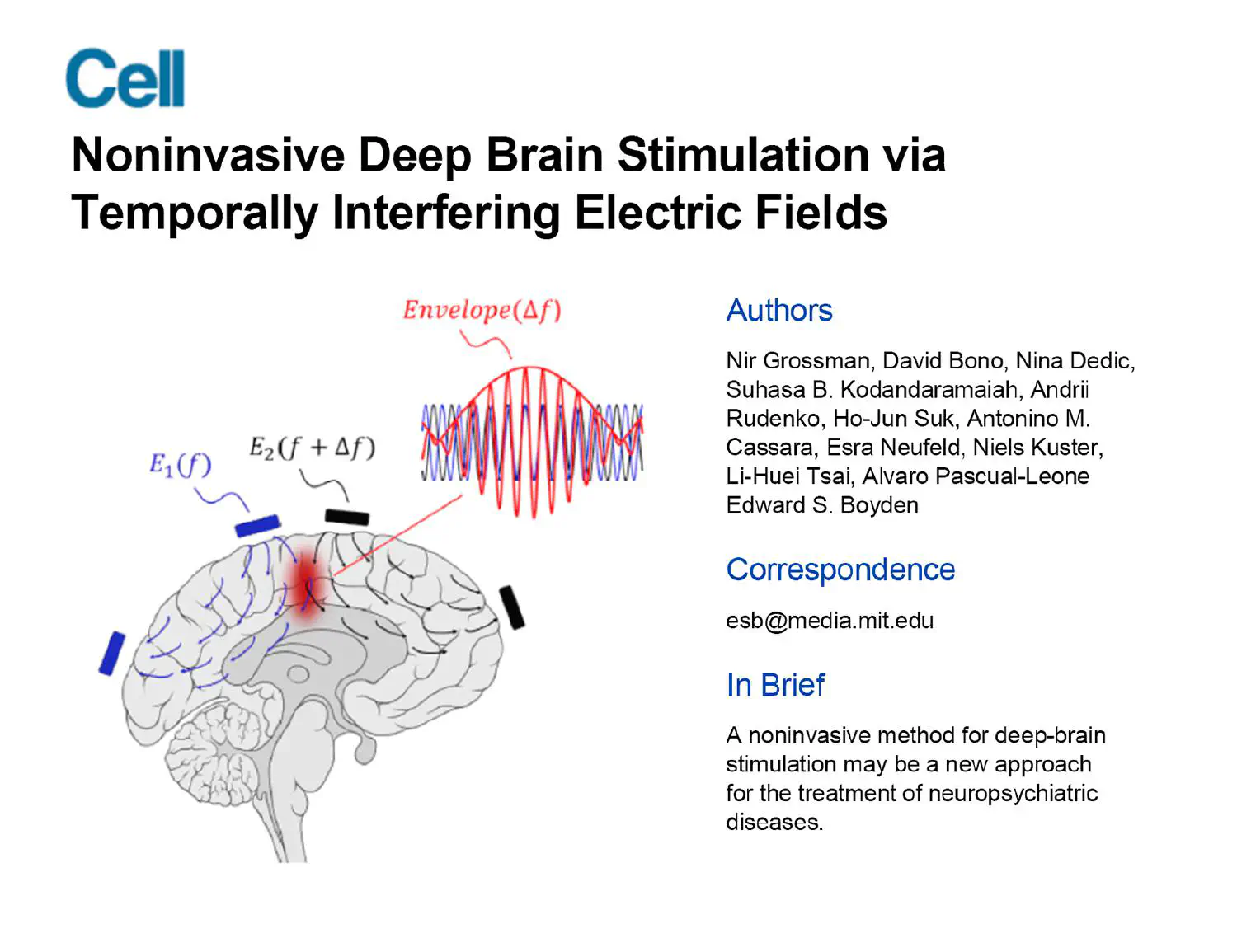
Temporal interference (TI) is a new non-invasive brain stimulation method capable of targeting deep brain structures, unlike conventional transcranial electrical stimulation.
TI stimulation utilizes harmonic electric fields applied through scalp electrodes at slightly different frequencies in the kHz range (e.g., f1 = 10.00 kHz and f2 = 10.01 kHz). The difference between these frequencies creates an envelope, also called beat frequency (here: 10 Hz), which falls within the physiological range of brain activity (1 – 100 Hz), and is able to modulate neural activity. This enables targeted stimulation of specific brain regions without affecting nearby areas. Additionally, adjusting the electrical currents across electrode pairs allows for steering, offering flexibility without the need to move the electrodes.
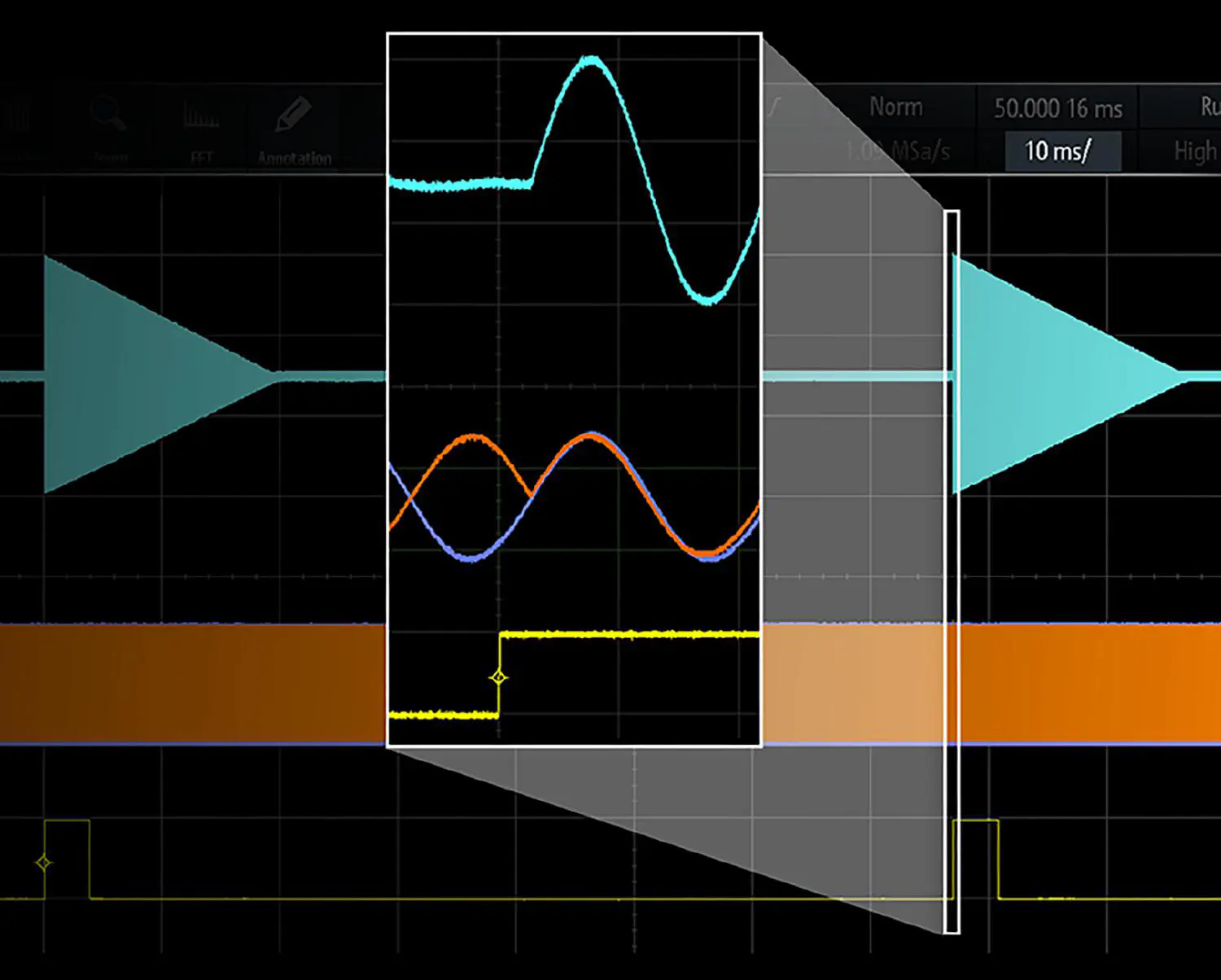
The use of multiple electrical currents has the following advantages, such as:
Building on a growing body of scientific evidence, researchers increasingly recognize the potential of TI stimulation to transform the treatment of many prevalent brain diseases.
July 1, 2025
This edition covers:
This edition covers:
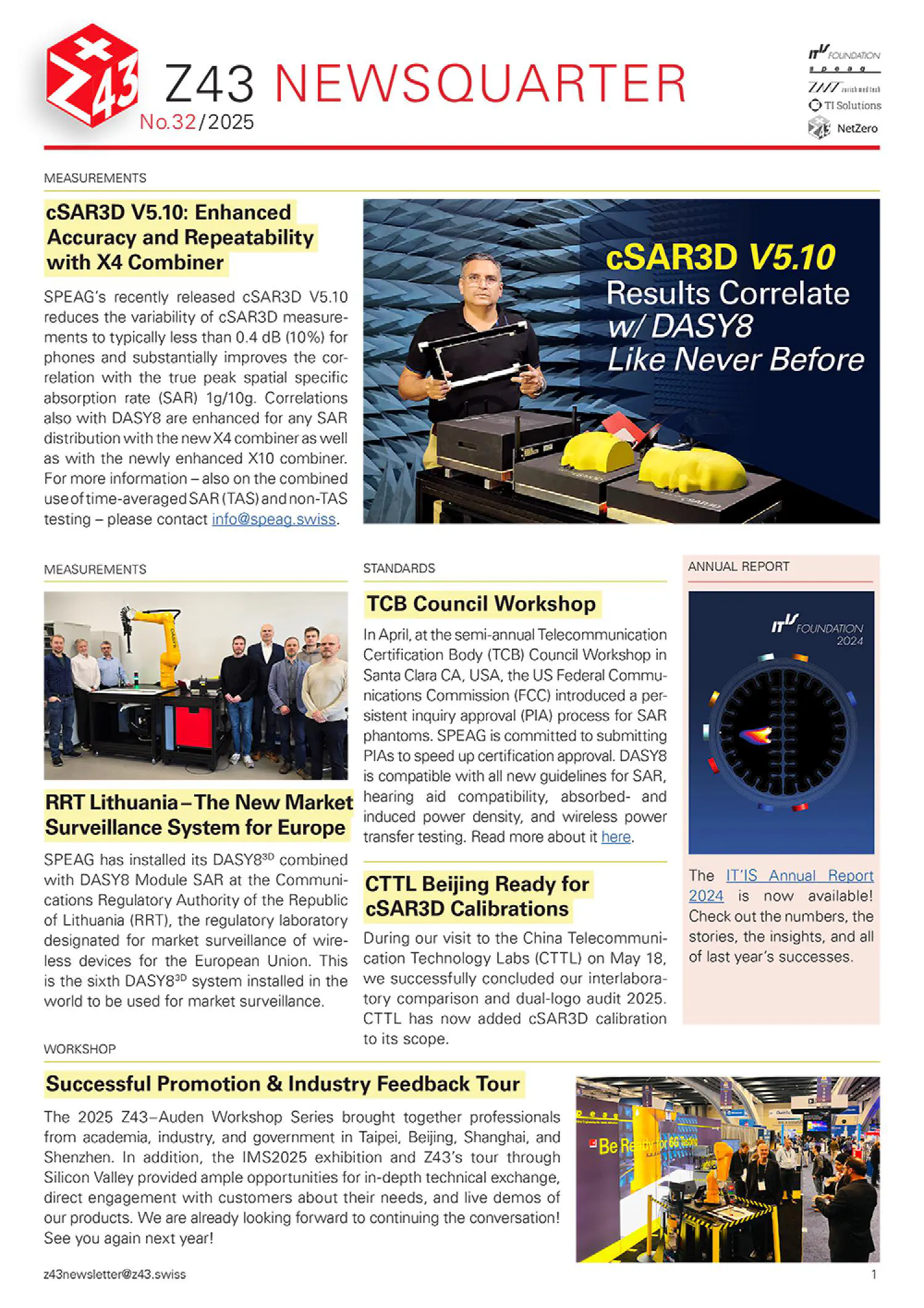
June 5, 2025
Our partner IT’IS has released the latest version of their powerful Temporal Interference Planning tool, TIP V4.0! TIP V4.0 is available to members of TI Solutions Early Adopter Program.
Our partner IT’IS has released the latest version of their powerful Temporal Interference Planning tool, TIP V4.0!
What’s new in TIP V4.0?
TIP V4.0 is available to members of TI Solutions Early Adopter Program.
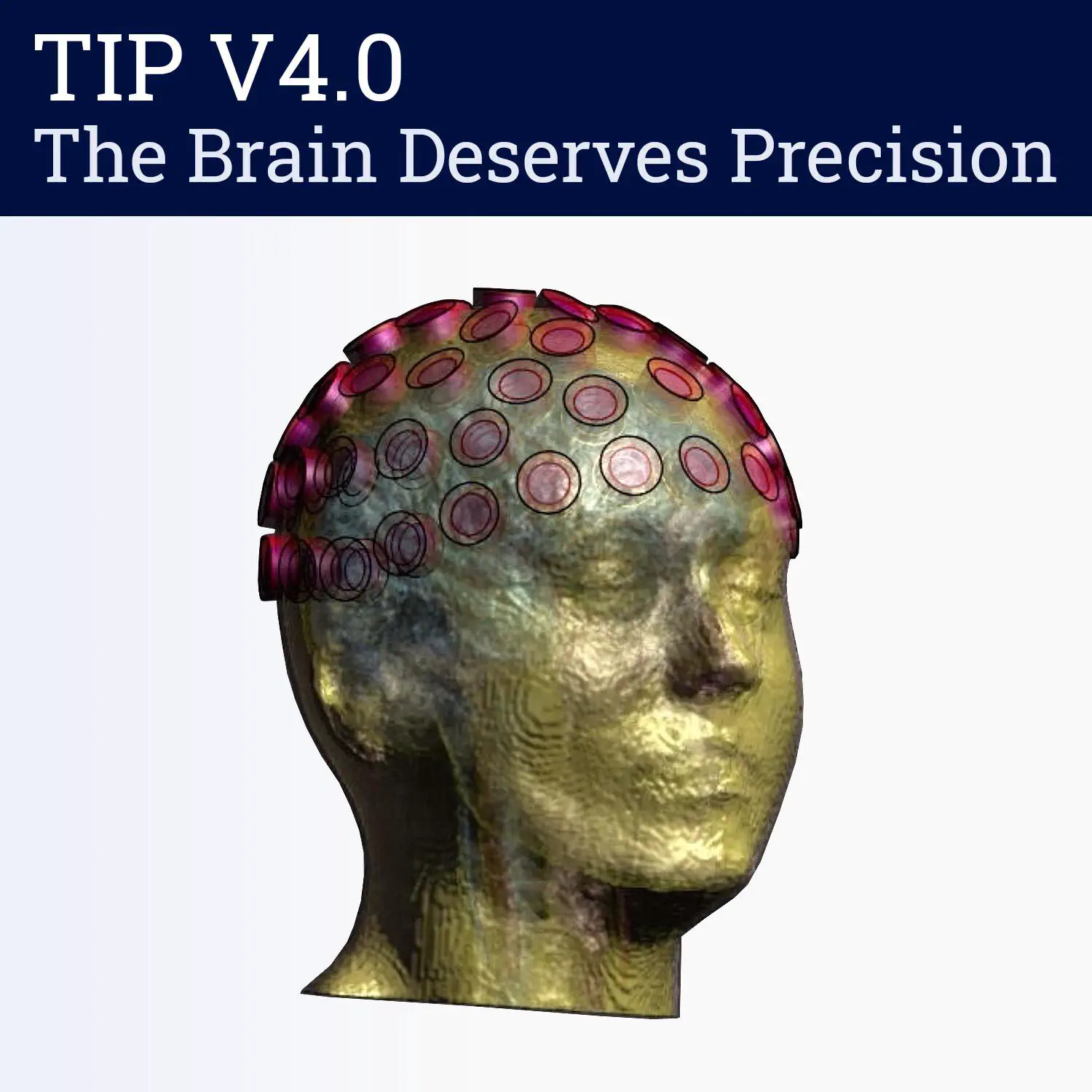
April 25, 2025
Temporal interference stimulation works by applying high-frequency currents via skin electrodes to non-invasively stimulate deep regions of the brain. A recent paper reports the use of multiple carrier frequencies targeting the same region to achieve higher intensity and improved focality. The authors refer to this TI variant as multipolar temporal interference (mTI).
In their study, the authors combined multiple electrode channels and different carrier frequencies (in the range between 975 – 4025 Hz) to create several overlapping amplitude-modulated fields. Rather than using one envelope as in standard TI, this allowed them to control the size and location of the stimulated area more precisely while keeping unwanted side effects – such as scalp sensations or off-target brain stimulation – to a minimum.
Validated in both mice and rhesus macaques, mTI successfully evoked neural activity in deep and small brain structures, such as the superior colliculus, without measurable discomfort or behavioral side effects. The method scales well across different brain sizes and shows promise for both future clinical applications and neuroscience research.
Our TIBS-R system is designed to allow any TI variants, including mTI:
Reference to the publication: Botzanowski B et al. Focal Control of Non-Invasive Deep Brain Stimulation Using Multipolar Temporal Interference. Bioelectron Med. 2025; 11(7), online 27 March. doi:10.1186/s42234-025-00169-6
Temporal interference stimulation works by applying high-frequency currents via skin electrodes to non-invasively stimulate deep regions of the brain. A recent paper reports the use of multiple carrier frequencies targeting the same region to achieve higher intensity and improved focality. The authors refer to this TI variant as multipolar temporal interference (mTI).
In their study, the authors combined multiple electrode channels and different carrier frequencies (in the range between 975 – 4025 Hz) to create several overlapping amplitude-modulated fields. Rather than using one envelope as in standard TI, this allowed them to control the size and location of the stimulated area more precisely while keeping unwanted side effects – such as scalp sensations or off-target brain stimulation – to a minimum.
Validated in both mice and rhesus macaques, mTI successfully evoked neural activity in deep and small brain structures, such as the superior colliculus, without measurable discomfort or behavioral side effects. The method scales well across different brain sizes and shows promise for both future clinical applications and neuroscience research.
Our TIBS-R system is designed to allow any TI variants, including mTI:
Reference to the publication: Botzanowski B et al. Focal Control of Non-Invasive Deep Brain Stimulation Using Multipolar Temporal Interference. Bioelectron Med. 2025; 11(7), online 27 March. doi:10.1186/s42234-025-00169-6

Figure 1: Principle of multipolar temporal interference and increased focality in non-human primates (taken from: Botzanowski B et al. Bioelectron Med. 2025; 11(7), online 27 March).
April 10, 2025
The journal Bioelectromagnetics has launched its first “Special Issue”, with this inaugural edition focused on the dynamic and rapidly advancing field of neurostimulation.
Among the featured contributions are two notable publications, authored in collaboration with our team and other institutions, offering valuable quantitative guidance on exposure limits and broader safety considerations.
The majority of the publications are available via open access – for more information, please check the Bioelectromagnetics website.
The journal Bioelectromagnetics has launched its first “Special Issue”, with this inaugural edition focused on the dynamic and rapidly advancing field of neurostimulation.
Among the featured contributions are two notable publications, authored in collaboration with our team and other institutions, offering valuable quantitative guidance on exposure limits and broader safety considerations.
The majority of the publications are available via open access – for more information, please check the Bioelectromagnetics website.
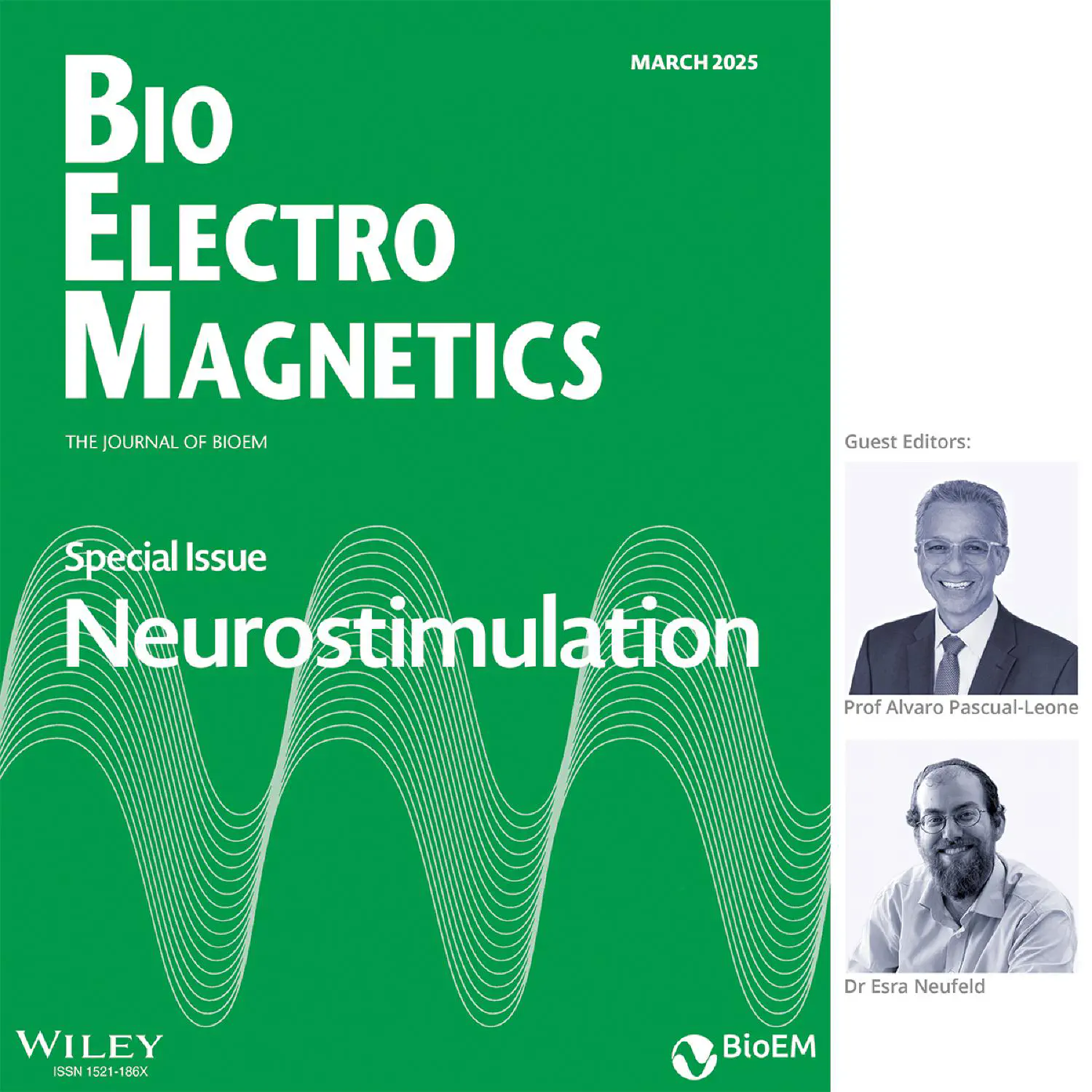
Feb 21, 2025
Last week, members of Z43 partner IT’IS Foundation, together with the teams at Ghent University’s 4BRAIN Lab and the Center for Care & Cure Technology Eindhoven, gathered in Ghent, Belgium, to officially kick-off the project “Minimally Invasive Targeting of Deep Brain Structures to Treat Epilepsy Using Temporal Interference Stimulation”. The project is funded by the Swiss National Science Foundation (SNSF) and Fonds Wetenschappelijk Onderzoek - Vlaanderen (FWO), under the funding scheme Weave, a cross-European initiative in support of cross-border collaborative research projects.
The aim of this project is to establish the foundation for a new paradigm for the use of TI stimulation in the treatment of epilepsy. To achieve this ambitious goal, the consortium combines expertise in (i) TI stimulation hardware design, (ii) computational electromagnetic dosimetry, (iii) neuromodulation modeling, (iv) in vitro and in vivo rodent-model experiments, (v) electrophysiology recordings, and (vi) whole brain imaging. The consortium will leverage the TIBS-R system for this project.
Last week, members of Z43 partner IT’IS Foundation, together with the teams at Ghent University’s 4BRAIN Lab and the Center for Care & Cure Technology Eindhoven, gathered in Ghent, Belgium, to officially kick-off the project “Minimally Invasive Targeting of Deep Brain Structures to Treat Epilepsy Using Temporal Interference Stimulation”. The project is funded by the Swiss National Science Foundation (SNSF) and Fonds Wetenschappelijk Onderzoek - Vlaanderen (FWO), under the funding scheme Weave, a cross-European initiative in support of cross-border collaborative research projects.
The aim of this project is to establish the foundation for a new paradigm for the use of TI stimulation in the treatment of epilepsy. To achieve this ambitious goal, the consortium combines expertise in (i) TI stimulation hardware design, (ii) computational electromagnetic dosimetry, (iii) neuromodulation modeling, (iv) in vitro and in vivo rodent-model experiments, (v) electrophysiology recordings, and (vi) whole brain imaging. The consortium will leverage the TIBS-R system for this project.
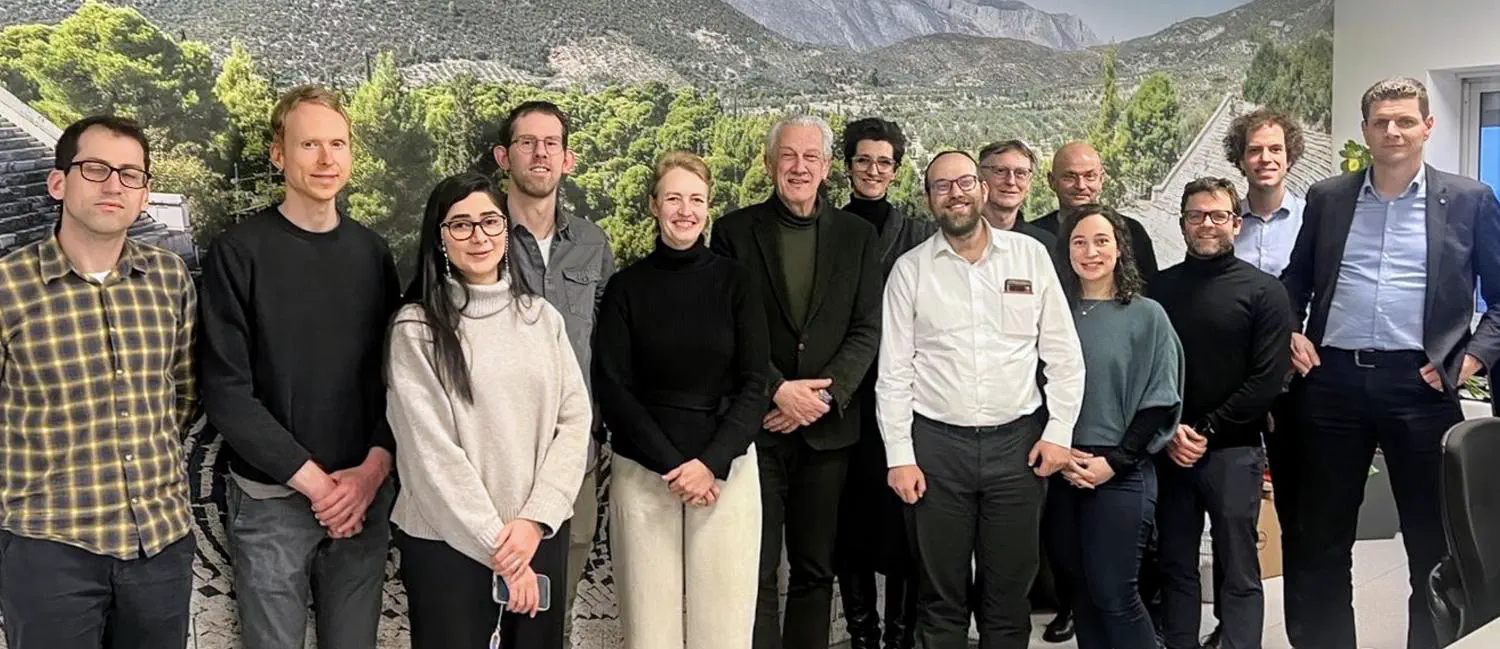
Feb 06, 2025
TI Solutions and Z43 partner ZMT are excited to present their latest neuromodulation and simulation tools at the upcoming 6th Brain Stimulation Conference in Kobe, Japan, February 23 – 26, 2025. In addition, experts of the IT’IS Foundation will present their latest research.
Meet us at Booth #23+24 for a demonstration of
Join our Breakfast Workshop “From Exposure Physics to Physiology: Next-Generation Neuromodulation Research with Sim4Life”:
For more details and registration, visit the ZMT workshop website.
Join us at Symposium 4H “Advanced In Silico Techniques for Next-Generation Stimulation and Sensing Technologies / Advances in Automated Algorithms, Robotics, and Coil Designs for TMS”:
13:30 – 13:45 hrs
Highly Personalized Modeling of Stimulation-Driven Brain Network Responses for Next-Generation Neuromodulation
Fariba Karimi, Taylor H. Newton, Melanie Steiner, Javier Garcia Ordóñez, Elena Beanato, Friedhelm C. Hummel, Niels Kuster, Esra Neufeld
13:45 – 14:00 hrs
In Silico Safety Investigation of Temporal Interference Stimulation and Electric Stimulation in the Presence of Implants
Antonino M. Cassarà, Fariba Karimi, Taylor Newton, Myles H. Capstick, Niels Kuster, Esra Neufeld, Tobias Ruff
14:00 – 14:15 hrs
Insights on Neural Sensing from Biophysically-Detailed Models of Neural Circuits
Joseph Tharayil, Antonino M. Cassarà, Bryn Lloyd, Silvia Farcito, Niels Kuster, Esra Neufeld, Michael Reimann, Werner Van Geit
14:15 – 14:30 hrs
Biophysics-Based Surrogate Modeling for Neural Interface Optimization, Activity Mapping, and Closed-Loop Control of Electroceuticals
Esra Neufeld, Werner Van Geit, Javier Garcia Ordóñez, Antonino M. Cassarà, Niels Kuster
We look forward to interesting exchange in Kobe!
TI Solutions and Z43 partner ZMT are excited to present their latest neuromodulation and simulation tools at the upcoming 6th Brain Stimulation Conference in Kobe, Japan, February 23 – 26, 2025. In addition, experts of the IT’IS Foundation will present their latest research.
Meet us at Booth #23+24 for a demonstration of
Join our Breakfast Workshop “From Exposure Physics to Physiology: Next-Generation Neuromodulation Research with Sim4Life”:
For more details and registration, visit the ZMT workshop website.
Join us at Symposium 4H “Advanced In Silico Techniques for Next-Generation Stimulation and Sensing Technologies / Advances in Automated Algorithms, Robotics, and Coil Designs for TMS”:
13:30 – 13:45 hrs
Highly Personalized Modeling of Stimulation-Driven Brain Network Responses for Next-Generation Neuromodulation
Fariba Karimi, Taylor H. Newton, Melanie Steiner, Javier Garcia Ordóñez, Elena Beanato, Friedhelm C. Hummel, Niels Kuster, Esra Neufeld
13:45 – 14:00 hrs
In Silico Safety Investigation of Temporal Interference Stimulation and Electric Stimulation in the Presence of Implants
Antonino M. Cassarà, Fariba Karimi, Taylor Newton, Myles H. Capstick, Niels Kuster, Esra Neufeld, Tobias Ruff
14:00 – 14:15 hrs
Insights on Neural Sensing from Biophysically-Detailed Models of Neural Circuits
Joseph Tharayil, Antonino M. Cassarà, Bryn Lloyd, Silvia Farcito, Niels Kuster, Esra Neufeld, Michael Reimann, Werner Van Geit
14:15 – 14:30 hrs
Biophysics-Based Surrogate Modeling for Neural Interface Optimization, Activity Mapping, and Closed-Loop Control of Electroceuticals
Esra Neufeld, Werner Van Geit, Javier Garcia Ordóñez, Antonino M. Cassarà, Niels Kuster
We look forward to interesting exchange in Kobe!
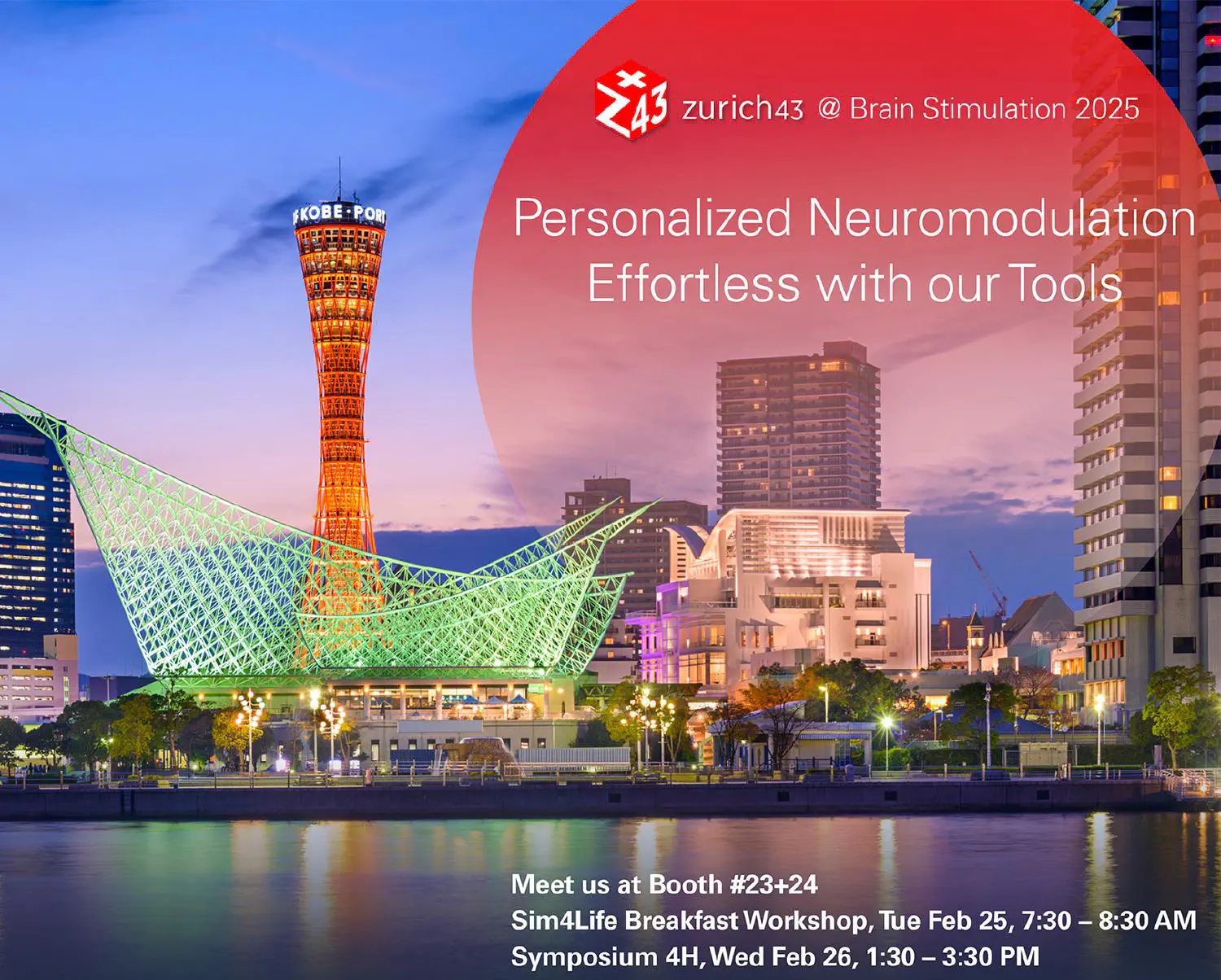
Jan 30, 2025
The TIBS-R software has been upgraded, adding the capability of delivering envelope waveforms of arbitrary shapes with minimal latency upon receiving an external trigger. This new feature builds upon the proven phase-modulated temporal interference (TI) mode and allows the application of currents from 2 – 8 channels that combine to create a programmable envelope shape in the target region.
In the new mode, instead of continuously repeating the programmed envelope, the modulation envelope stops – typically in anti-phase, to ensure that the currents sum to zero – until a trigger is received. Upon triggering, the pattern plays once, generating a TI pulse. When combined with a feedback loop – e.g., from electroencephalography (EEG), which can be recorded during TI stimulation with the EEG filter solution of our partner organization IT’IS Foundation – this feature facilitates the realization of flexible, closed-loop stimulation protocols.
Version 3.2 of the IT’IS TI Planning tool, a computational online tool designed to simplify the optimization of targeted TI neurostimulation protocols for the TIBS-R device, will soon be released. This update includes artificial-intelligence-powered optimized placement of fiducial points and a comprehensive multivariable optimization pipeline, for analysis of the entire set of possible setups.
For further information about our TIBS-R system, please contact us.
The TIBS-R software has been upgraded, adding the capability of delivering envelope waveforms of arbitrary shapes with minimal latency upon receiving an external trigger. This new feature builds upon the proven phase-modulated temporal interference (TI) mode and allows the application of currents from 2 – 8 channels that combine to create a programmable envelope shape in the target region.
In the new mode, instead of continuously repeating the programmed envelope, the modulation envelope stops – typically in anti-phase, to ensure that the currents sum to zero – until a trigger is received. Upon triggering, the pattern plays once, generating a TI pulse. When combined with a feedback loop – e.g., from electroencephalography (EEG), which can be recorded during TI stimulation with the EEG filter solution of our partner organization IT’IS Foundation – this feature facilitates the realization of flexible, closed-loop stimulation protocols.
Version 3.2 of the IT’IS TI Planning tool, a computational online tool designed to simplify the optimization of targeted TI neurostimulation protocols for the TIBS-R device, will soon be released. This update includes artificial-intelligence-powered optimized placement of fiducial points and a comprehensive multivariable optimization pipeline, for analysis of the entire set of possible setups.
For further information about our TIBS-R system, please contact us.
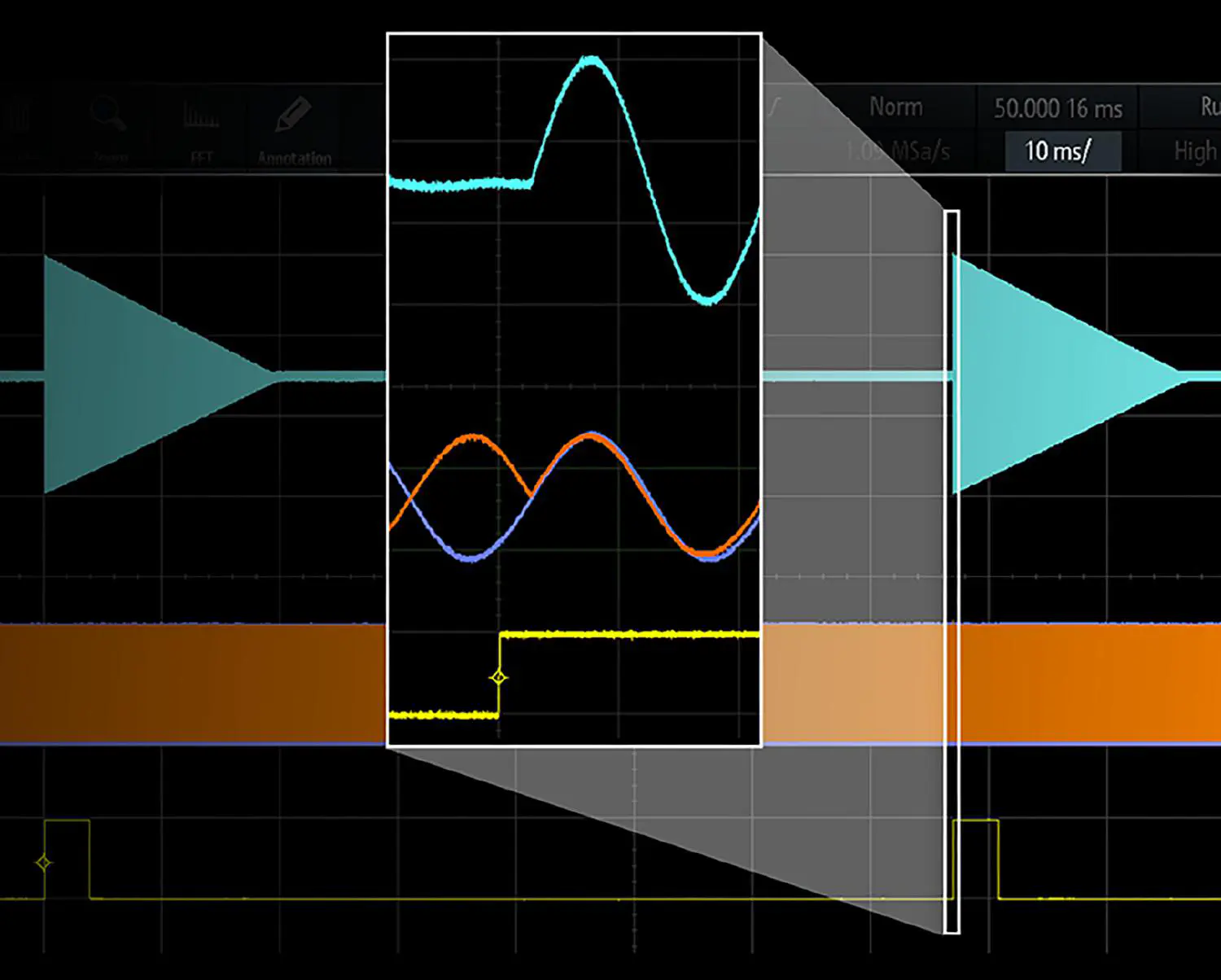
Jan 09, 2025
TI Solutions and Z43 partner ZMT are excited to present their latest products for optimized targeted neuromodulation at the upcoming North American Neuromodulation Society 28th Annual Meeting (NANS) in Orlando, Florida, USA, January 30 – February 1, 2025.
Join us at Booth #445 for a demonstration of
Don’t miss the poster presentations from the IT’IS Foundation, who will share the latest research findings:
Intelligent Meta-Modeling and Rapid Stimulation Predictors Enable In Silico Energy and Performance Optimization of Bioelectronic Implants
Javier García Ordóñez, Werner Van Geit, Antonino M. Cassarà, Esra Neufeld, and Niels Kuster
Electrical Impedance Tomography and Model-Based Control for Neural Interfaces on Complex Nerves
Esra Neufeld, Werner Van Geit, Simon Bolt, and Niels Kuster
Planning Tool for Personalized Temporal Interference Stimulation Optimization
Melanie Steiner, Esra Neufeld, Odei Maiz, Dustin Kaiser, Bryn Lloyd, Silvia Farcito
We look forward to meeting you in Orlando!
TI Solutions and Z43 partner ZMT are excited to present their latest products for optimized targeted neuromodulation at the upcoming North American Neuromodulation Society 28th Annual Meeting (NANS) in Orlando, Florida, USA, January 30 – February 1, 2025.
Join us at Booth #445 for a demonstration of
Don’t miss the poster presentations from the IT’IS Foundation, who will share the latest research findings:
Intelligent Meta-Modeling and Rapid Stimulation Predictors Enable In Silico Energy and Performance Optimization of Bioelectronic Implants
Javier García Ordóñez, Werner Van Geit, Antonino M. Cassarà, Esra Neufeld, and Niels Kuster
Electrical Impedance Tomography and Model-Based Control for Neural Interfaces on Complex Nerves
Esra Neufeld, Werner Van Geit, Simon Bolt, and Niels Kuster
Planning Tool for Personalized Temporal Interference Stimulation Optimization
Melanie Steiner, Esra Neufeld, Odei Maiz, Dustin Kaiser, Bryn Lloyd, Silvia Farcito
We look forward to meeting you in Orlando!
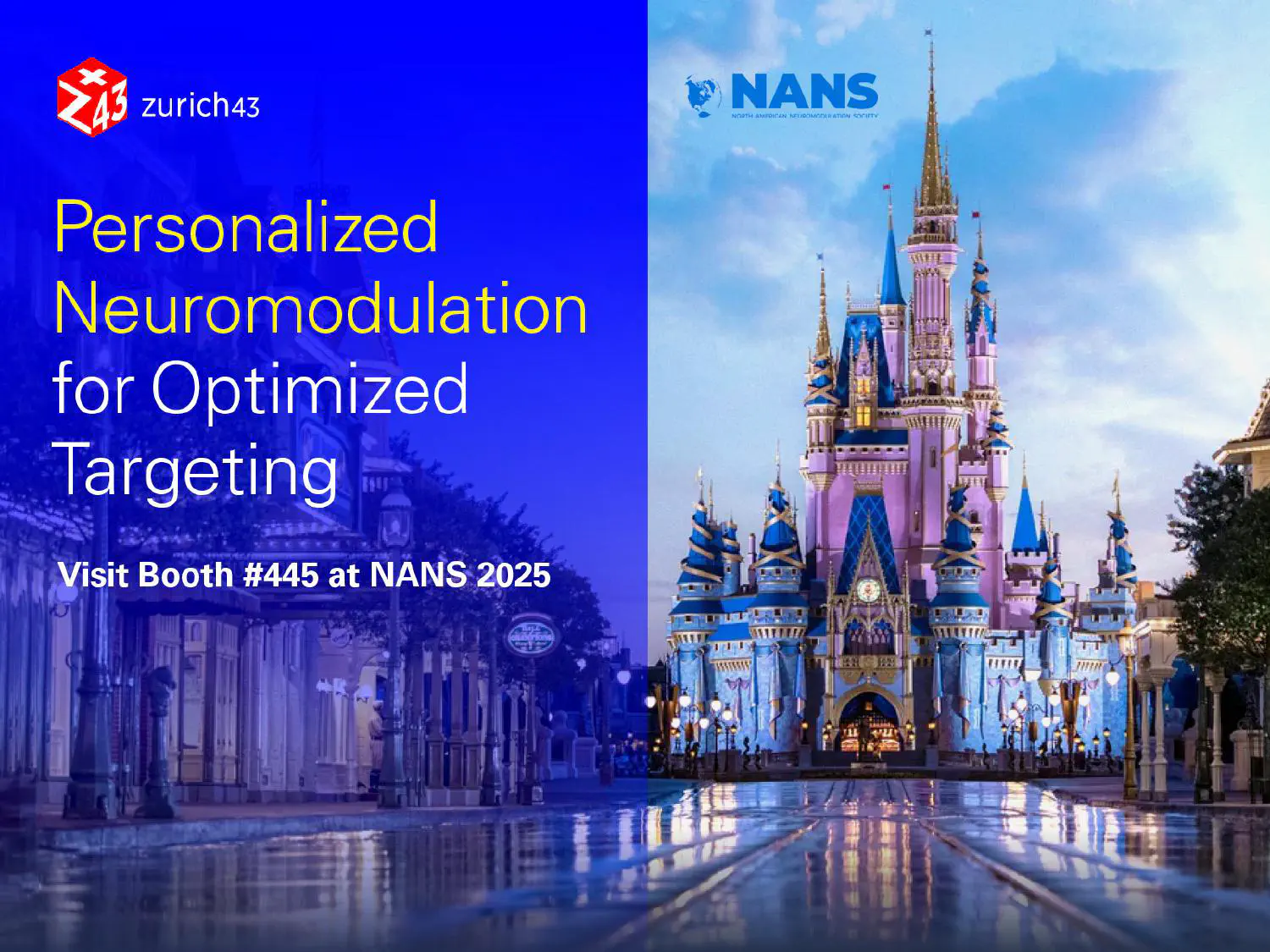
Sept 25 – 26, 2024
TI Solutions experts exhibited the first International Meeting on Temporal Interference Brain Stimulation UK DRI Centre at Imperial in London, UK, on Sept 25 – 26, 2024, where the community came together to discuss ideas, share results, and exchange insights.
The two days were filled with interesting research results and key takeaways that will help drive future progress. Our experts were joined by colleagues from Z43 partner IT’IS Foundation who contributed with presentations on “Principles for TI Stimulation Electronic Hardware, “Principles of TI stimulation field modeling”, and “Safety Considerations for TI Stimulation”.
The full program of the UK DRI Workshop is accessible on the Imperial College website.
Thank you to the organizers – we are excited to see what’s next!
TI Solutions experts exhibited the first International Meeting on Temporal Interference Brain Stimulation UK DRI Centre at Imperial in London, UK, on Sept 25 – 26, 2024, where the community came together to discuss ideas, share results, and exchange insights.
The two days were filled with interesting research results and key takeaways that will help drive future progress. Our experts were joined by colleagues from Z43 partner IT’IS Foundation who contributed with presentations on “Principles for TI Stimulation Electronic Hardware, “Principles of TI stimulation field modeling”, and “Safety Considerations for TI Stimulation”.
The full program of the UK DRI Workshop is accessible on the Imperial College website.
Thank you to the organizers – we are excited to see what’s next!
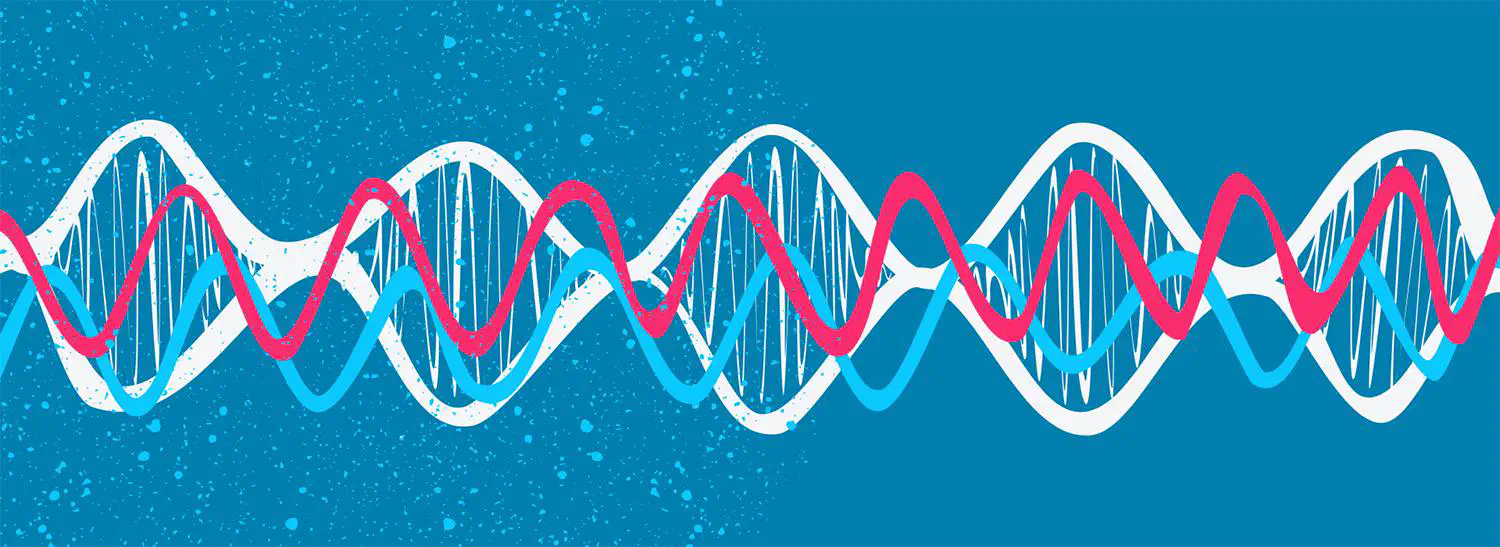
Aug 27, 2024
We are pleased to announce the release of TIBS-R V3.0! This upgrade of our temporal interference (TI) stimulation system improves the accuracy of the currents in the presence of large variations in electrode contacts and further reduces second-order intermodulation products (IM2). When used in conjunction with our electroencephalography (EEG) filter solution, IM2 products are reduced to well below the EEG noise floor, allowing artifact-free recordings during stimulating. This opens up new possibilities for closed-loop EEG-based stimulation protocols. A wireless charging option extends TIBS-R’s operating time, e.g., for overnight experiments.
TIBS-R is certified for electrical safety according to IEC 60601-1:2005 + A1:2012 + A2:2020 and designed to meet the needs of rigorous, innovative, and advanced research. It consists of a high-precision, broadband-intelligent current source, an electrode connection box, and hardware-based input and output interfaces. The Python and MATLAB-compatible application programming interface allows the creation of complex stimulation protocols, as well as integration with EEG and other equipment for sophisticated experimental setups.
Version 3.0 of the TI Planning tool, a computational online tool designed to simplify the optimization of targeted TI neurostimulation protocols for the TIBS-R device, will soon be released. This update offers easy-to-apply personalization of stimulation using a novel AI segmentation implementation of magnetic resonance imaging data that has been specifically developed for TI.
For further information about our TIBS-R system, please contact us. For more information about TIP V3.0, check out this YouTube video.
We are pleased to announce the release of TIBS-R V3.0! This upgrade of our temporal interference (TI) stimulation system improves the accuracy of the currents in the presence of large variations in electrode contacts and further reduces second-order intermodulation products (IM2). When used in conjunction with our electroencephalography (EEG) filter solution, IM2 products are reduced to well below the EEG noise floor, allowing artifact-free recordings during stimulating. This opens up new possibilities for closed-loop EEG-based stimulation protocols. A wireless charging option extends TIBS-R’s operating time, e.g., for overnight experiments.
TIBS-R is certified for electrical safety according to IEC 60601-1:2005 + A1:2012 + A2:2020 and designed to meet the needs of rigorous, innovative, and advanced research. It consists of a high-precision, broadband-intelligent current source, an electrode connection box, and hardware-based input and output interfaces. The Python and MATLAB-compatible application programming interface allows the creation of complex stimulation protocols, as well as integration with EEG and other equipment for sophisticated experimental setups.
Version 3.0 of the TI Planning tool, a computational online tool designed to simplify the optimization of targeted TI neurostimulation protocols for the TIBS-R device, will soon be released. This update offers easy-to-apply personalization of stimulation using a novel AI segmentation implementation of magnetic resonance imaging data that has been specifically developed for TI.
For further information about our TIBS-R system, please contact us. For more information about TIP V3.0, check out this YouTube video.
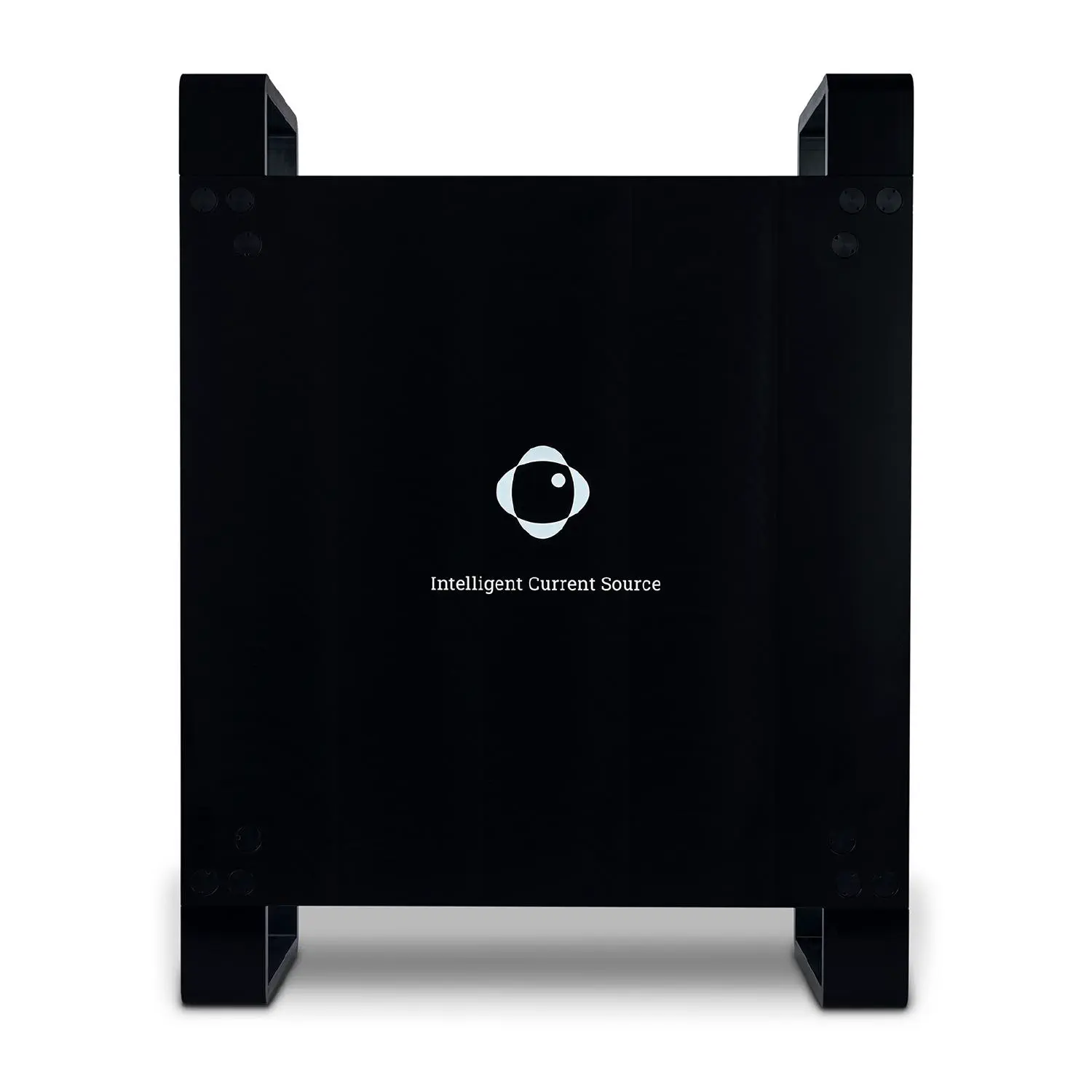
Feb 20, 2024
Many research groups would like to perform closed-loop temporal interference stimulation studies. Our partner, the IT’IS Foundation, has developed brand new filters specifically for the our TIBS-R device that allow uncompromised high-density encephalogram (EEG) recordings during stimulation.
Unlike other brain stimulation modalities, high-frequency temporal interference (TI) stimulation in principle allows for recording of an EEG during stimulation – provided that the TI device does not generate intermodulation voltages and high-order filters are used between the EEG electrodes and the EEG recording system – opening up the possibility for researchers to monitor stimulation response and investigate new closed-loop stimulation strategies that were previously not possible.
IT’IS, in collaboration with Nir Grossman’s group at Imperial College London, developed high-end battery-powered active filters. A low-pass filter – designed for use with passive EEG electrodes – for either 128 or 256 channels has been built for the high-density EEG systems manufactured by Electrical Geodesics, Inc. (EGI), and 32-channel modules are available for the systems of BrainProducts. In addition, a passive high-pass filter for each of the 8 stimulation channels of the TIBS-R device, was developed to suppress low frequency noise and any low-level intermodulation.
The new filter solution has been extensively tested in collaboration with the University Hospitals of Zurich.
More information is available under this link on our website.
Many research groups would like to perform closed-loop temporal interference stimulation studies. Our partner, the IT’IS Foundation, has developed brand new filters specifically for the our TIBS-R device that allow uncompromised high-density encephalogram (EEG) recordings during stimulation.
Unlike other brain stimulation modalities, high-frequency temporal interference (TI) stimulation in principle allows for recording of an EEG during stimulation – provided that the TI device does not generate intermodulation voltages and high-order filters are used between the EEG electrodes and the EEG recording system – opening up the possibility for researchers to monitor stimulation response and investigate new closed-loop stimulation strategies that were previously not possible.
IT’IS, in collaboration with Nir Grossman’s group at Imperial College London, developed high-end battery-powered active filters. A low-pass filter – designed for use with passive EEG electrodes – for either 128 or 256 channels has been built for the high-density EEG systems manufactured by Electrical Geodesics, Inc. (EGI), and 32-channel modules are available for the systems of BrainProducts. In addition, a passive high-pass filter for each of the 8 stimulation channels of the TIBS-R device, was developed to suppress low frequency noise and any low-level intermodulation.
The new filter solution has been extensively tested in collaboration with the University Hospitals of Zurich.
More information is available under this link on our website.
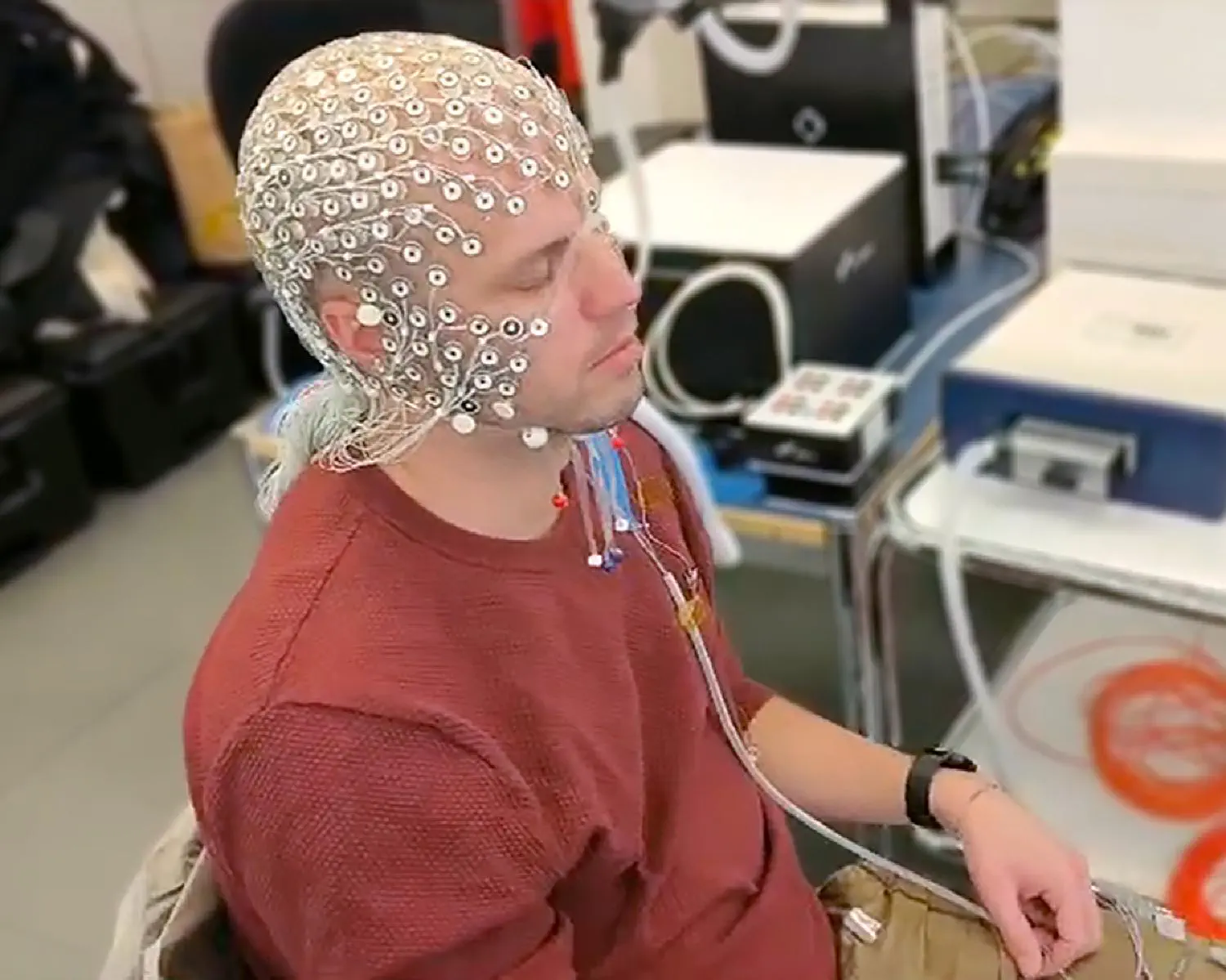
Aug 3, 2023
We are pleased to announce the release of TIBS-R V2.0! This upgrade of our temporal interference (TI) system offers an important new feature, i.e., multi-channel phase modulation. This allows researchers to generate complex modulation waveforms inside the brain where the different currents overlap, for a wider range of experimental possibilities. Also included in the upgrade are improvements in the device’s reliability and stability.
Designed to meet the needs of rigorous research, TIBS-R V2.0 consists of a high-precision broadband intelligent current source (ICS), electrode connection box (ECB), and hardware-based in- and output interfaces. Built on the existing Python and MatLab-compatible application programming interface, V2.0 supports a diverse range of experimental protocols. The next version of the online TI Planning tool TIP V2.0 – developed by our partner, the IT’IS Foundation, specifically for TIBS-R V2.0 – supports all of the new features of TIBS-R V2.0 and reduces optimization of targeted neurostimulation protocols to three simple steps.
For further information about our TIBS-R system, please contact us. For more information about TIP V2.0, check out this YouTube video.
We are pleased to announce the release of TIBS-R V2.0! This upgrade of our temporal interference (TI) system offers an important new feature, i.e., multi-channel phase modulation. This allows researchers to generate complex modulation waveforms inside the brain where the different currents overlap, for a wider range of experimental possibilities. Also included in the upgrade are improvements in the device’s reliability and stability.
Designed to meet the needs of rigorous research, TIBS-R V2.0 consists of a high-precision broadband intelligent current source (ICS), electrode connection box (ECB), and hardware-based in- and output interfaces. Built on the existing Python and MatLab-compatible application programming interface, V2.0 supports a diverse range of experimental protocols. The next version of the online TI Planning tool TIP V2.0 – developed by our partner, the IT’IS Foundation, specifically for TIBS-R V2.0 – supports all of the new features of TIBS-R V2.0 and reduces optimization of targeted neurostimulation protocols to three simple steps.
For further information about our TIBS-R system, please contact us. For more information about TIP V2.0, check out this YouTube video.
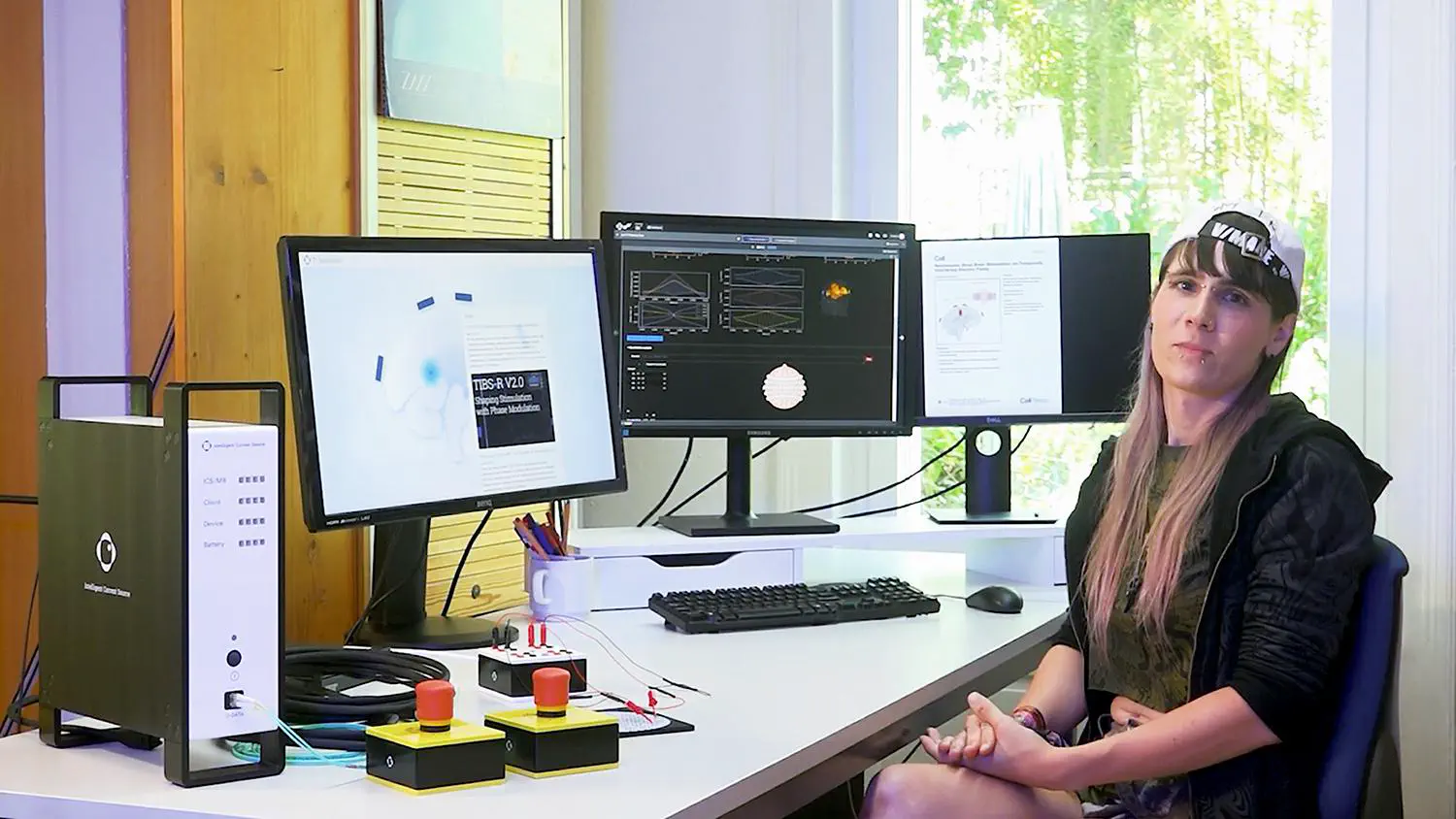
Jan 5, 2023
After exactly 3 years of intense collaboration with Z43 partners, we have completed the development of our Temporal Interference Brain Stimulator for Research (TIBS-R).
Today, we release Version 1.02, which will be demonstrated next week at NANS2023 in Las Vegas. The design of the device and the maximally flexible software are optimized for advanced TI brain stimulation research. We look forward to engaging with those research groups who will receive devices through our Early Adopter Program, and we will continue working to optimize the device to facilitate the most advanced TI research.
For further information about our TIBS-R system, please contact us.
After exactly 3 years of intense collaboration with Z43 partners, we have completed the development of our Temporal Interference Brain Stimulator for Research (TIBS-R).
Today, we release Version 1.02, which will be demonstrated next week at NANS2023 in Las Vegas. The design of the device and the maximally flexible software are optimized for advanced TI brain stimulation research. We look forward to engaging with those research groups who will receive devices through our Early Adopter Program, and we will continue working to optimize the device to facilitate the most advanced TI research.
For further information about our TIBS-R system, please contact us. To find out more about our technology, check out this YouTube video.
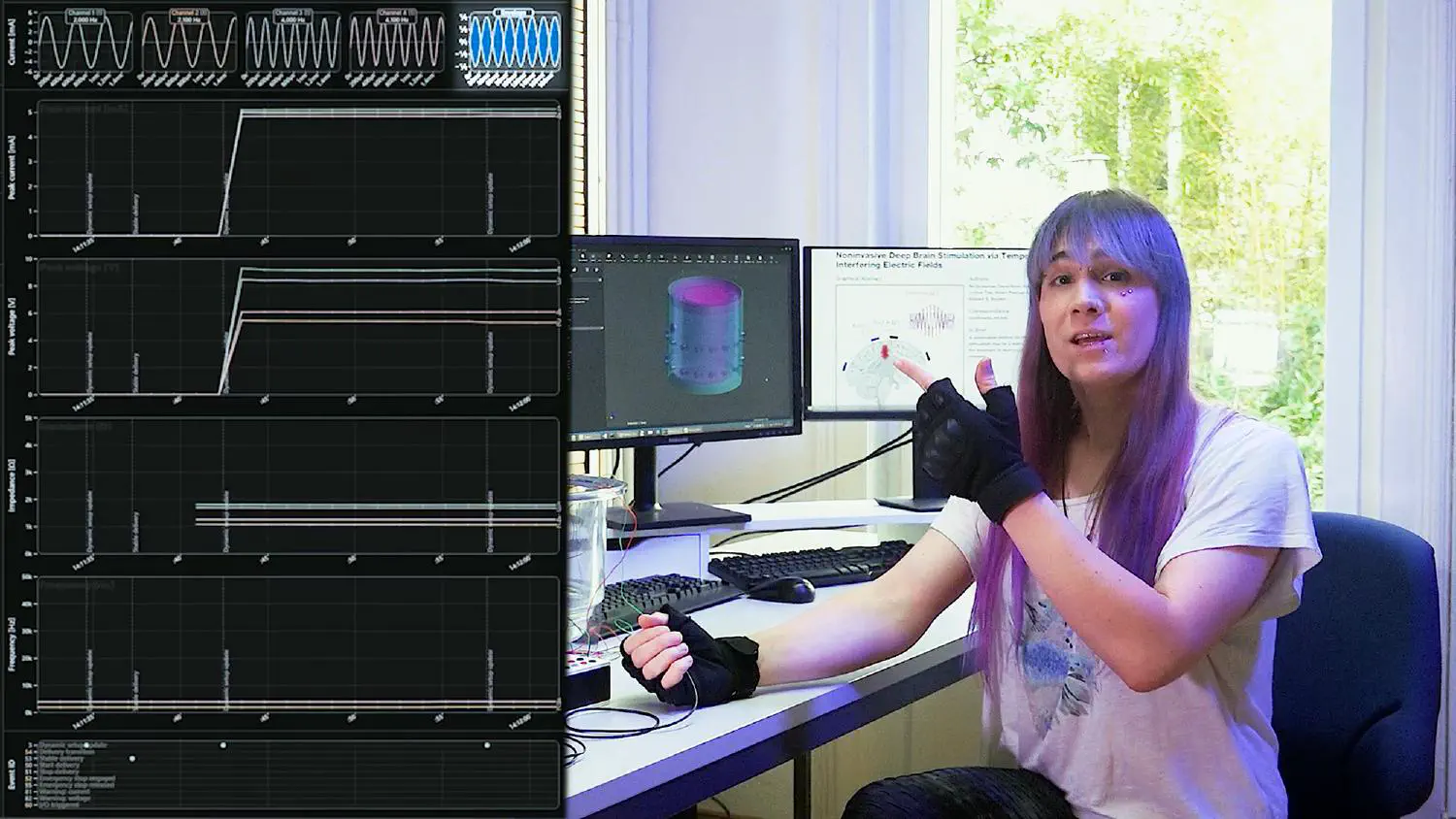
Dec 5, 2022
TI Solutions is part of the Innosuisse project “MRIcompLEAD". The project aims to develop novel leads for applications involving neurostimulation and functional magnetic resonance imaging (MRI). The goal is to significantly outperform current solutions in terms of MRI-safety (no heating effects), MRI-compatibility (no imaging artifacts) and mechanical stability. The project officially starts on February 1, 2023 and runs until January 31, 2025.
TI Solutions is part of the Innosuisse project “MRIcompLEAD". The project aims to develop novel leads for applications involving neurostimulation and functional magnetic resonance imaging (MRI). The goal is to significantly outperform current solutions in terms of MRI-safety (no heating effects), MRI-compatibility (no imaging artifacts) and mechanical stability. The project officially starts on February 1, 2023 and runs until January 31, 2025.
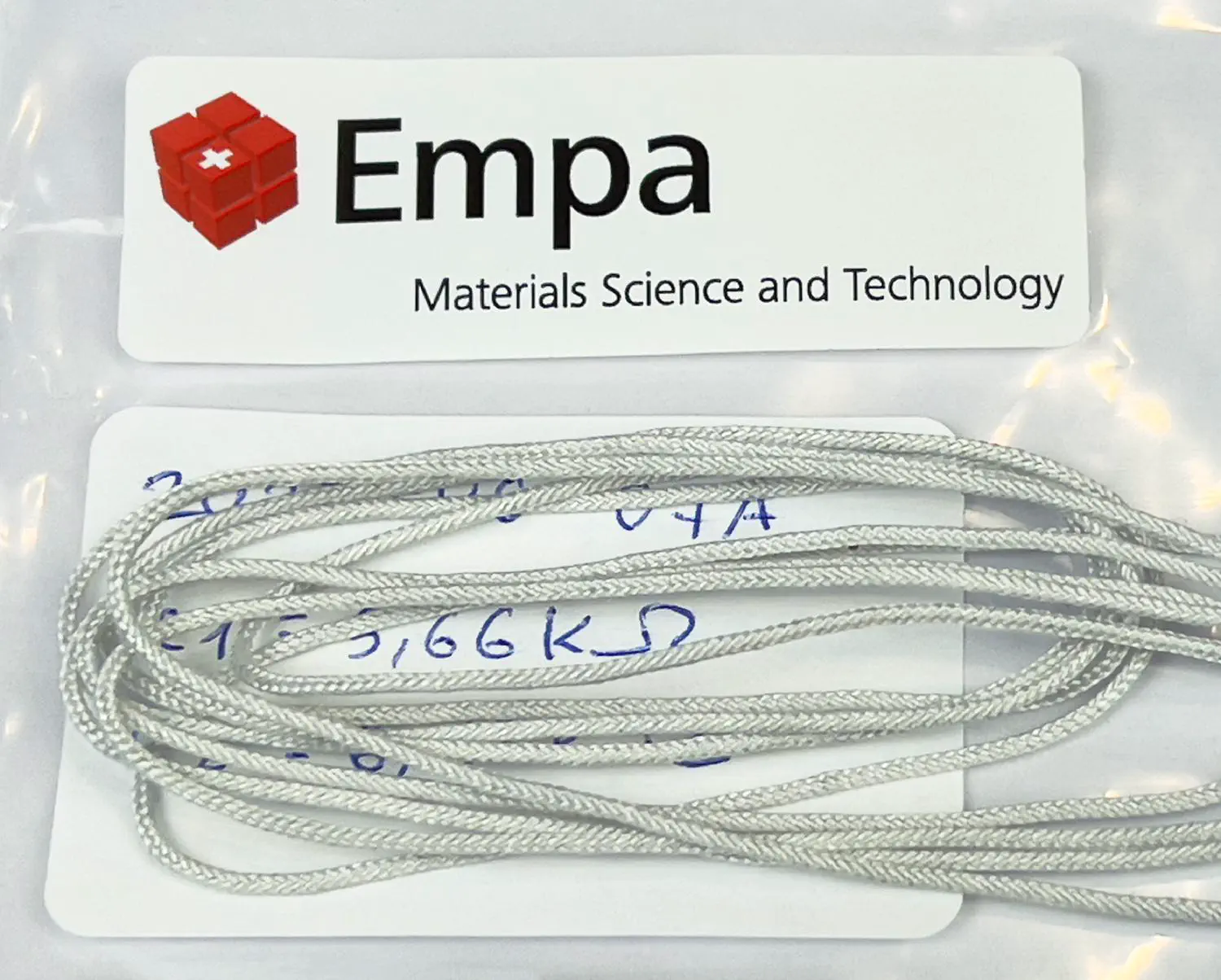
May 20, 2022
After nearly two years of intense collaboration with the IT’IS Foundation, we have completed the prototype development of our Temporal Interference Brain Stimulator for Research (TIBS-R).
The final prototype exists in two variants: a standard configuration (TIBS-R) and a magnetic resonance imaging (MRI)-compatible configuration (TIBS-R-MRI). Both variants consist of the battery-powered Intelligent Current Source (ICS) with eight fully differential channels that can be connected to any third-party electrodes via an Electrode Connection Box (ECB). It is controlled via the Application Programming Interface sent by a computer via optical connections.
The ICS and its external components make TIBS-R/TIBS-R-MRI the most flexible instrument for performing advanced TI research. It allows for millions of different stimulation scenarios in the lab or during functional MRI scans.
For further information about our TIBS-R system, please contact us.
After nearly two years of intense collaboration with the IT’IS Foundation, we have completed the prototype development of our Temporal Interference Brain Stimulator for Research (TIBS-R).
The final prototype exists in two variants: a standard configuration (TIBS-R) and a magnetic resonance imaging (MRI)-compatible configuration (TIBS-R-MRI). Both variants consist of the battery-powered Intelligent Current Source (ICS) with eight fully differential channels that can be connected to any third-party electrodes via an Electrode Connection Box (ECB). It is controlled via the Application Programming Interface sent by a computer via optical connections.
The ICS and its external components make TIBS-R/TIBS-R-MRI the most flexible instrument for performing advanced TI research. It allows for millions of different stimulation scenarios in the lab or during functional MRI scans.
For further information about our TIBS-R system, please contact us.
TIBS-R is the most advanced TI system for research and clinical studies. It offers 8 synchronous, broad-band, high-impedance current sources, phase modulation, arbitrary modulation waveforms, EEG and fMRI compatibility, and more.
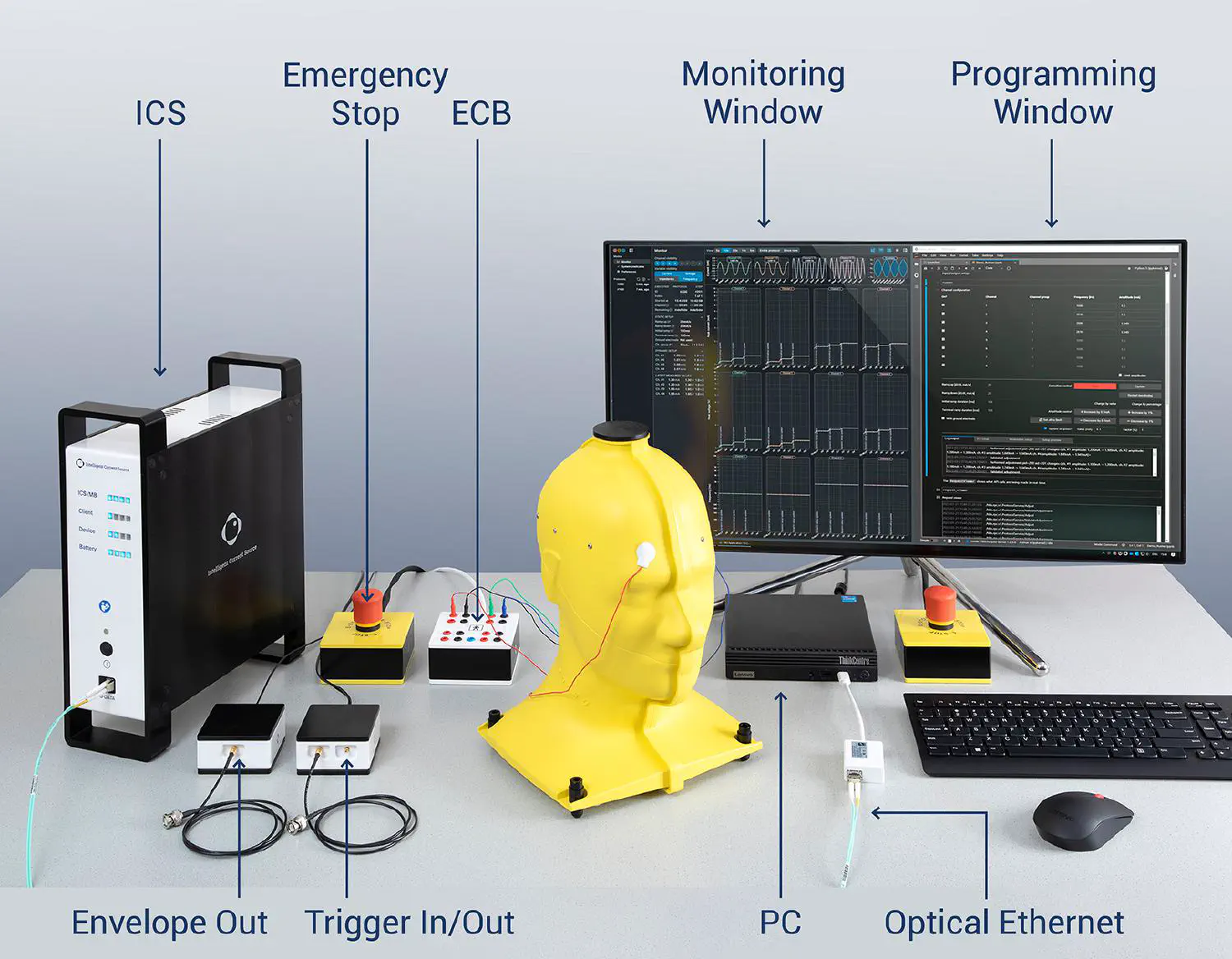
At the core of Temporal Interference Brain Stimulator for Research (TIBS-R) is the Intelligent Current Source (ICS) with unique specifications that can be connected to 3rd-party electrodes via an Electrode Connection Box (ECB). The ICS is controlled by a computer (PC) via an Application Programming Interface (API). Highly flexible scripting interfaces in multiple languages (e.g., Python, MATLAB) and custom-specific graphical user interfaces (GUIs) can be accessed in the Programming Window. Optical inputs and outputs are available for synchronization with external triggers (Trigger In/Out), e.g., electroencephalography (EEG) instruments. The modulation envelope is available as an analog signal (Envelope Out), e.g., to record with the EEG. The stimulation can be stopped at any time by pressing one of the two optically connected Emergency Stops.
All pertinent parameters and information, including stimulation protocol, currents, voltages, impedances, inputs, etc., are continuously recorded and displayed to the researchers on the monitoring window. TIBS-R is electrically isolated and compliant with the relevant standards. Any malfunction is automatically detected and puts the device in a non-stimulating state that requires self-validation before stimulation can be continued.
Concurrent EEG recording during TI stimulation requires our TI-EEG Solution that includes a high-pass filter (HPF) piggybacked to the ECB and an EEG system-specific low-pass filter (LPF) before the EEG amplifiers.
Concurrent functional magnetic resonance imaging (fMRI) requires our TI-MRI solution including special resistive electrodes and a different type of ECB.
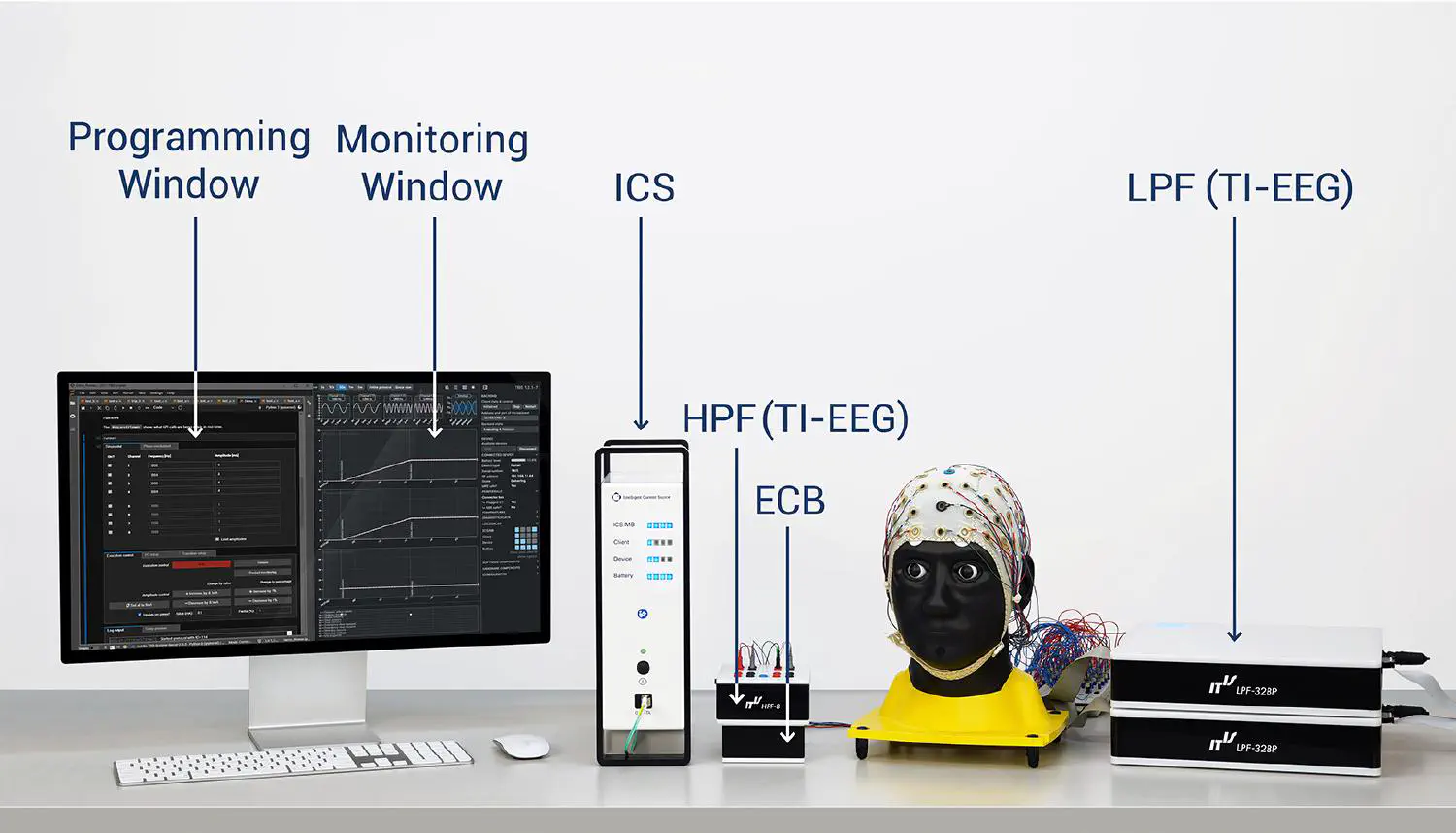
| Frequency Range | DC - 100 kHz |
| Waveforms | Sinusoid, phase modulation, frequency modulation, AWG* |
| Number of Channels Per Unit | 8 synchronized, fully differential |
| EEG Compatibility | Brain Products, Geodesic*** |
| MRI Compatibility Option | Upon special request |
| Operation Time | ca. 4 hrs active use on single battery charge, unlimited with WPT-TX/RX |
| Battery Charger | USB-C |
| Peak Output Voltage | 52 V differential** |
| Peak Output Current | 5 mA max at ≤1.8 kHz**, 7 mA max at 2.5 kHz**, 14 mA max at ≥5 kHz** |
| Trigger / Sync Output | External instrument and synchronization (optical) |
| Trigger Input | Yes (digital, optical) |
| EEG Level Output of Excitation Envelope | Yes - optical |
| Sample Rate | 1 Msamples/s |
| AWG Memory Depth | >2 Msamples 2 s* |
| Dynamic Range | >60 dB 10 µA - 10 mA |
| Precision / Resolution | 16 bit, 1 µs, synchronous update |
| Total Harmonic Distortion | <0.05% |
| 2nd Order Intermodulation | -110 dBc typical ≤-135 dBc*** |
| Ground Reference | Yes |
| Ground Current Monitoring | Yes |
| Monitoring - Currents / Voltages | Yes, synchronous sampling / logging of stimulation |
| Electrode Impedance Detection | Yes - online |
| Emergency Stop Button | Optical, suitable for MRI |
| Safety | Hardware-limited peak currents and voltages** |
| Control Unit | Optical connection to host PC |
| Compliance | IEC 62304:2006 + A1:2015, IEC 60601-1-6:2010 A1:2013 +A2:2020, ISO 14971:2007, IEC 60601-1-2:2014 + A1:2020 |
| Scripting | Python, MATLAB - others on request |
| Environment | +5 – +40°C |
| Instructions for Use | Yes |
| IP Protection - Patents | US 10173061, 10905878,11759634, EP 3204113, only in FR, DE, GB, IT, ES, FI, DK, BE, NL, CH and LI, CZ |
| End of Life | December 2030 or later |
AWG: arbitrary waveform generator; EEG: electroencephalogram; MRI: magnetic resonance imaging; WPT-TX/RX: wireless power transfer option
*in future release only
**compliant with implemented safety concept (Cassarà et al. (2025) DOIs: 10.1002/bem.22542 + 10.1002/bem.22536; IEC standards)
***EEG solution provided by the IT’IS Foundation
Minimal PC specifications: Windows 11 Pro, 16 GB RAM, UHD graphics, USB-C
Download the TIBS-R flyer here.The Intelligent Current Source is a battery-powered, 8-channel programmable DC and AC current source, optically connected to a PC and other peripherals such as external trigger circuits, monitoring ports, and emergency stops.
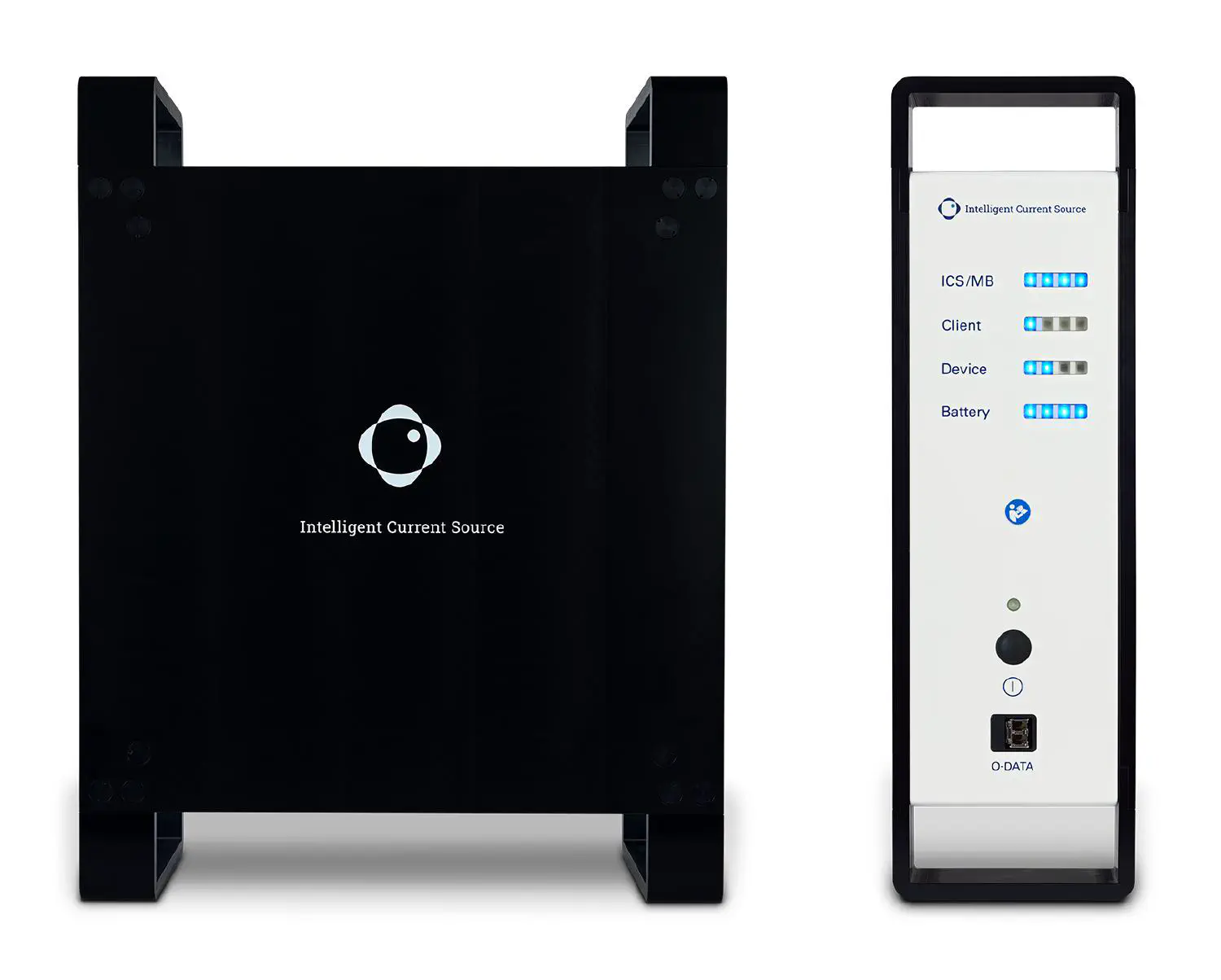
The core component of the TIBS-R system is the battery-powered, 8-channel programmable high-impedance current source generating precise direct current (DC) and alternating current (AC) from 0 - > 100 kHz. To ensure superior electrical safety, the ICS is solely optically connected to the external world. The PC via optical Ethernet and other peripherals, including external trigger circuits, monitoring ports, and emergency stops, are also optically connected via fibers.
The PC communicates with the ICS via a highly flexible scripting interface. Some commands pertain to the configuration of the ICS and others to the signals to be generated. The signals that can be generated broadly fall into two categories, i.e., sinusoids and arbitrary waveforms. All the signal data is checked for integrity and completeness and any errors are reported back to the operator.
The signals for all 8 channels are generated in the same Field Programmable Gate Array (FPGA) using Direct Digital Synthesis (DDS) architectures, ensuring synchronization across all the channels. The synthesized digital signals are converted to the analog domain using digital to analog converters (DAC). The DACs have a special architecture that allows control of the amplitude of the output current independent of the waveform providing simple control of the ramping at start and stop of an experiment to avoid transient effects.
All current sources are fully differential allowing good control of the balance. At the output of the current source, monitoring circuits digitize the voltage and current and the relays that enable the output. Each channel can generate currents from DC to 100 kHz. To maintain operation within safe limits, frequency dependent hardware current limiters have been implemented based on the latest safety information available. Additionally, users can program lower current limits to meet specific experimental requirements.
An Electrode Connection Box (ECB) is connected to the ICS using a 3 m cable. The cable consists of eight individually screened twisted pairs for each of the eight current source channels and a shielded connection for the ground reference electrode. The ECB is made from plastic and houses the touch-proof electrode connectors, which are in turn connected to the cable via common mode and differential mode filters.
For continuous operation, our wireless power transfer solution (TI-WPT) can be connected between the ICS and ECB.
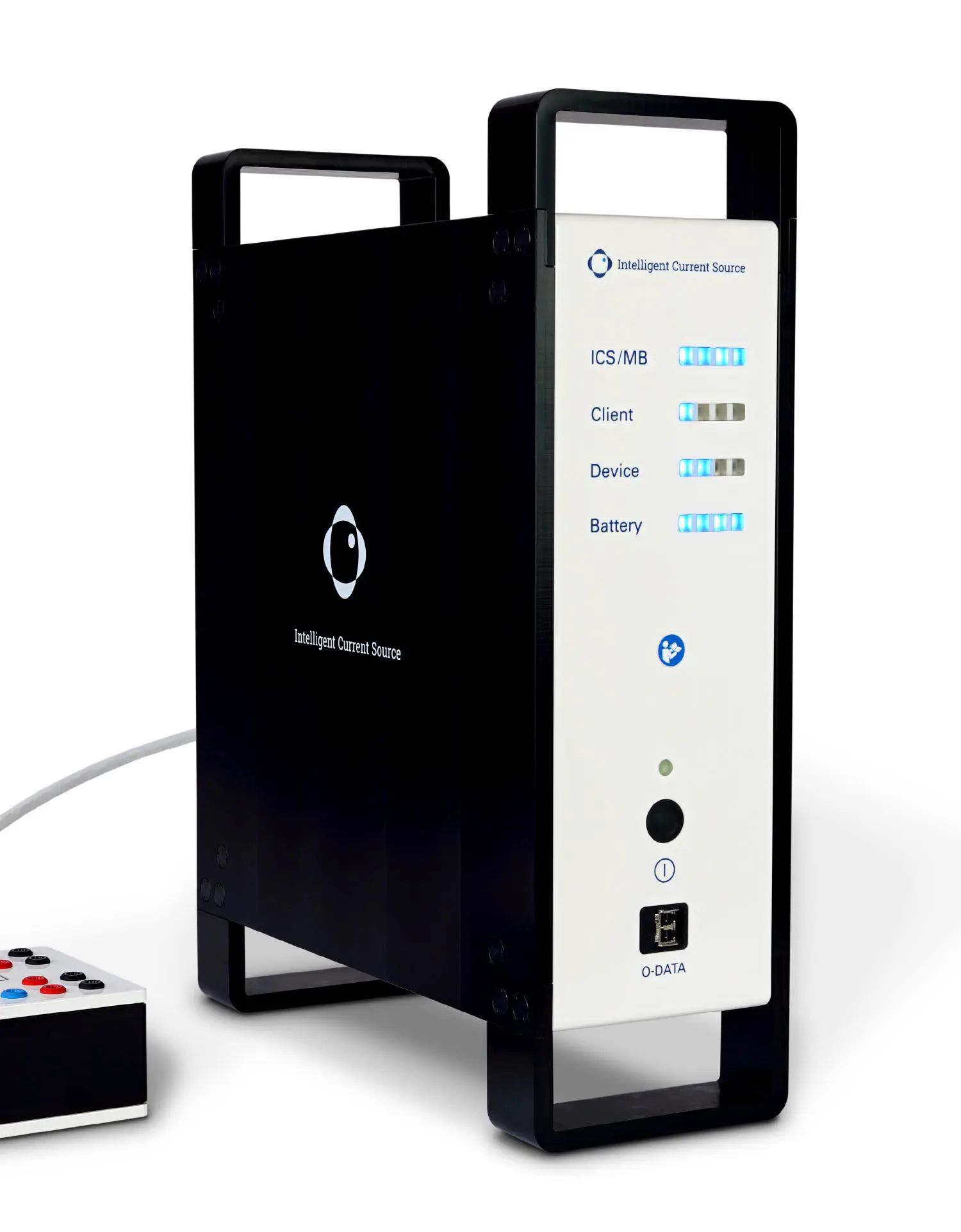
The TI-WPT Solution can be connected to the TIBS-R system, enabling continuous charging of the ICS via wireless power transfer and extending the stimulation duration beyond the standard 4-hour battery limit.
The TI-EEG Solution allows for artifact-free, simultaneous high-density electroencephalography recording during stimulation with the TIBS-R system.
The unique TI Filter Solutions for TIBS-R of the IT’IS Foundation IT’IS Foundation allow for artifact-free concurrent electroencephalography (EEG) recording during temporal interference (TI) stimulation in the 2 – 50 kHz frequency range.
The 8-channel passive current mode high-pass filter (HPF-8) is positioned between the Electrode Connection Box and the stimulation electrodes to further reduce the low frequency components and noise generated by the Intelligent Current Source (ICS), while preserving the TI stimulation currents. For typical use cases, 2nd order intermodulation (IM2) products are attenuated below 30 nVrms.
The low pass filter (LPF) is placed between the EEG recording electrodes and the EEG amplifier. It is engineered to prevent TI carrier signals from causing compression or intermodulation distortion in the EEG amplifier. The active 7th-order, ultra-low noise, ultra-low distortion design provides a flat response up to 90 Hz, while attenuating carrier signals of 1 kHz and higher by >130 dB. Each EEG channel has its own filter, referenced to the COM / GND electrode of the EEG cap.
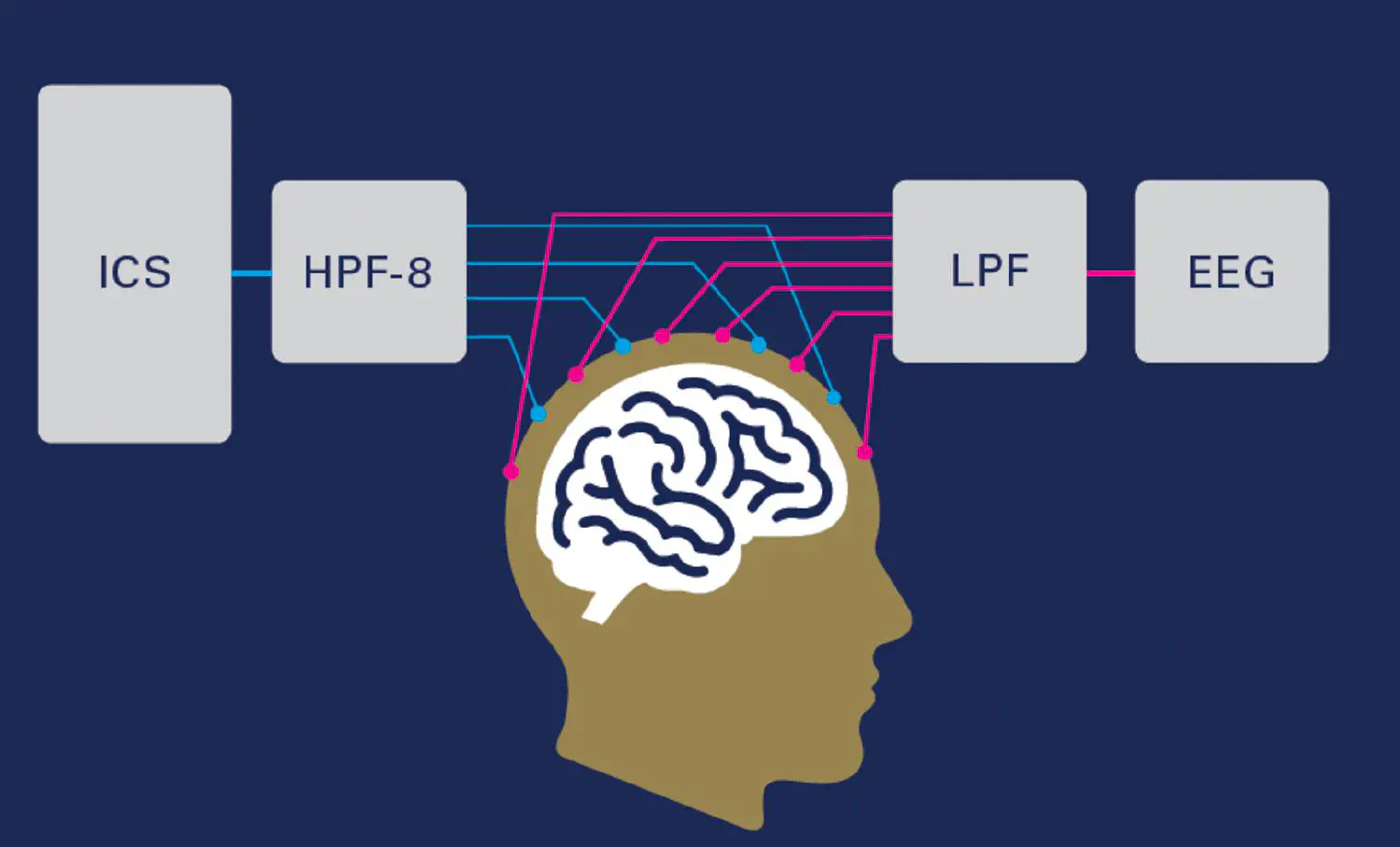
| Filter type | Passive current mode high-pass filter |
| Compatibility | TIBS-R (TI Solutions AG, Switzerland)* |
| Number of channels | 8 |
| Connector type | Touch proof |
| Attenuation | > 60 dB up to 60 Hz, > 40 dB up to 100 Hz (4th order, fc = 350 Hz) |
| TI carrier frequency range | 2 – 30 kHz (recommended), 1 – 50 kHz (with reduced performance) |
| Output Impedance | > 35 kOhm between 2 – 10 kHz |
| Typical IM2 magnitude | < 30 nVrms |
| Current monitoring port gain | 2 V / mA |
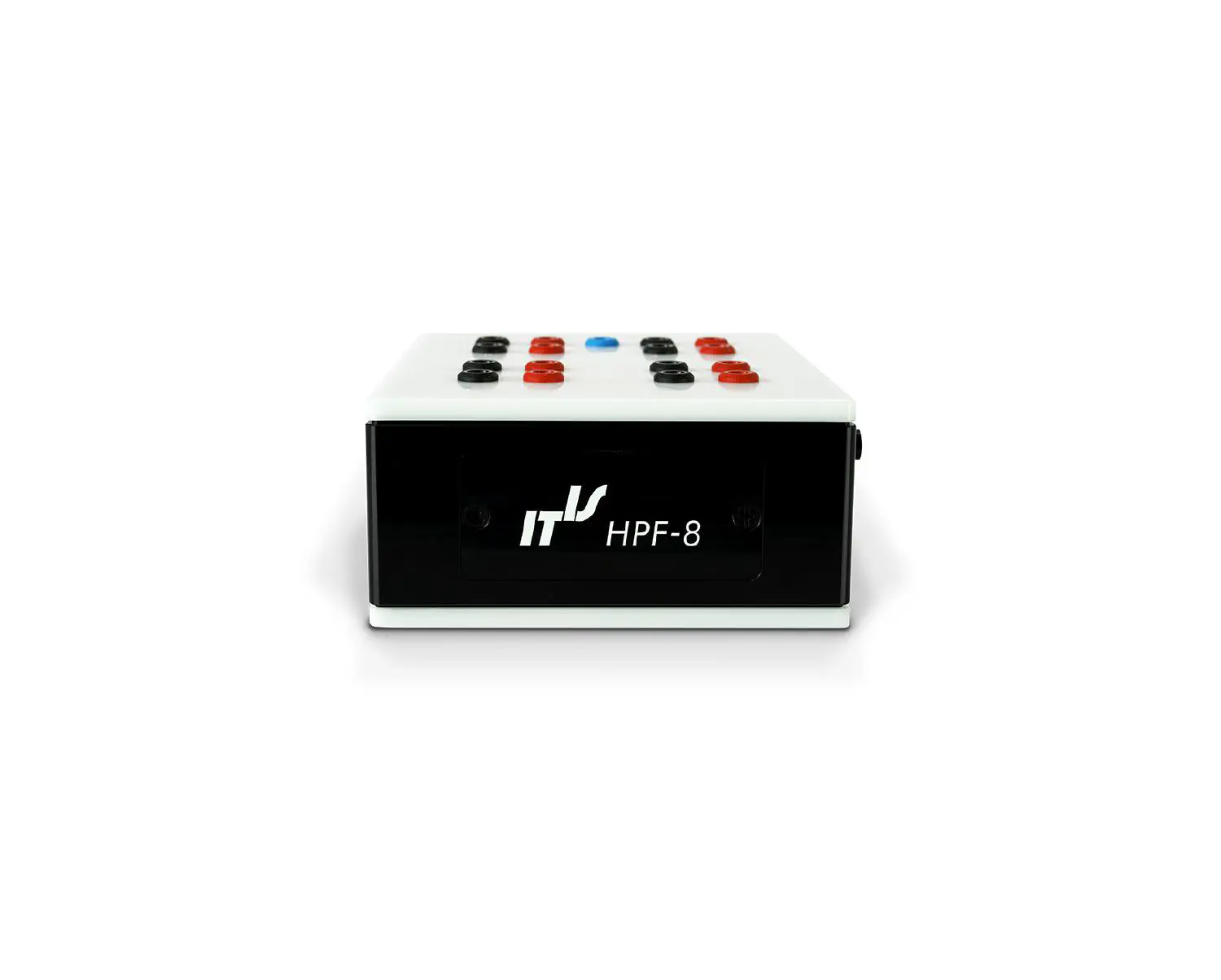
| Filter type | Active |
| Compatibility | BrainAmp Standard, DC, MR actiCHamp Plus (via adapter, passive electrodes only) |
| Number of channels | 32 (stackable) |
| Connector type | 50-pin KEL |
| Attenuation | > 130 dB at 1 kHz and above (7th order, fc = 90 Hz) |
| Input impedance | 3.3 MOhm |
| Battery life | 12 h |
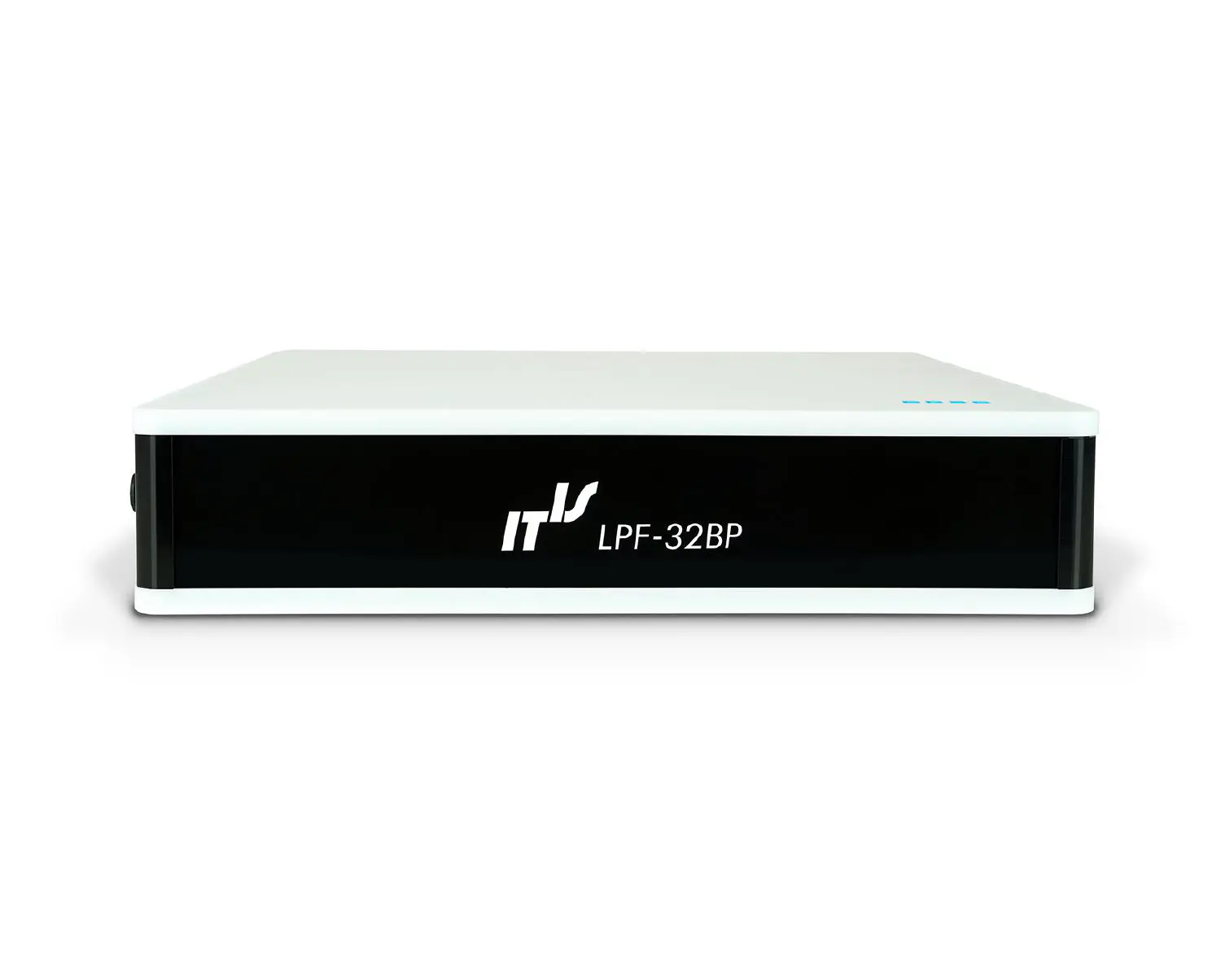
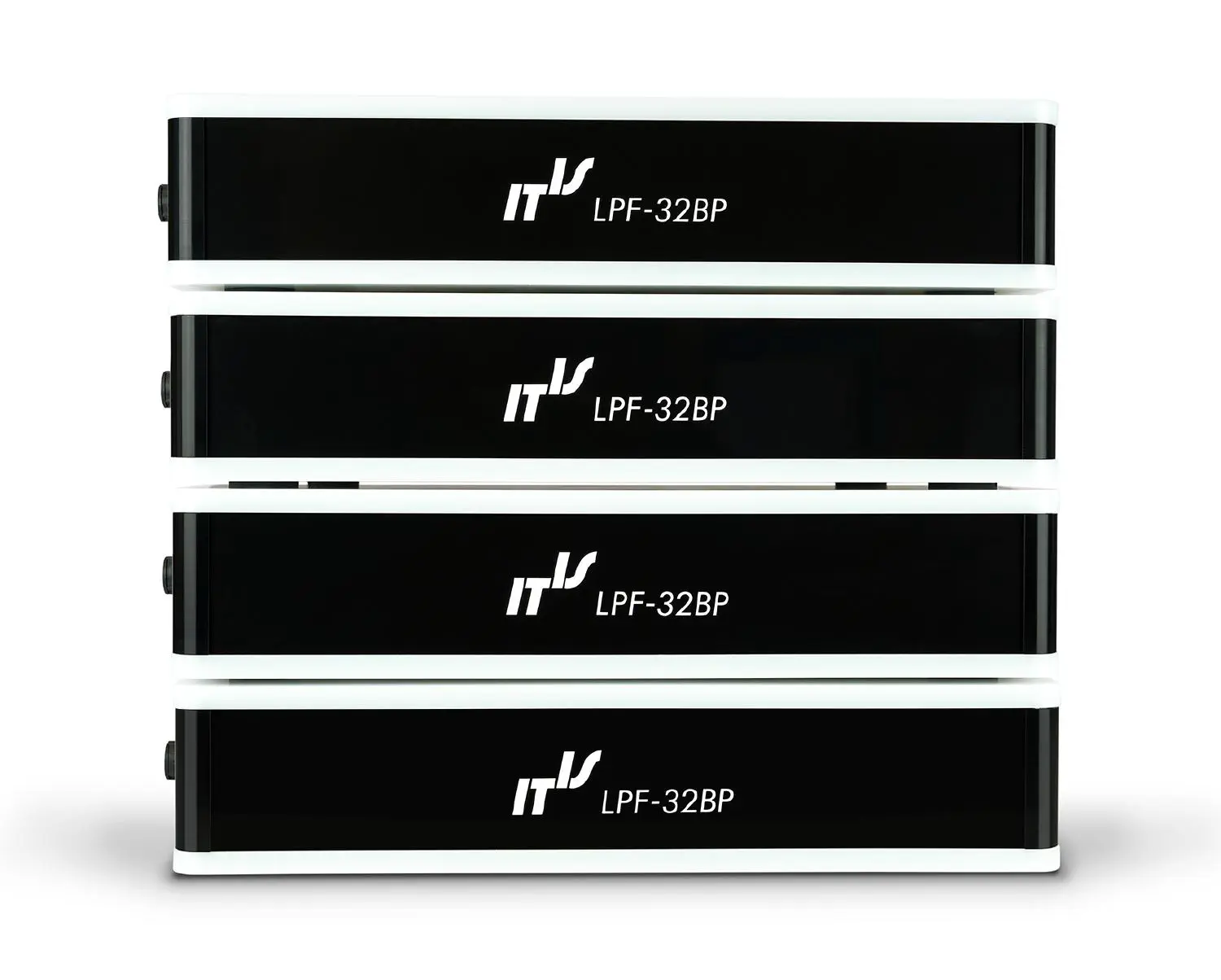
| Filter type | Active |
| Compatibility | Electrical Geodesic Inc Net Amps Series |
| Number of channels | 128/256 |
| Connector type | EGI 128/256 |
| Attenuation | > 130 dB at 1 kHz and above (7th order, fc = 90 Hz) |
| Input impedance | 3.3 MOhm |
| Battery life | LPF-128EGI: 6 h, 18 h with extended battery option LPF-256EGI: 3 h, 9 h with extended battery option |
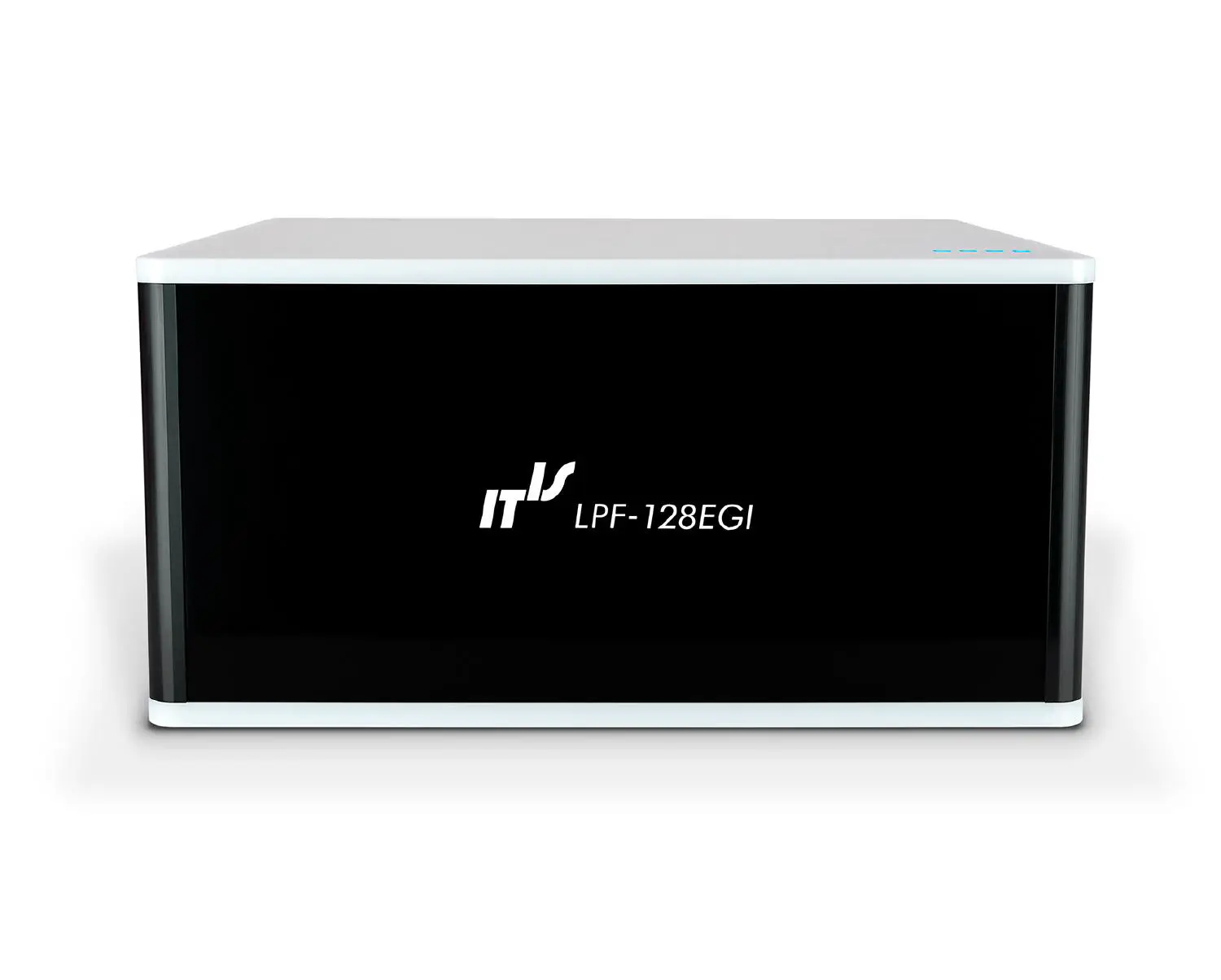
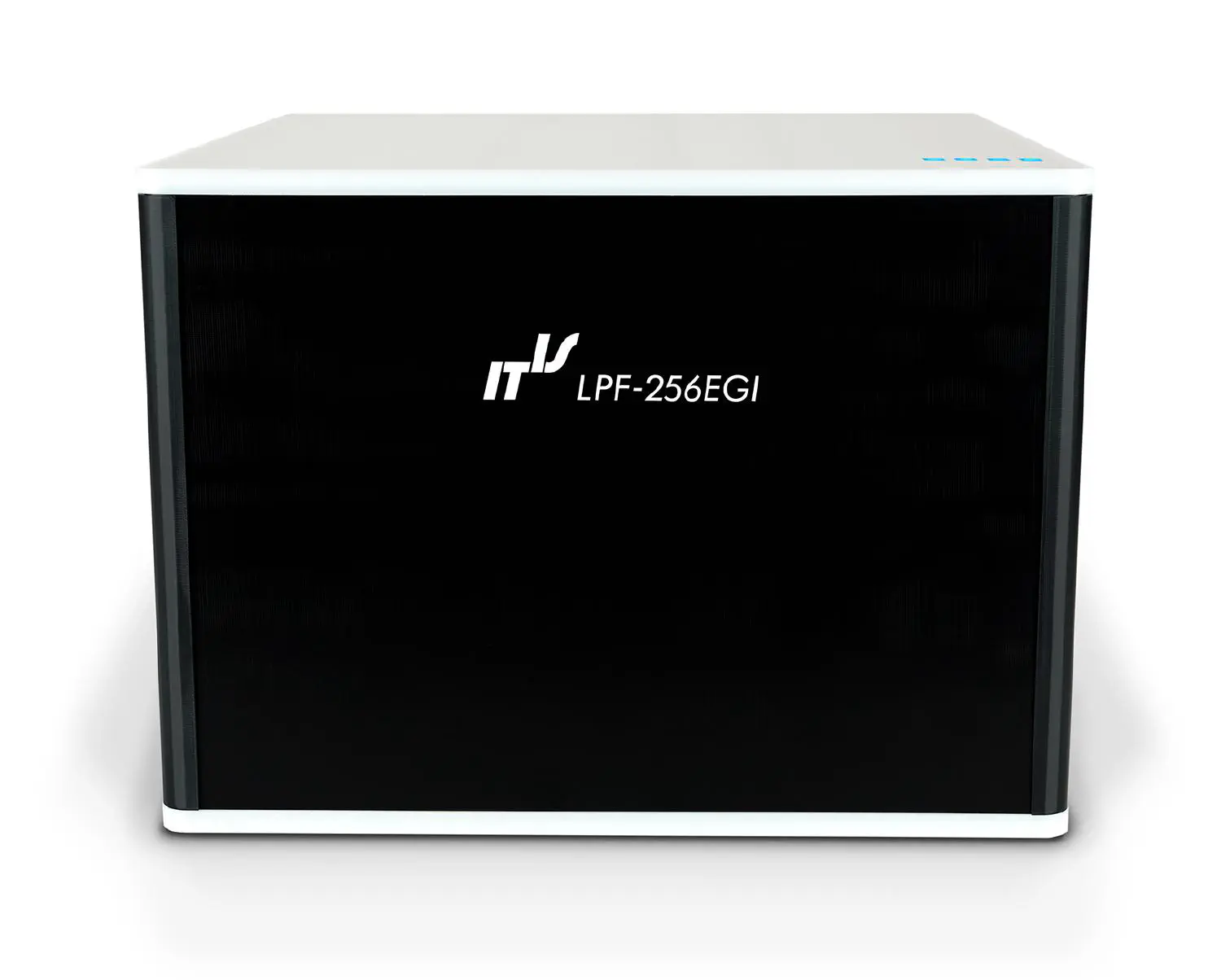
Currently solutions are available for Electrical Geodesic Inc. (EGI) and Brain Vision LLC. Solutions for other EEG systems can be developed upon request.
The TI Filter Solutions are third-party tools developed by the IT’IS Foundation. We do not control or endorse these third-party tools. We do not assume any responsibility or give any assurance for the accuracy, functionality, availability, usability, applicability, or performance of the tools provided by IT’IS and the results generated by these third-party tools, nor do we assume any responsibility for any potential issues or damages resulting from their use.
Download the TI-EEG Filter Solution flyer here.The TI-MRI Solution allows for artifact-free concurrent functional magnetic resonance imaging during stimulation with the TIBS-R system, with initial solutions designed for 3T and 7T scanners.
Bear With Us!
We are in the process of updating this page to ensure all the information is available for you. Please check back soon!
Thank you for your patience!
TI stimulation relies on delivering high-frequency currents to targeted brain regions with great accuracy, requiring high-precision current sources and detailed personalized TI planning to account for the complexity of non-homogenous head tissues.
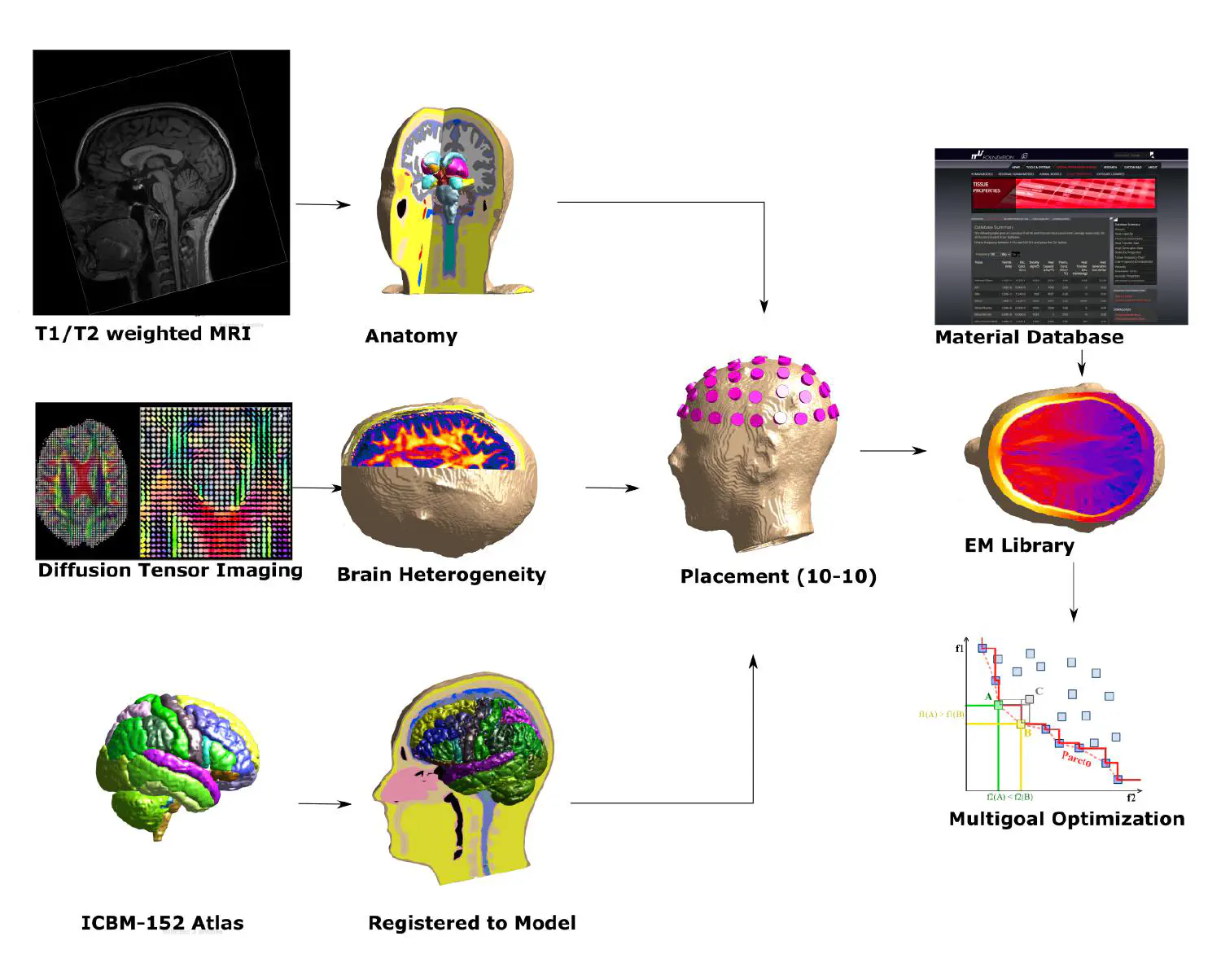
The shape of the human head and its dielectric properties are highly variable, non-homogeneous, and non-isotropic, posing significant challenges in achieving the desired interference patterns in target tissues while ensuring minimal or no modulation in off-target regions. Overcoming these complexities requires highly accurate current sources, meticulous planning, and robust tools for interpreting results and assessing stimulation sensitivities to tissue parameter variations. These challenges are equally relevant for in vivo experiments.
The synergy between the Temporal Interference Planning (TIP) tool and the computational platform Sim4Life provides researchers with the most advanced solution to master these challenges. By combining TIP’s intuitive protocol design with Sim4Life’s cutting-edge simulation and analysis capabilities, they empower researchers to efficiently develop, optimize, and validate TI protocols with unmatched precision.
User-friendly design: Intuitive interface tailored for TI research
Personalization: Automated segmentation using magnetic resonance imaging (MRI) and diffusion tensor imaging (DTI) data
Rapid optimization: Automated parameter sweeping for quick results
Broad accessibility: Designed for researchers without computational expertise
TI-specific tools: Streamlined simulation modes to enhance productivity
For more details visit the IT’IS TI Planning webpage.
Comprehensive simulation: Multiphysics engine for realistic modeling
Sophisticated analysis: Advanced post-processing and visualization tools
Detailed modeling: Neuronal tissue simulations with high precision
Rich visual outputs: Insights through advanced visualizations
For more details visit www.sim4life.swiss.
By combining TIP’s rapid protocol design with Sim4Life’s powerful simulation and analysis tools, researchers can seamlessly transition from initial design to in-depth validation. TIP empowers researchers to efficiently optimize protocols through its accessible, TI-focused interface. These protocols can then be transferred to Sim4Life for advanced modeling, analysis, and visualization. This integration ensures an efficient and comprehensive approach to TI stimulation research, enabling breakthroughs with confidence and precision.
Download the TIP flyer here.TIP is a user-friendly web tool for personalized TI planning, optimized for TIBS-R, supporting multichannel optimiziation for superior focality or targeting of multiple structures and phase modulation for complex modulation schemes.
The Temporal Interference Planning (TIP) tool Version 4.0 of the IT’IS Foundation developed for TIBS-R provides an advanced modeling pipeline for electrode placement and stimulation targeting with the TIBS-R system, offering cloud-based simulations and interactive visualizations. Read more on the IT’IS TI Planning webpage.
The latest version of our powerful TI stimulation planning tool brings major innovations to researchers worldwide:
Automated Personalization: Our deep-learning model now automatically detects anatomical fiducials for consistent 10-10 electrode placement—no manual steps required
New Optimization Engine: The surrogate-model-based (SuMo) optimizer uses artificial intelligence (AI) to explore the full electrode configuration space, delivering better results faster
Speed and Performance Gains: Optimization is now twice as fast on average, with improved solution quality
Improved Workflow: From drag-and-drop model upload to streamlined analysis, TIP V4.0 is more intuitive than ever
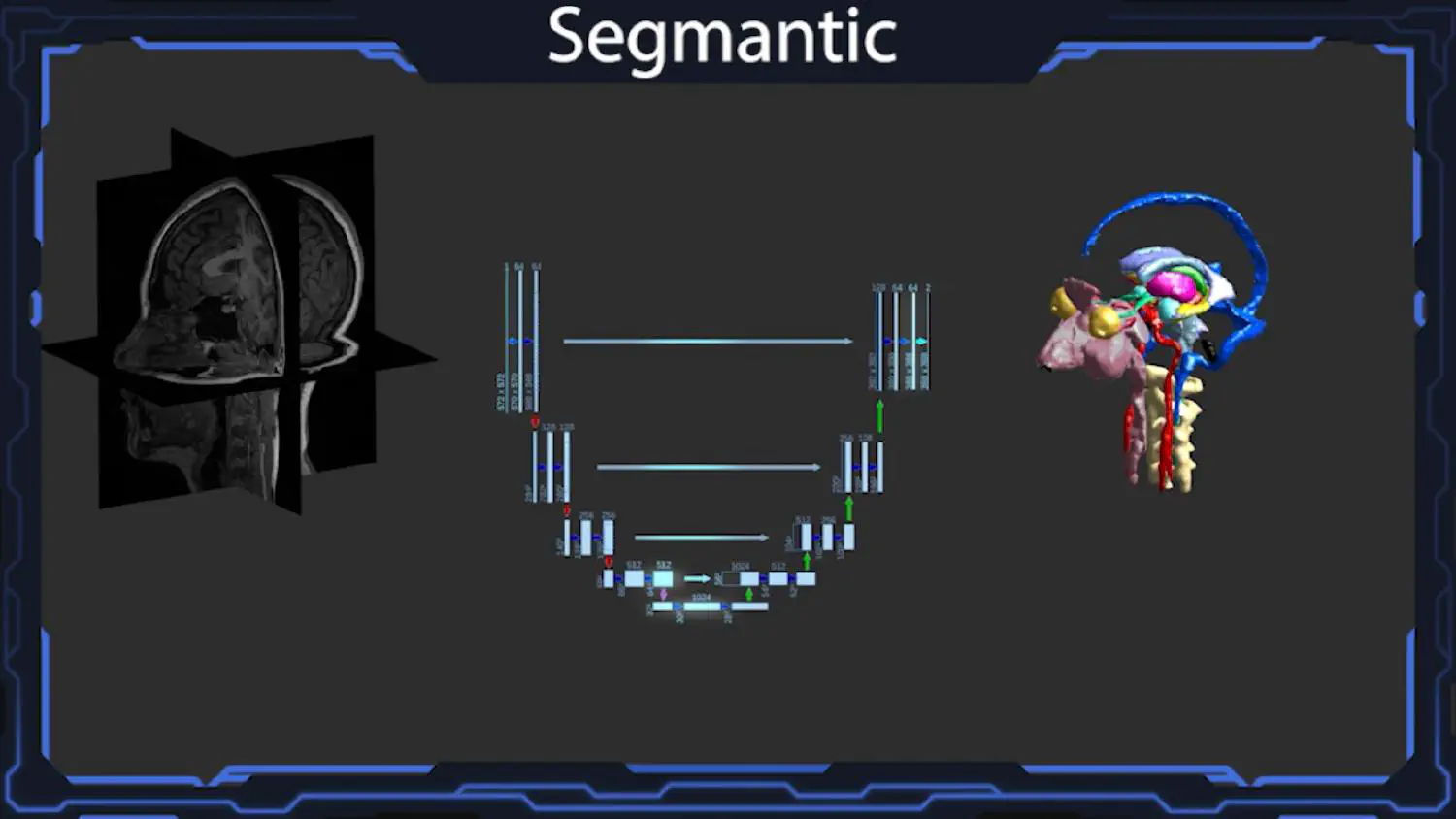
Incorporate magnetic resonance imaging (MRI) and diffusion tensor imaging (DTI) data for individualized results, using automatic image processing to create tissue models with isotropic or anisotropic conductivity for simulations.
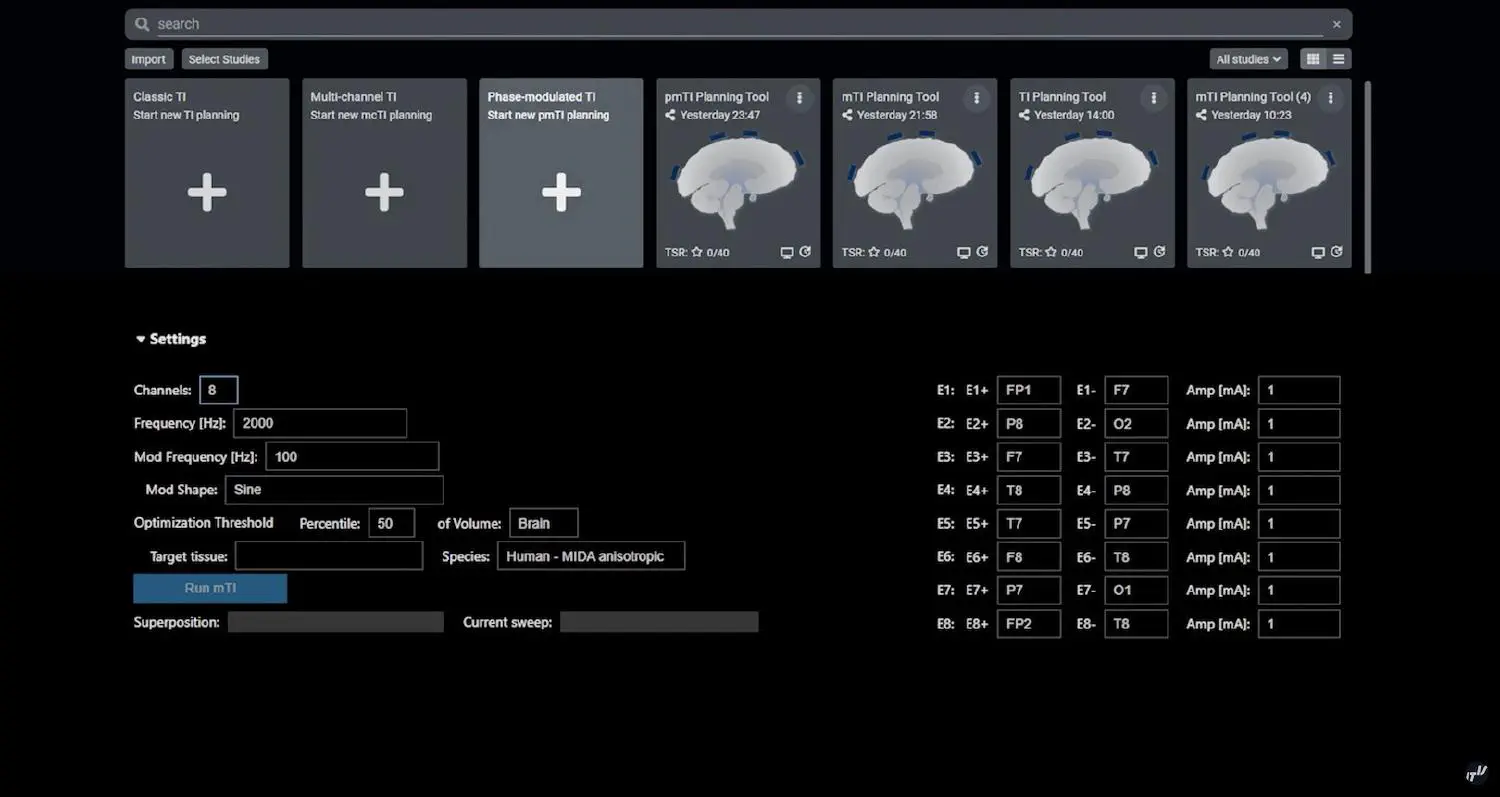
Generate isotropic or anisotropic simulations and export optimization-ready files.
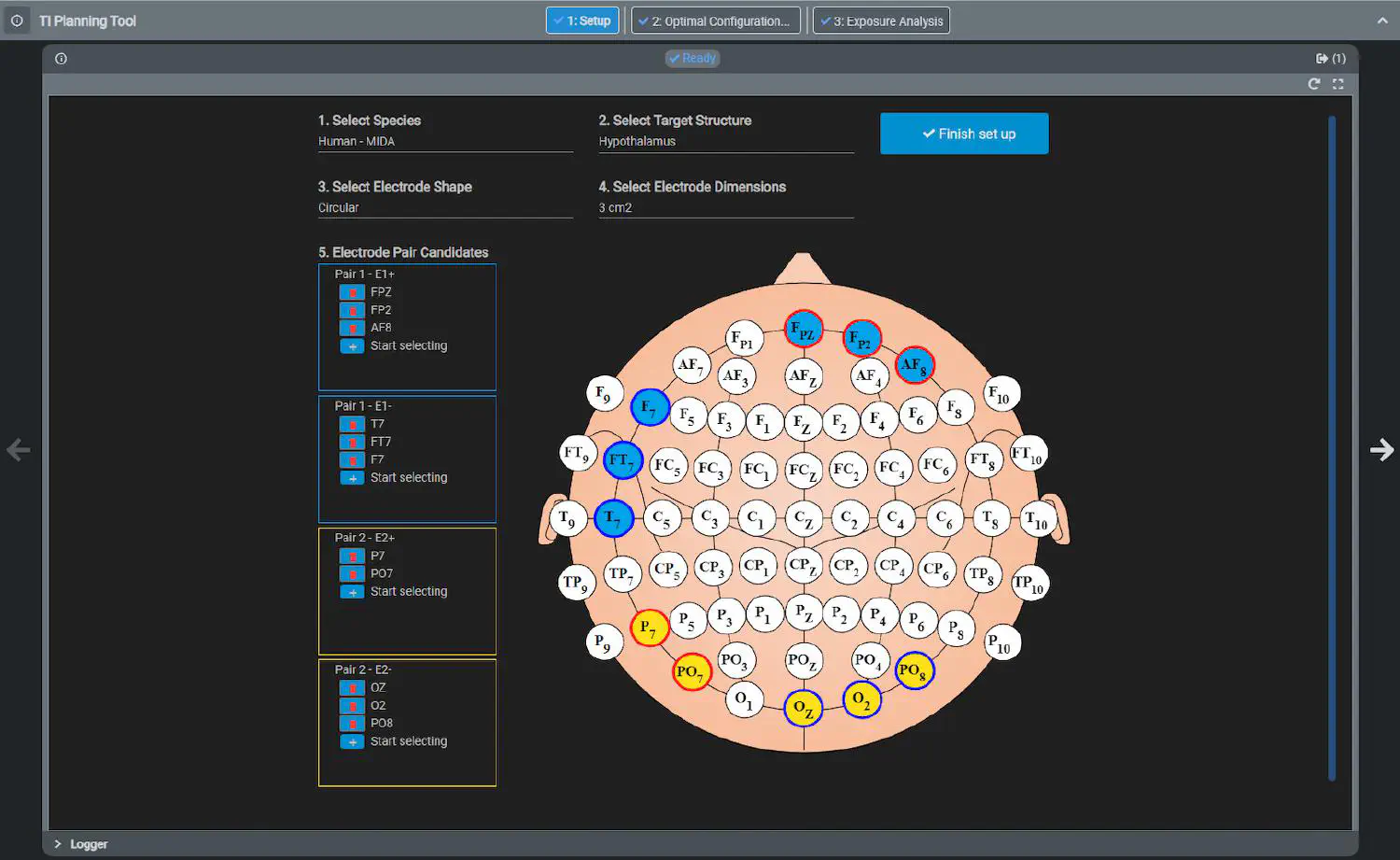
Select species, stimulation target, and electrode locations defined on the 10-10 system to narrow the configuration search space.
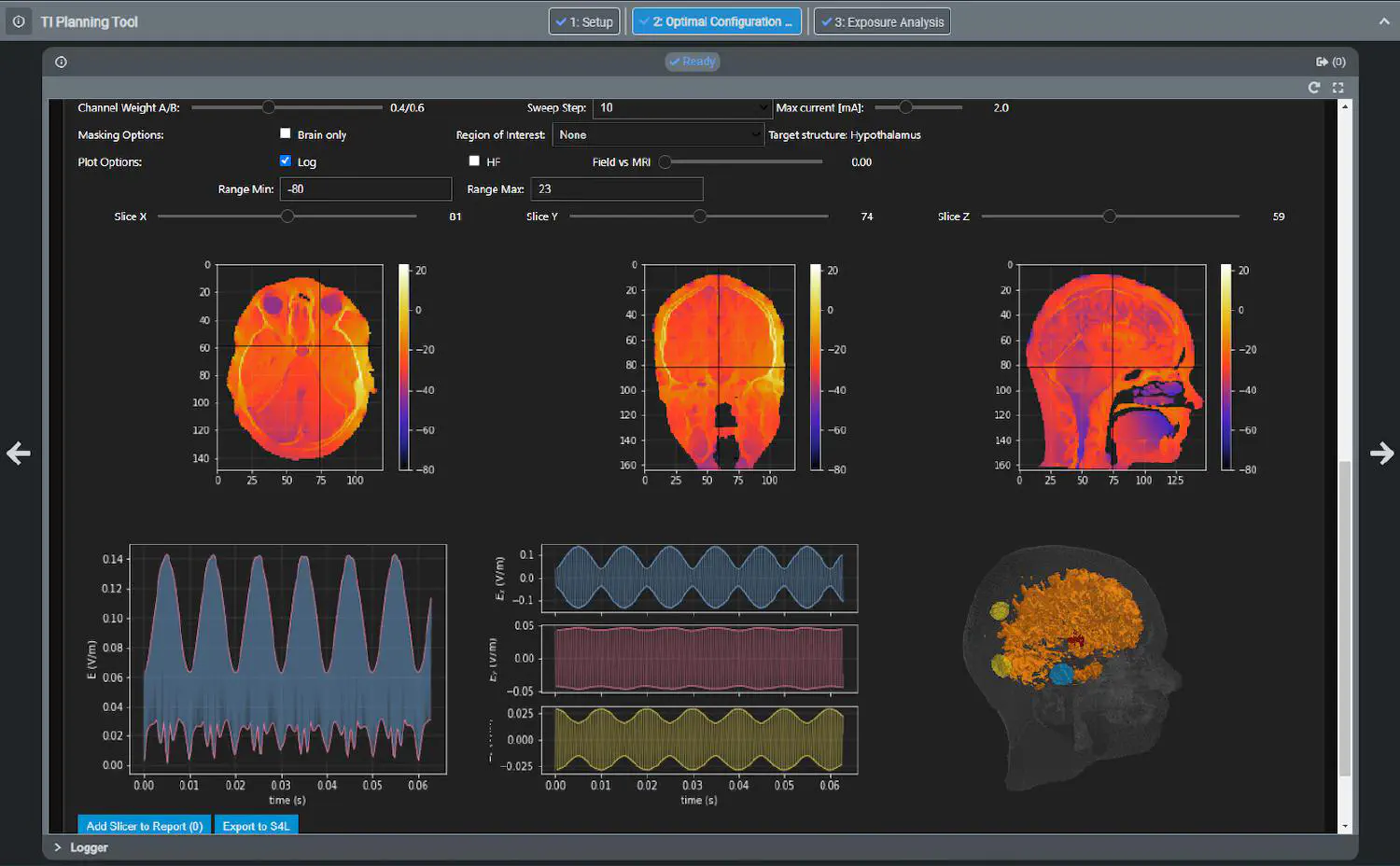
Explore high-performing exposure parameters with metrics and visualizations, and easily document findings.
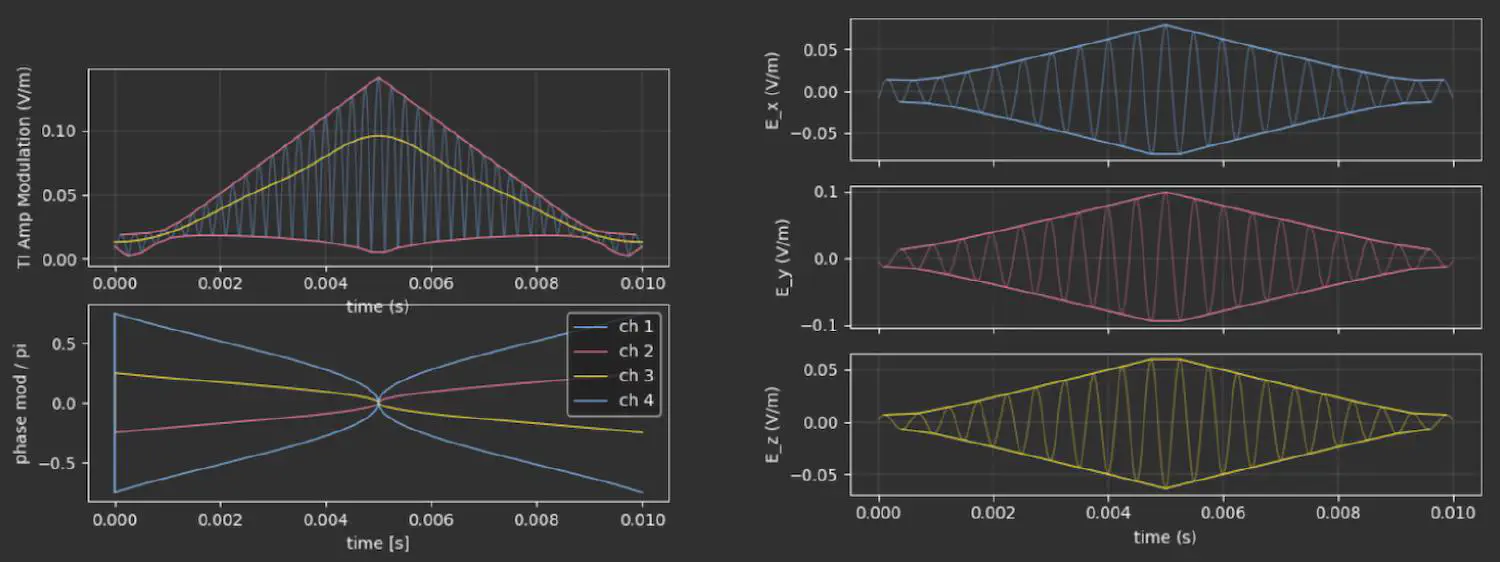
Depict advanced phase modulation schemes and pulse shapes of the complete electric field and its x-, y-, and z-components.
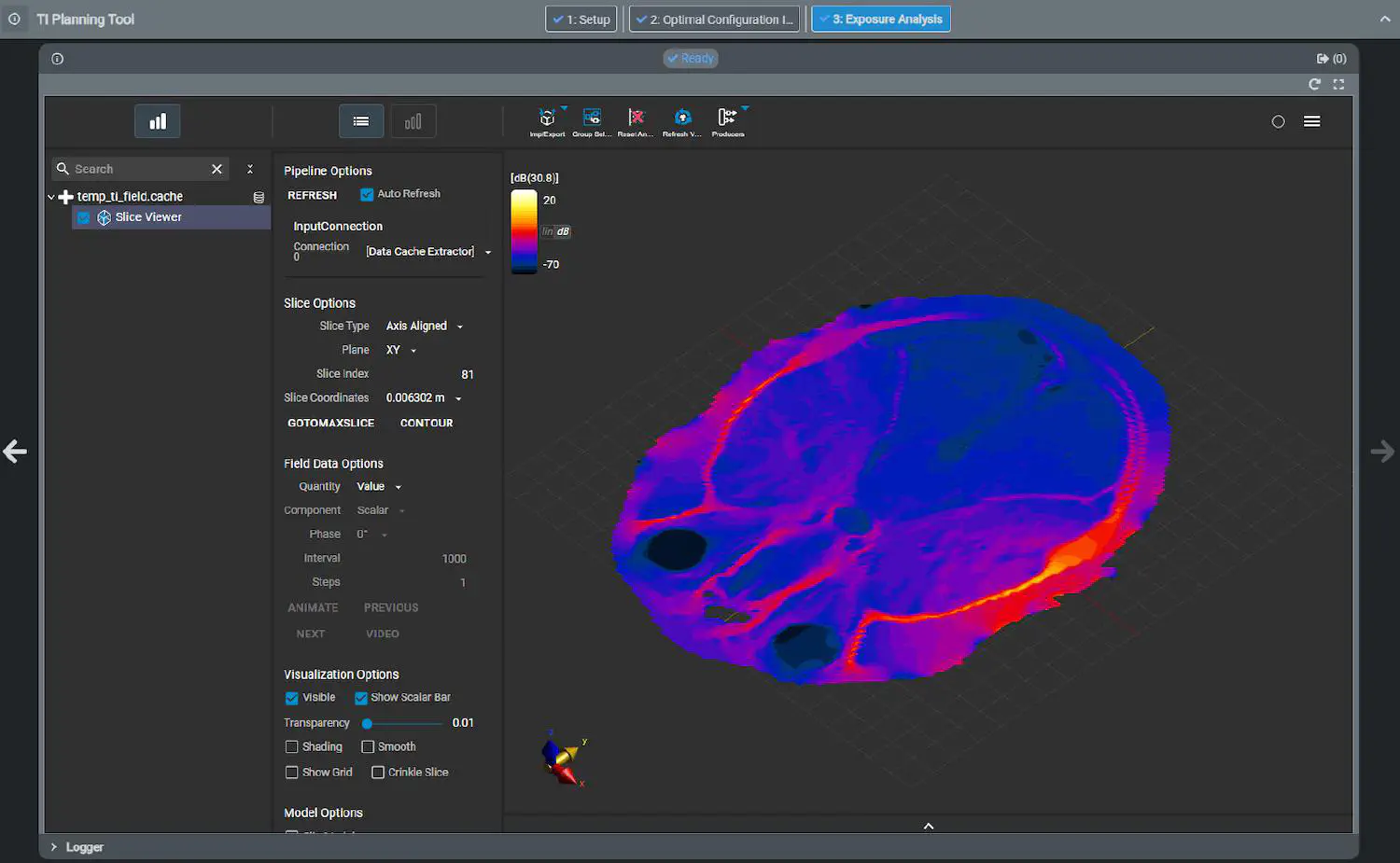
Visualize and analyze selected conditions using Sim4Life (see www.sim4life.swiss).
TIP is a third-party tool developed by the IT’IS Foundation. Sim4Life is a third-party tool developed by ZMT Zurich MedTech AG. We do not control or endorse these third-party tools. We do not assume any responsibility or give any assurance for the accuracy, functionality, availability, usability, applicability, or performance of the tools provided by IT’IS or ZMT and the results generated by these third-party tools, nor do we assume any responsibility for any potential issues or damages resulting from their use.
Download the TIP flyer here.Sim4Life is the most advanced multi-physics simulation platform for various life science applications, including TI, offering interactive exposure analysis and more through its powerful functionality.
The Sim4Life platform of ZMT Zurich MedTech AG, available for both cloud and desktop use, is the premier computational tool for biomedical simulations, healthcare applications, and technical system design, featuring specialized features for temporal interference (TI) planning and analysis.
Sim4Life combines powerful physics solvers with detailed anatomical models to analyze complex biological phenomena and technical devices. The platform includes:
Electromagnetic solvers (full-wave and quasi-static)
Bioheat and thermodynamics solvers
Acoustics and wave propagation solvers
Fluid dynamics solvers
The software integrates highly detailed anatomical models:
Virtual Population (ViP) human phantoms
Virtual Zoo (ViZoo) animal phantoms
Sub-mm resolution with hundreds of tissues and organs
Dynamic tissue models with integrated physiological information
Sim4Life offers advanced tools for designing and optimizing medical and body-worn devices:
Computer-aided design (CAD) tools and versatile file importers
Specialized routing tools for implant lead trajectories
Multi-parameter, multi-goal optimizer
Parameterized modeling and sweeper functions
The platform includes tissue and physiology models for assessing dynamic processes:
Electrophysiological neuron models
Thermal tissue damage models
Perfusion and thermoregulation models
Database of tissue properties
Sim4Life provides tools for regulatory-grade modeling:
Verified and validated evaluations for exposure metrics
Tissue temperature increase evaluations
Magnetic resonance imaging (MRI) implant safety assessments (IMAnalytics with MRIxViP Libraries)
Available in both desktop and web-based versions
Cloud-based technology for collaborative work and scalability
Intuitive user interface with search functionality
Project organization and sharing capabilities
High-performance computing (HPC)-accelerated solvers for managing complex 3D simulations
Python API for workflow automation and custom tool creation
Integration capabilities for custom-optimized software modules
Import and manipulate TIP projects
Programming and visualization of custom-specific optimization goals
Utilizing the large library of neuron models
Applying custom-defined electrodes
Assessing the impact of conductive implants on TI
Case-specific safety evaluations
Direct comparison of measurement and simulations and more
Please visit www.sim4life.swiss for more details, registration for the cloud-based tools or obtaining desktop licenses.
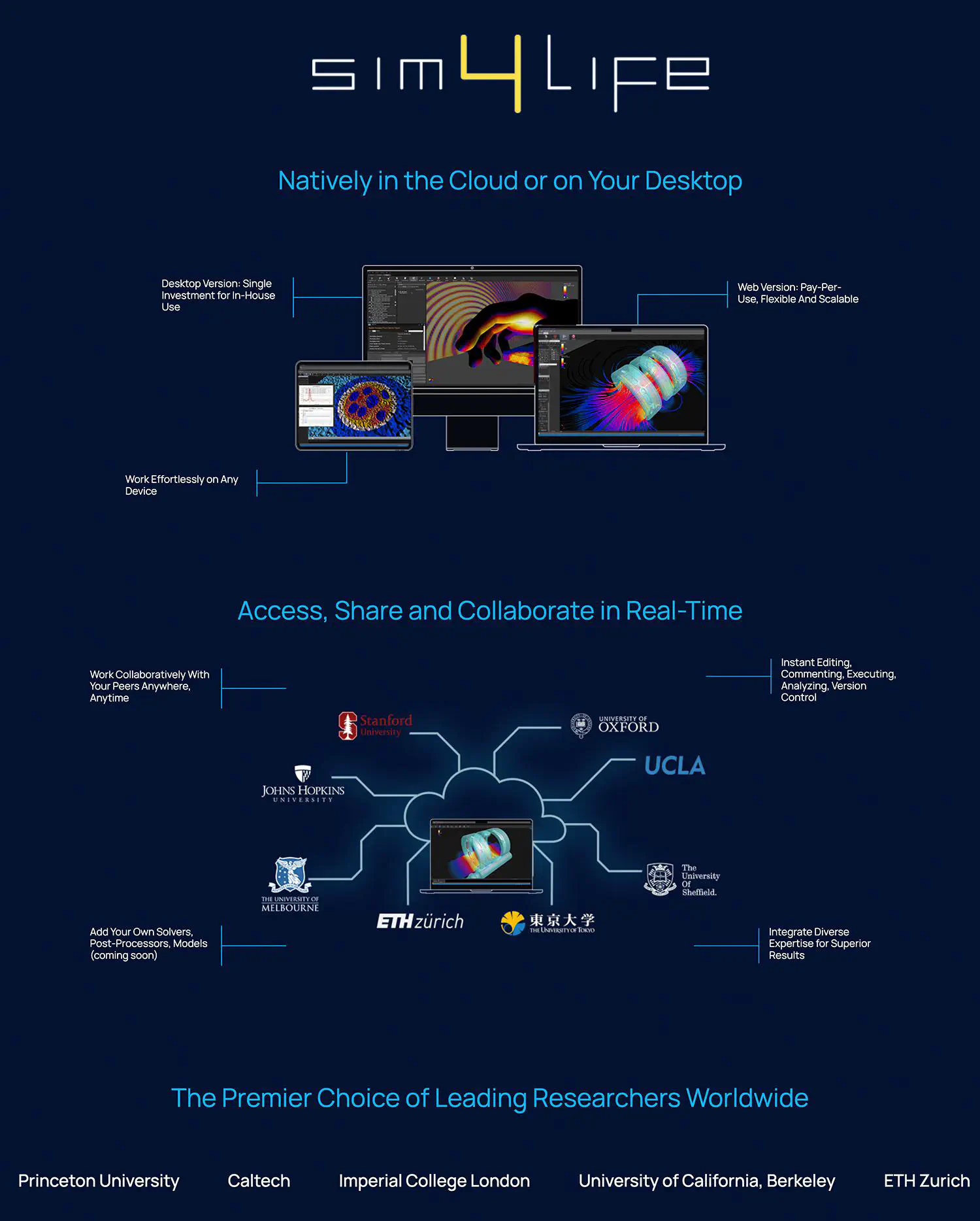
Sim4Life is a third-party tool developed by ZMT Zurich MedTech AG. We do not control or endorse this third-party tool. We do not assume any responsibility or give any assurance for the accuracy, functionality, availability, usability, applicability, or performance of the tools provided by ZMT and the results generated by these third-party tools, nor do we assume any responsibility for any potential issues or damages resulting from their use.
Download the Sim4Life Science flyer here.TI Solutions is dedicated to advancing research into TI-based applications. Through our Early Adopter Program (EAP), we are bringing together a select group of researchers interested in leveraging our investigational TI stimulation device for their studies. The EAP aims to foster exploration of TI’s potential by enabling precise and flexible stimulation capabilities.
Participating researchers will have the opportunity to use our investigational device in their in vitro and in vivo studies, contributing to the growing knowledge base in this field. In return, TI Solutions will gain valuable insights into the needs of the research community, driving the development and refinement of future device specifications.
Researchers interested in joining our Early Adopter Program are encouraged to contact us to schedule a preliminary conference call. Following this discussion, a short written proposal needs to be submitted for consideration. Proposals will be reviewed by our board based on their scientific significance, relevance, originality, and feasibility. Approved projects will then officially enter the EAP.
Please note that all studies admitted to the EAP must receive approval from the relevant regulatory institution overseeing the study. This is a mandatory requirement before our TIBS-R device can be provided for the proposed research project.
TIBS-R is under continuous development, with ongoing improvements and feature expansions. EAP participants have the opportunity to lease an 8-channel device for CHF 500/month, with maintenance and support included in the lease price. The minimum lease period is six months.
Additional options, such as magnetic resonance imaging compatibility and continuous operation via wireless power transfer, are available upon special request.
For groups enrolled in the Early Adopter Program, our team of experts is dedicated to ensuring the optimal use of our TIBS-R device. We provide comprehensive engineering support during the lease period, including troubleshooting, device replacement, and repairs.
In addition, the IT’IS Foundation scientific team can support researchers in developing experiment-specific graphical user interfaces, as well as provide additional services such as personalization and optimization of TI stimulation through simulations and the dedicated TI planning tool. These services need to be budgeted separately from the device costs.
At present, a range of research programs and consortia are being built to advance and focus on exploring TI mechanisms and applications. These initiatives aim to deepen our understanding of TI and accelerate innovation in the field.
Bear With Us!
We are in the process of updating this page to ensure all the information is available for you. Please check back soon!
Thank you for your patience!
Botzanowski B et al. Focal Control of Non-Invasive Deep Brain Stimulation Using Multipolar Temporal Interference. Bioelectron Med. 2025; 11(7), online 27 March. doi:10.1186/s42234-025-00169-6
Cassarà AM et al. Recommendations for the Safe Application of Temporal Interference Stimulation in the Human Brain Part I: Principles of Electrical Neuromodulation and Adverse Effects. Bioelectromagnetics. 2025; 46:e22542. doi:10.1002/bem.22542
Cassarà AM et al. Recommendations for the Safe Application of Temporal Interference Stimulation in the Human Brain Part II: Biophysics, Dosimetry, and Safety Recommendations. Bioelectromagnetics. 2025; 46:e22536. doi:10.1002/bem.22536
Karimi F et al. Safety of Non-Invasive Brain Stimulation in Patients with Implants: A Computational Risk Assessment. J Neural Eng. 2025; 22:016039. doi: 10.1088/1741-2552/ad8efa
Peterchev AV. One’s Trash is Another’s Treasure: Subthreshold Kilohertz Brain Modulation as a Side Effect and as an Intervention. Brain Stimul. 2025; 18(3):P622-623. doi: 10.1016/j.brs.2025.03.004
Proulx CE, Hummel FC. Beyond the Surface: Advancing Neurorehabilitation With Transcranial Temporal Interference Stimulation — Clinical Applications and Future Prospects. Neural Regen Res. 2025; ():10.4103/NRR.NRR-D-24-01573, online 25 March. doi: 10.4103/NRR.NRR-D-24-01573
Caldas-Martinez S et al. Cell-specific effects of temporal interference stimulation on cortical function. Commun Biol. 2024; 7:1076. doi: 10.1038/s42003-024-06728
Liu R et al. Temporal interference stimulation targets deep primate brain. NeuroImage. 2024; 291:120581. doi: 10.1016/j.neuroimage.2024.120581
Vassiliadis P et al. Safety, tolerability and blinding efficiency of non-invasive deep transcranial temporal interference stimulation: First experience from more than 250 sessions. J Neural Eng. 2024; 21:024001. doi: 10.1088/1741-2552/ad2d32
Vieira PG et al. Temporal interference stimulation disrupts spike timing in the primate brain. Nature Commun. 2024; 15:4558. doi: 10.1038/s41467-024-48962
Wang Y et al. The safety and efficacy of applying a high-current temporal interference electrical stimulation in humans. Front Hum Neurosci. 2024; 18:1484593. doi: 10.3389/fnhum.2024.1484593
Budde RB et al. Temporal interference current stimulation in peripheral nerves is not driven by envelope extraction. J Neural Eng. 2023; 20(2):026041. doi: 10.1088/1741-2552/acc6f1
Iszak K et al. Why temporal inference stimulation may fail in the human brain: A pilot research study. Biomedicines. 2023; 11(7):1813. doi: 10.3390/biomedicines11071813
Violante IR et al. Non-invasive temporal interference electrical stimuation of the human hippocampus. Nat Neurosci. 2023; 26:1994–2004. doi: 10.1038/s41593-023-01456-8
Wessel MJ et al. Noninvasive theta-burst stimulation of the human striatum enhances striatal activity and motor skill learning. Nat Neurosci. 2023; 26:2005–2016. doi: 10.1038/s41593-023-01457-7
Acerbo E et al. Focal non-invasive deep-brain stimulation with temporal interference for the suppression of epileptic biomarkers. Front Neurosci. 2022; 16:945221. doi: 10.3389/fnins.2022.945221
Botzanowski B et al. Noninvasive stimulation of peripheral nerves using temporally-interfering electrical fields. Adv Healthc Mater. 2022; 11(17):e2200075. doi: 10.1002/adhm.202200075
Cassarà AM et al. Safety recommendations for temporal interference stimulation in the brain. bioRxiv. 2022.12.15.520077. doi: 10.1101/2022.12.15.52007
Lee S et al. Multipair transcranial temporal interference stimulation for improved focalized stimulation of deep brain regions: A simulation study. Comput Biol Med. 2022; 143:105337. doi: 10.1016/j.compbiomed.2022.105337
Liu R et al. A noninvasive deep brain stimulation method via temporal-spatial interference magneto-acoustic effect: Simulation and experimental validation. IEEE Trans Ultrason Ferroelectr Freq Control. 2022; 69(8):2474-2483. doi: 10.1109/TUFFC.2022.3187748
Piao Y et al. Safety evaluation of employing temporal interference transcranial alternating current stimulation in human studies. Brain Sci. 2022; 12(9):1194. doi: 10.3390/brainsci12091194
Esmaeilpour Z et al. Temporal interference stimulation targets deep brain regions by modulating neural oscillations. Brain Stimul. 2021; 14(1):55-65. doi: 10.1016/j.brs.2020.11.007
Gomez-Tames J et al. Multiscale computational model reveals nerve response in a mouse model for temporal interference brain stimulation. Front Neurosci. 2021; 15:684465. doi: 10.3389/fnins.2021.684465
Howell B, McIntyre CC. Feasibility of interferential and pulsed transcranial electrical stimulation for neuromodulation at the human scale. Neuromodulation. 2021; 24(5):843-853. doi: 10.1111/ner.13137
Missey F et al. Orientation of temporal interference for non-invasive deep brain stimulation in epilepsy. Front Neurosci. 2021; 15:633988. doi: 10.3389/fnins.2021.633988
Sunshine MD et al. Restoration of breathing after opioid overdose and spinal cord injury using temporal interference stimulation. Commun Biol. 2021; 4(1):107. doi: 10.1038/s42003-020-01604-x
von Conta J et al. Interindividual variability of electric fields during transcranial temporal interference stimulation (tTIS). Scientific Reports. 2021; 11:20357. doi.org/10.1038/s41598-021-99749-0
Cao J, Grover P. STIMULUS: Noninvasive dynamic patterns of neurostimulation using spatio-temporal interference. IEEE Trans Biomed Eng. 2020; 67(3):726-737. doi: 10.1109/TBME.2019.2919912
Li J et al. Analytical and experimental investigation of temporal interference for selective neuromuscular activation. IEEE Trans Neural Syst Rehabil Eng. 2020; 28(12):3100-3112. doi: 10.1109/TNSRE.2020.3038025
Mirzakhalili E et al. Biophysics of temporal interference stimulation. Cell Syst. 2020; 11(6):557-572.e5. doi: 10.1016/j.cels.2020.10.004
Alekseichuk I et al. Comparative modeling of transcranial magnetic and electric stimulation in mouse, monkey, and human. Neuroimage. 2019; 194:136‐148. doi:10.1016/j.neuroimage.2019.03.044
Huang Y, Parra LC. Can transcranial electric stimulation with multiple electrodes reach deep targets? Brain Stimul. 2019; 12(1):30‐40. doi:10.1016/j.brs.2018.09.010
Karimi F et al. Computational analysis of non-invasive deep brain stimulation based on interfering electric fields. Phys Med Biol. 2019; 64(23):235010. doi:10.1088/1361-6560/ab5229
Rampersad S et al. Prospects for transcranial temporal interference stimulation in humans: A computational study. Neuroimage. 2019; 202:116124. doi:10.1016/j.neuroimage.2019.116124
Zhu X et al. Multi-Point Temporal Interference Stimulation by Using Each Electrode to Carry Different Frequency Currents. IEEE Access. 2019; 7:168829–168848. doi:10.1109/ACCESS.2019.2947857
Grossman N. Modulation without surgical intervention. Science. 2018;361(6401): 461‐462. doi:10.1126/science.aau4915
Grossman N et al. Translating temporal interference brain stimulation to treat neurological and psychiatric conditions [published correction in JAMA Neurol. 2018; 75(11):1443]. JAMA Neurol. 2018; 75(11):1307‐1308. doi:10.1001/jamaneurol.2018.2760
Halpern CH et al. Letter: Electric beats open new frontiers for deep brain stimulation. Neurosurgery. 2018; 82(1):E19‐E20. doi:10.1093/neuros/nyx482
Negahbani E et al. Targeting alpha-band oscillations in a cortical model with amplitude-modulated high-frequency transcranial electric stimulation. Neuroimage. 2018; 173:3‐12. doi:10.1016/j.neuroimage.2018.02.0052
Vöröslakos M et al. Direct effects of transcranial electric stimulation on brain circuits in rats and humans. Nat Commun. 2018; 9(1):483. doi:10.1038/s41467-018-02928-3
Dmochowski J, Bikson M. Noninvasive neuromodulation goes deep. Cell. 2017; 169(6):977‐978. doi:10.1016/j.cell.2017.05.017
Grossman N et al. Noninvasive deep brain stimulation via temporally interfering electric fields. Cell. 2017; 169(6):1029‐1041.e16. doi:10.1016/j.cell.2017.05.024
Botzanowski B et al. Focal Control of Non-Invasive Deep Brain Stimulation Using Multipolar Temporal Interference. Bioelectron Med. 2025; 11(7), online 27 March. doi:10.1186/s42234-025-00169-6
Cassarà AM et al. Recommendations for the Safe Application of Temporal Interference Stimulation in the Human Brain Part I: Principles of Electrical Neuromodulation and Adverse Effects. Bioelectromagnetics. 2025; 46:e22542. doi:10.1002/bem.22542
Cassarà AM et al. Recommendations for the Safe Application of Temporal Interference Stimulation in the Human Brain Part II: Biophysics, Dosimetry, and Safety Recommendations. Bioelectromagnetics. 2025; 46:e22536. doi:10.1002/bem.22536
Karimi F et al. Safety of Non-Invasive Brain Stimulation in Patients with Implants: A Computational Risk Assessment. J Neural Eng. 2025; 22:016039. doi: 10.1088/1741-2552/ad8efa
Peterchev AV. One’s Trash is Another’s Treasure: Subthreshold Kilohertz Brain Modulation as a Side Effect and as an Intervention. Brain Stimul. 2025; 18(3):P622-623. doi: 10.1016/j.brs.2025.03.004
Proulx CE, Hummel FC. Beyond the Surface: Advancing Neurorehabilitation With Transcranial Temporal Interference Stimulation — Clinical Applications and Future Prospects. Neural Regen Res. 2025; ():10.4103/NRR.NRR-D-24-01573, online 25 March. doi: 10.4103/NRR.NRR-D-24-01573
Caldas-Martinez S et al. Cell-specific effects of temporal interference stimulation on cortical function. Commun Biol. 2024; 7:1076. doi: 10.1038/s42003-024-06728
Liu R et al. Temporal interference stimulation targets deep primate brain. NeuroImage. 2024; 291:120581. doi: 10.1016/j.neuroimage.2024.120581
Vassiliadis P et al. Safety, tolerability and blinding efficiency of non-invasive deep transcranial temporal interference stimulation: First experience from more than 250 sessions. J Neural Eng. 2024; 21:024001. doi: 10.1088/1741-2552/ad2d32
Vieira PG et al. Temporal interference stimulation disrupts spike timing in the primate brain. Nature Commun. 2024; 15:4558. doi: 10.1038/s41467-024-48962
Wang Y et al. The safety and efficacy of applying a high-current temporal interference electrical stimulation in humans. Front Hum Neurosci. 2024; 18:1484593. doi: 10.3389/fnhum.2024.1484593
Budde RB et al. Temporal interference current stimulation in peripheral nerves is not driven by envelope extraction. J Neural Eng. 2023; 20(2):026041. doi: 10.1088/1741-2552/acc6f1
Iszak K et al. Why temporal inference stimulation may fail in the human brain: A pilot research study. Biomedicines. 2023; 11(7):1813. doi: 10.3390/biomedicines11071813
Violante IR et al. Non-invasive temporal interference electrical stimuation of the human hippocampus. Nat Neurosci. 2023; 26:1994–2004. doi: 10.1038/s41593-023-01456-8
Wessel MJ et al. Noninvasive theta-burst stimulation of the human striatum enhances striatal activity and motor skill learning. Nat Neurosci. 2023; 26:2005–2016. doi: 10.1038/s41593-023-01457-7
Acerbo E et al. Focal non-invasive deep-brain stimulation with temporal interference for the suppression of epileptic biomarkers. Front Neurosci. 2022; 16:945221. doi: 10.3389/fnins.2022.945221
Botzanowski B et al. Noninvasive stimulation of peripheral nerves using temporally-interfering electrical fields. Adv Healthc Mater. 2022; 11(17):e2200075. doi: 10.1002/adhm.202200075
Cassarà AM et al. Safety recommendations for temporal interference stimulation in the brain. bioRxiv. 2022.12.15.520077. doi: 10.1101/2022.12.15.52007
Lee S et al. Multipair transcranial temporal interference stimulation for improved focalized stimulation of deep brain regions: A simulation study. Comput Biol Med. 2022; 143:105337. doi: 10.1016/j.compbiomed.2022.105337
Liu R et al. A noninvasive deep brain stimulation method via temporal-spatial interference magneto-acoustic effect: Simulation and experimental validation. IEEE Trans Ultrason Ferroelectr Freq Control. 2022; 69(8):2474-2483. doi: 10.1109/TUFFC.2022.3187748
Piao Y et al. Safety evaluation of employing temporal interference transcranial alternating current stimulation in human studies. Brain Sci. 2022; 12(9):1194. doi: 10.3390/brainsci12091194
Esmaeilpour Z et al. Temporal interference stimulation targets deep brain regions by modulating neural oscillations. Brain Stimul. 2021; 14(1):55-65. doi: 10.1016/j.brs.2020.11.007
Gomez-Tames J et al. Multiscale computational model reveals nerve response in a mouse model for temporal interference brain stimulation. Front Neurosci. 2021; 15:684465. doi: 10.3389/fnins.2021.684465
Howell B, McIntyre CC. Feasibility of interferential and pulsed transcranial electrical stimulation for neuromodulation at the human scale. Neuromodulation. 2021; 24(5):843-853. doi: 10.1111/ner.13137
Missey F et al. Orientation of temporal interference for non-invasive deep brain stimulation in epilepsy. Front Neurosci. 2021; 15:633988. doi: 10.3389/fnins.2021.633988
Sunshine MD et al. Restoration of breathing after opioid overdose and spinal cord injury using temporal interference stimulation. Commun Biol. 2021; 4(1):107. doi: 10.1038/s42003-020-01604-x
von Conta J et al. Interindividual variability of electric fields during transcranial temporal interference stimulation (tTIS). Scientific Reports. 2021; 11:20357. doi.org/10.1038/s41598-021-99749-0
Cao J, Grover P. STIMULUS: Noninvasive dynamic patterns of neurostimulation using spatio-temporal interference. IEEE Trans Biomed Eng. 2020; 67(3):726-737. doi: 10.1109/TBME.2019.2919912
Li J et al. Analytical and experimental investigation of temporal interference for selective neuromuscular activation. IEEE Trans Neural Syst Rehabil Eng. 2020; 28(12):3100-3112. doi: 10.1109/TNSRE.2020.3038025
Mirzakhalili E et al. Biophysics of temporal interference stimulation. Cell Syst. 2020; 11(6):557-572.e5. doi: 10.1016/j.cels.2020.10.004
Alekseichuk I et al. Comparative modeling of transcranial magnetic and electric stimulation in mouse, monkey, and human. Neuroimage. 2019; 194:136‐148. doi:10.1016/j.neuroimage.2019.03.044
Huang Y, Parra LC. Can transcranial electric stimulation with multiple electrodes reach deep targets? Brain Stimul. 2019; 12(1):30‐40. doi:10.1016/j.brs.2018.09.010
Karimi F et al. Computational analysis of non-invasive deep brain stimulation based on interfering electric fields. Phys Med Biol. 2019; 64(23):235010. doi:10.1088/1361-6560/ab5229
Rampersad S et al. Prospects for transcranial temporal interference stimulation in humans: A computational study. Neuroimage. 2019; 202:116124. doi:10.1016/j.neuroimage.2019.116124
Zhu X et al. Multi-Point Temporal Interference Stimulation by Using Each Electrode to Carry Different Frequency Currents. IEEE Access. 2019; 7:168829–168848. doi:10.1109/ACCESS.2019.2947857
Grossman N. Modulation without surgical intervention. Science. 2018;361(6401): 461‐462. doi:10.1126/science.aau4915
Grossman N et al. Translating temporal interference brain stimulation to treat neurological and psychiatric conditions [published correction in JAMA Neurol. 2018; 75(11):1443]. JAMA Neurol. 2018; 75(11):1307‐1308. doi:10.1001/jamaneurol.2018.2760
Halpern CH et al. Letter: Electric beats open new frontiers for deep brain stimulation. Neurosurgery. 2018; 82(1):E19‐E20. doi:10.1093/neuros/nyx482
Negahbani E et al. Targeting alpha-band oscillations in a cortical model with amplitude-modulated high-frequency transcranial electric stimulation. Neuroimage. 2018; 173:3‐12. doi:10.1016/j.neuroimage.2018.02.0052
Vöröslakos M et al. Direct effects of transcranial electric stimulation on brain circuits in rats and humans. Nat Commun. 2018; 9(1):483. doi:10.1038/s41467-018-02928-3
Dmochowski J, Bikson M. Noninvasive neuromodulation goes deep. Cell. 2017; 169(6):977‐978. doi:10.1016/j.cell.2017.05.017
Grossman N et al. Noninvasive deep brain stimulation via temporally interfering electric fields. Cell. 2017; 169(6):1029‐1041.e16. doi:10.1016/j.cell.2017.05.024
Ensuring safety in TI stimulation: Two key questions have been addressed in recent studies:
Two key questions have been addressed in recent studies:
These studies have been described in three recent scientific publications by TI Solutions’ partner organization, the IT’IS Foundation, that combine advanced computational modeling and experimental validation to probe non-invasive brain stimulation (NIBS) safety. The first two articles are companion papers in which quantitative guidelines for the safe application of TI stimulation1,2 are proposed, while the third is an assessment of NIBS safety in the presence of conductive implants3.
The two-part investigation of TI stimulation safety represents the first systematic effort to establish quantitative safety guidelines for this emerging technology. In TI stimulation, unlike in conventional brain stimulation, two high-frequency electric (E-)fields are applied through scalp electrodes at slightly different frequencies (e.g., 10.00 kHz and 10.01 kHz). While these frequencies are themselves too high to directly stimulate neurons, their interaction creates a low-frequency – in this case 10 Hz – modulation envelope that can influence neural activity at targeted locations deep in the brain. Using advanced computational modeling, the IT’IS team systematically simulated various NIBS exposure scenarios, including TI stimulation, transcranial alternating current stimulation (tACS), and deep brain stimulation (DBS), in a detailed model of the head and brain. By matching field exposure magnitudes across the three stimulation modalities, they calculated TI stimulation parameters that produce conditions known to be safe for tACS and DBS and used these to establish thresholds for the safe application of TI stimulation.
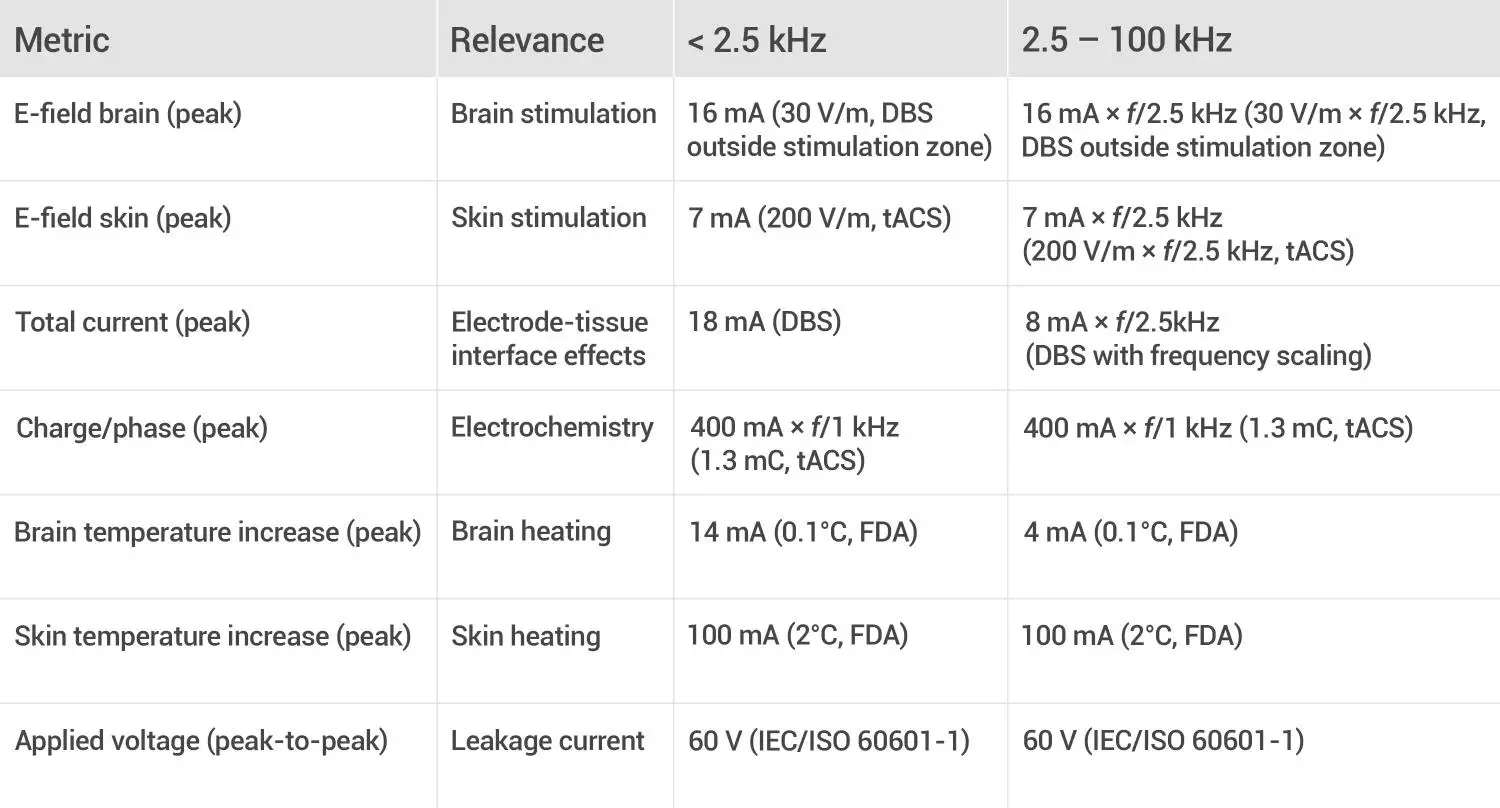
Proposed safety thresholds for TI stimulation by exposure metric (3 cm2 electrodes)2. TI stimulation can be safely used to apply currents of up to 7 mA at frequencies below 2.5 kHz. At frequencies above 2.5 kHz, safe current levels increase linearly with frequency. To avoid unsafe brain tissue heating, no more than 14 mA should be applied at any frequency.
Notably, TI stimulation allows for significantly higher thresholds compared to conventional stimulation methods due to reduced skin sensations at higher frequencies. Also, temperature increases remain well below critical thresholds, with brain tissue heating limited to 0.2°C even at the maximum recommended current. Skin heating stays well below the limits of 2°C set by the U.S. Food and Drug Administration (FDA), ensuring effective blinding conditions and enhancing comfort in experimental and clinical settings. Moreover, TI stimulation permits increased E-field focality compared to conventional stimulation, allowing the targeting of deep brain regions with minimal activation of overlying cortical areas.
The practical implementation of TI stimulation demands careful consideration of several additional parameters to ensure optimal safety and efficacy. Electrode size should be selected based on the intended target depth and desired focality, with sufficient separation between electrodes to prevent unwanted field interactions. Also, TI stimulation requires careful ramping protocols to avoid transient neural effects during stimulation onset. Finally, simulations should be performed prior to applying TI stimulation to improve focality, ensure safety in light of anatomical variation, and account for special circumstances such as the presence of conductive implants.
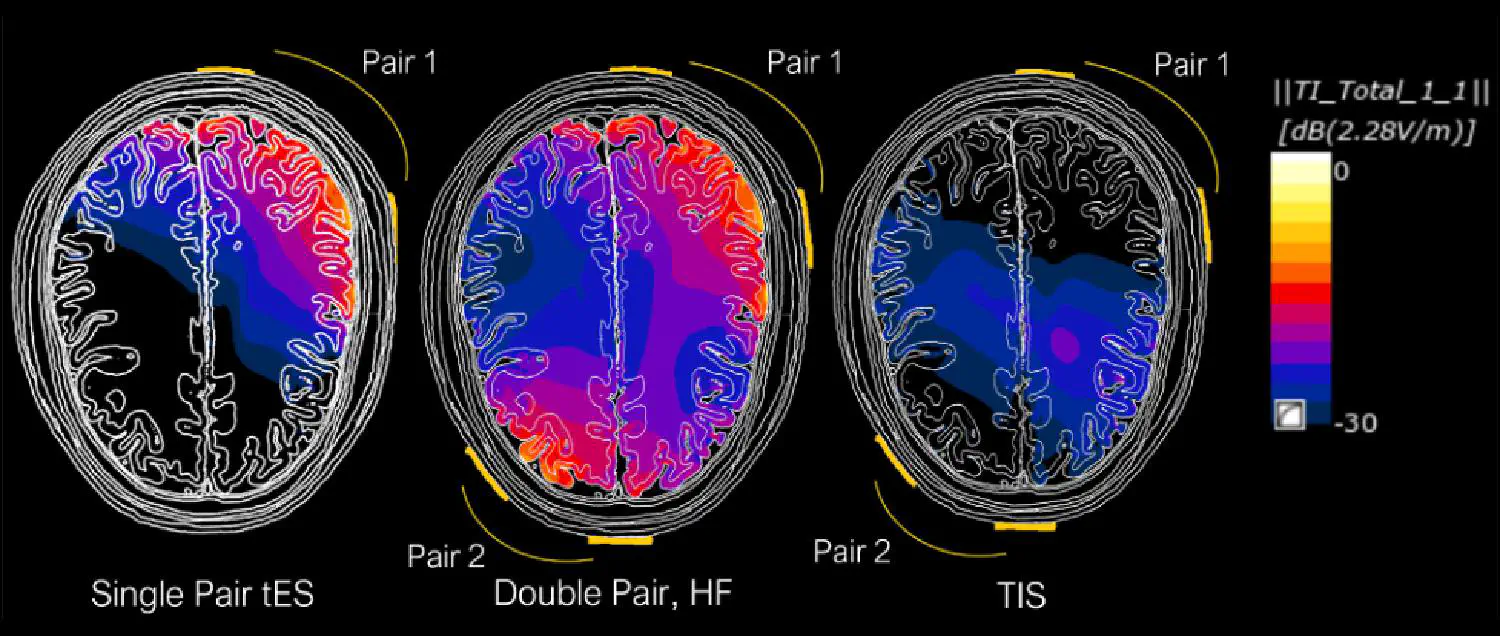
Comparison of TIS and transcranial electrical stimulation (tES). Comparison between conventional single tES (left) and total TI stimulation high frequency E-field exposure (center), as well as the corresponding low-frequency TI stimulation modulation magnitude distribution (right). The total TI stimulation carrier frequency E-field map (center) shows the maximal high-frequency field magnitude achieved for in-phase, constructive interference.
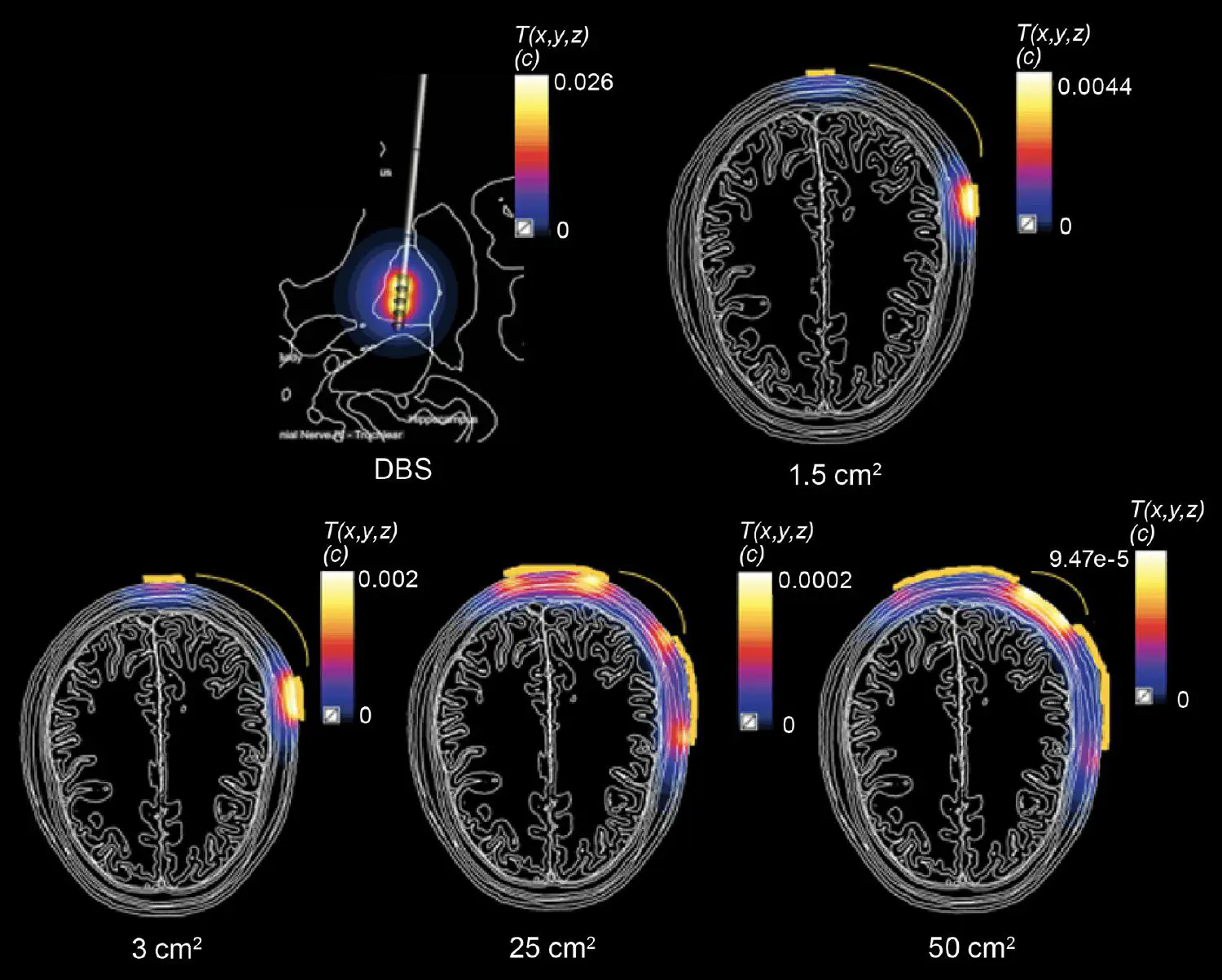
Simulated steady-state temperature increase distributions for DBS and tES. Input current of 1 mA, bipolar electrode configuration (top-left) with various electrode sizes. Heating is principally localized near the electrodes, such that brain heating is minimal for tES. In all cases, heating is well below published thresholds for direct tissue damage.
A parallel investigation was focused on the specific challenges posed by metallic implants, such as DBS electrodes or recording devices, in the context of NIBS3. The analysis revealed that field enhancement effects near implanted conductors can reach factors of up to 10-fold for typical implant geometries, with enhancement scaling proportionally to conductor length in elongated implants. Importantly, while these local field concentrations are significant, they generally remain below neural activation thresholds during NIBS. We also discovered that the formation of scar tissue around implants actually helps reduce enhancement effects in the surrounding brain tissue.
Four critical mechanisms were evaluated:
This comprehensive understanding of field-implant interactions enables precise, patient-specific optimization of stimulation parameters.
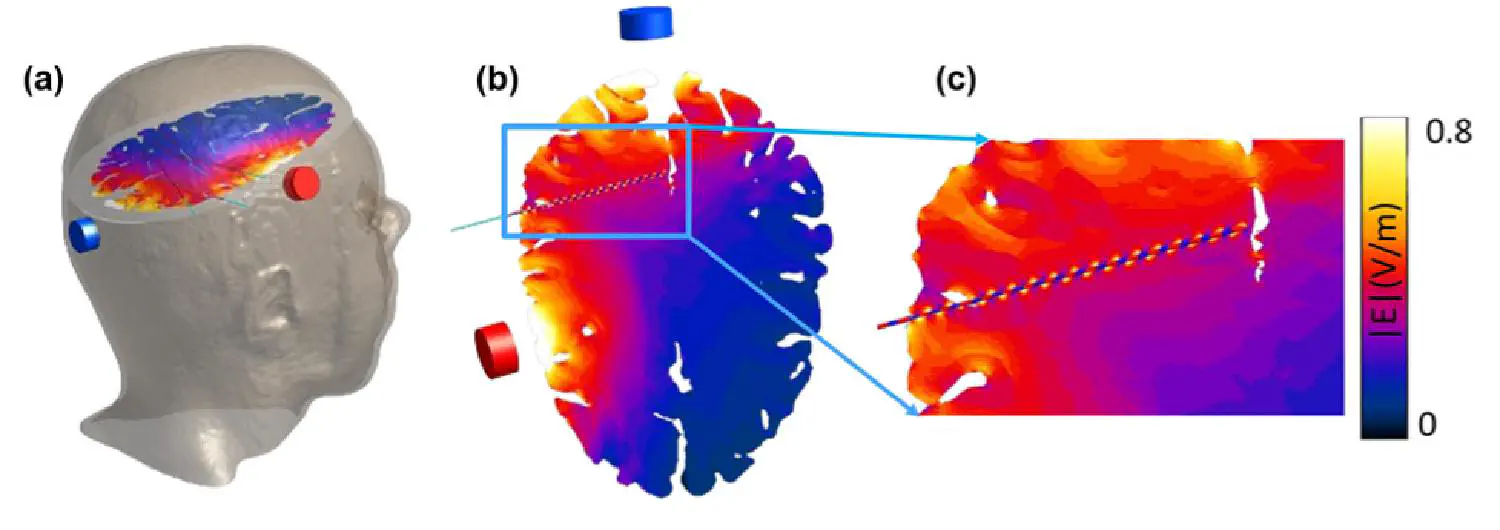
Anatomical model validation of the enhancement factor approach. (a) Illustration of the IXI025 head model (29 different tissue classes, isotropic material properties), with a transverse E-field slice overlay depicting transcranial direct current stimulation (tDCS) with implanted stereoelectroencephalography (SEEG) electrodes, (b) E-field magnitude distribution on a slice containing an SEEG electrode, and (c) zoomed E-field distribution near the SEEG implant.
These scientific insights have been directly incorporated into our TIBS-R system, which includes hardware-level current limiting that automatically enforces safety boundaries while providing real-time impedance monitoring to ensure reliable electrode contact. Working in concert with TIBS-R, TIP – a dedicated platform for TI stimulation planning with TIBS-R – offers a streamlined, web-accessible tool for personalized TI planning and optimization. Finally, Sim4Life provides detailed, subject-specific safety assessments, with particular attention to field-implant interactions. Together, these tools offer researchers and clinicians automated enforcement of safety guidelines, subject-specific and risk-minimized TI stimulation optimization, real-time monitoring and adjustment capabilities, and complete documentation for regulatory compliance.
As brain stimulation applications continue to evolve, research by the IT’IS team ensures they can be delivered safely in research and clinical studies. Through continued research and development, we are committed to advancing the field of NIBS while maintaining the highest safety standards. The TIBS-R system, TIP, and Sim4Life platform provide researchers and clinical scientists with the tools they need to deliver TI stimulation safely and effectively.
TI Solutions AG, Zeughausstrasse 43, 8004 Zurich, Switzerland
+41 44 245 9898
TI Solutions AG was founded in Dec 2019 in Zurich, Switzerland, by the creators of the TI concept and Z43.
Our mission:
Advance TI research by developing high-quality, flexible stimulation devices and innovative planning tools to identify the most effective stimulation methods and therapeutic endpoints for treating neurodegenerative diseases
Support the translation of this research into impactful medical therapies, while developing certified devices and tools that ensure safe, effective, and cost-efficient treatment solutions
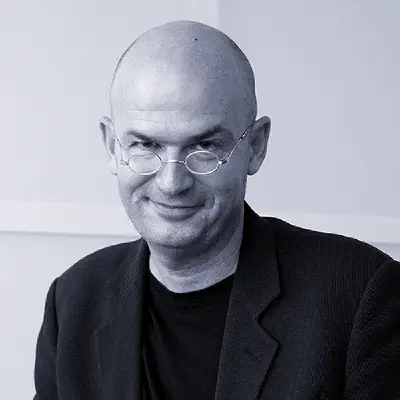








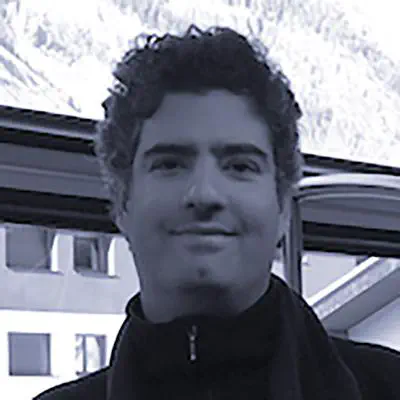






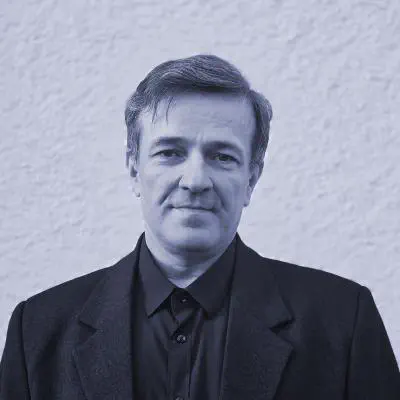





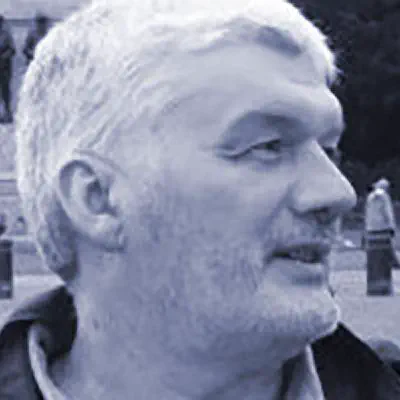



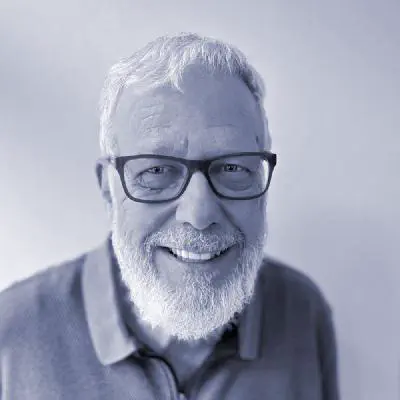

No vacancies at the moment, but we are always growing!
If you are driven, innovative, and eager to make an impact, stay connected and check back for future openings.
We look forward to hearing from you!
While we do not have any open positions at the moment, we are always looking for passionate and talented individuals seeking a challenging opportunity to join our team.
Stay in touch and check back for future openings!
No vacancies at present, please visit our jobs page again soon.
If a profile fits one of the advertized positions, please prepare your complete resume materials (in English) consisting of:
Important: Please ensure that the above are all saved as a single A4 PDF document.
Please email your single PDF application to:
Yvonne Maeder
jobs@z43.swiss
Or by post to:
Zurich43
Yvonne Maeder
Zeughausstrasse 43
8004 Zurich
Switzerland
The information provided on this website is for general informational purposes only. While TI Solutions AG strives to keep the content accurate and up to date, we make no representations or warranties of any kind, express or implied, about the completeness, accuracy, reliability, or availability of the website or the information, products, services, or related graphics contained on the website for any purpose. Any reliance you place on such information is strictly at your own risk.
In no event will TI Solutions AG be liable for any loss or damage, including without limitation, indirect or consequential loss or damage, or any loss or damage arising from loss of data or profits arising out of or in connection with the use of this website.
Through this website, you may be able to link to other websites which are not under the control of TI Solutions AG. We have no control over the nature, content, and availability of those sites. The inclusion of any links does not necessarily imply a recommendation or endorse the views expressed within them.
Questions regarding TI Solutions AG’s products and services should be directed to:
TI Solutions AG
Zeughausstrasse 43
8004 Zurich
Switzerland
+41 44 245 9898
Effective Date: September 13, 2020.
With this Data Protection Statement, we, TI Solutions AG (hereinafter also we, or us), describe how we collect and further process personal data. This Data Protection Statement is not necessarily a comprehensive description of our data processing. It is possible that other data protection statements are applicable to specific circumstances.
The term “personal data” in this Data Protection Statement refers to any information that identifies, or could reasonably be used to identify any person.
If you provide us with personal data of other persons (such as family members, work colleagues), please make sure the respective persons are aware of this Data Protection Statement and only provide us with their data if you are allowed to do so and such personal data is correct.
This Data Protection Statement is in line with the EU General Data Protection Regulation (GDPR). Although the GDPR is a regulation of the European Union (EU), it may be relevant for us. The Swiss data protection legislation (FADP) is heavily influenced by the law of the European Union. In addition, companies outside of the European Union or the European Economic Area (EEA) must comply with the GDPR in certain cases.
The “controller” of data processing as described in this data protection statement (i.e., the responsible person) is:
TI Solutions AG
Zeughausstrasse 43
8004 Zurich
Switzerland
You can notify us of any data protection related concerns using the following contact details: Dr. Nicolas Chavannes, Data Protection Officer, TI Solutions AG, Zeughausstrasse 43, 8004 Zurich, Switzerland; email: info@temporalinterference.com
We primarily process personal data that we obtain from our clients and other business partners as well as other individuals in the context of our business relationships with them or that we collect from users when operating our websites, apps, and other applications.
Insofar as it is permitted to us, we obtain certain personal data from publicly accessible sources (e.g., commercial registers, press, internet) or we may receive such information from affiliated companies of TI Solutions AG, e.g., sales channels.
Apart from data you provided to us directly, the categories of data we receive about you from third parties include, but are not limited to, information from public registers, information in connection with your professional role and activities (e.g., in order to conclude and carry out contracts with your employer), information about you in correspondence and discussions with third parties, credit rating information (if we conduct business activities with you personally), information about you given to us by individuals associated with you (family, consultants, legal representatives, etc.) in order to conclude or process contracts with you or with your involvement (e.g., references, your delivery-address, powers of attorney), information regarding legal regulations such as export restrictions, bank details, information regarding insurances, our distributors and other business partners for the purpose of ordering or delivering services or products to you or by you (e.g., payments made, previous purchases), information about you found in the media or internet (insofar as indicated in the specific case, e.g. in connection with job applications, media reviews, marketing/sales, etc.), your address and any interests and other socio-demographic data (for marketing purposes), data in connection with your use of our websites (e.g., IP address, MAC address of your smartphone or computers, information regarding your device and settings, cookies, date and time of your visit, sites and content retrieved, applications used, referring website, local-ization data).
We primarily use collected data in order to conclude and process contracts with our clients and business partners, in particular in connection with the delivery of near-field instrumentation and simulation tools (i.e., hardware and software) to our clients and the procurement of products and services from our suppliers and sub-contractors, as well as in order to comply with our domestic and foreign legal obligations. You may be also affected by our data processing in your capacity as an employee of such a client or business partner.
In addition, in line with applicable Swiss law and where appropriate, we may process your personal data for the following purposes, which are in our (or, as the case may be, any third parties’) legitimate interest, such as:
If you have given us your consent to process your personal data for certain purposes (for example when registering to receive our newsletter), we will process your personal data within the scope of and based on this consent, unless we have another legal basis, provided that we require one. Consent given can be withdrawn at any time, but this does not affect data processed prior to withdrawal.
We typically use “cookies” and similar techniques on our websites, which allow for an identification of your browser or device. A cookie is a small text file that is sent to your computer and automatically saved by the web browser on your computer or mobile device, when you visit our website. If you revisit our website, we may recognize you, even if we do not know your identity. Besides cookies that are only used during a session and deleted after your visit of the website (“session cookies”), we may use cookies in order to save user configurations and other information for a time period of two years (“permanent cookies”). Notwithstanding the foregoing, you may configure your browser settings in a way that it rejects cookies, only saves them for one session or deletes them prematurely. Most browsers are preset to accept cookies. We use permanent cookies for the purpose of saving user configuration (e.g., language, automated log in). If you block cookies, it is possible that certain functions (such as, e.g., language settings, ordering processes) are no longer available to you.
In accordance with applicable law, we may include visible and invisible image files in our newsletters and other marketing e-mails. If such image files are retrieved from our servers, we can determine whether and when you have opened the e-mail, so that we can measure and better understand how you use our offers and customize them. You may disable this in your e-mail program, which will usually be a default setting.
By using our websites or consenting to the receipt of newsletters and other marketing e-mails you agree to our use of such techniques. If you object, you must configure your browser or e-mail program accordingly.
We may use Google Analytics or similar services on our website. These are services provided by third parties, which may be located in any country worldwide (in the case of Google Analytics Google LLC is in the U.S., www.google.com) and which allow us to measure and evaluate the use of our website (on an anonymized basis). For this purpose, permanent cookies are used, which are set by the service provider. The service provider does not receive (and does not retain) any personal data from us, but the service provider may track your use of the website, combine this information with data from other websites you have visited and which are also tracked by the respective service provider and may use this information for its own purposes (e.g., to controlling of advertisements). If you have registered with the service provider, the service provider will also know your identity. In this case, the processing of your personal data by the service provider will be conducted in accordance with its data protection regulations. The service provider only provides us with data on the use of the respective website (but not any personal information of you).
In the context of our business activities and in line with the purposes of the data processing set out in Section 3, we may transfer data to third parties, insofar as such a transfer is permitted and we deem it appropriate, in order for them to process data for us or, as the case may be, their own purposes. In particular, the following categories of recipients may be concerned:
Certain Recipients may be within Switzerland but they may be located in any country worldwide. In particular, you must anticipate your data to be transmitted to any country in which TI Solutions AG is represented by affiliates, branches or other offices as well as to other countries in Europe and the USA where our sales agents and service providers are located. If we transfer data to a country without adequate legal data protection, we ensure an appropriate level of protection as legally required by way of using appropriate contracts (or binding corporate rules or we rely on the statutory exceptions of consent, performance of contracts, the establishment, exercise or enforcement of legal claims, overriding public interests, published personal data or because it is necessary to protect the integrity of the persons concerned.
We process and retain your personal data as long as required for the performance of our contractual obligation and compliance with legal obligations or other purposes pursued with the processing, i.e., for the duration of the entire business relationship (from the initiation, during the performance of the contract until it is terminated) as well as beyond this duration in accordance with legal retention and documentation obligations. Personal data may be retained for the period during which claims can be asserted against our company or insofar as we are otherwise legally obliged to do so or if legitimate business interests require further retention (e.g., for evidence and documentation purposes). As soon as your personal data are no longer required for the above-mentioned purposes, they will be deleted or anonymized, to the extent possible. In general, shorter retention periods of no more than twelve months apply for operational data (e.g., system logs).
We have taken appropriate technical and organizational security measures to protect your personal data from unauthorized access and misuse such as IT and network security solutions, access controls and restrictions, and encryption of data carriers and transmissions.
In accordance with and as far as provided by applicable law (as is the case where the GDPR is applicable), you have the right to access, rectification, and erasure of your personal data, the right to restriction of processing or to object to our data processing in addition to right to receive certain personal data for transfer to another controller (data portability). Please note, however, that we reserve the right to enforce statutory restrictions on our part, for example if we are obliged to retain or process certain data, have an overriding interest (insofar as we may invoke such interests) or need the data for asserting claims. If exercising certain rights will incur costs on you, we will notify you thereof in advance. We have already informed you of the possibility to withdraw consent in Section 3 above. Please further note that the exercise of these rights may be in conflict with your contractual obligations and this may result in consequences such as premature contract termination or involve costs. If this is the case, we will inform you in advance unless it has already been contractually agreed upon.
In general, exercising these rights requires that you are able to prove your identity (e.g., by a copy of identification documents where your identity is not evident otherwise or can be verified in another way). In order to assert these rights, please contact us at the address provided in Section 1 above.
In addition, every data subject has the right to enforce his/her rights in court or to lodge a complaint with the competent data protection authority. The competent data protection authority of Switzerland is the Federal Data Protection and Information Commissioner www.edoeb.admin.ch.
We may amend this Data Protection Statement at any time without prior notice. The current version published on our website shall apply. If the Data Protection Statement is part of an agreement with you, we will notify you by e-mail or other appropriate means in case of an amendment.